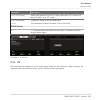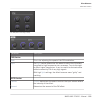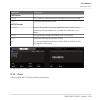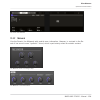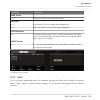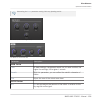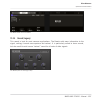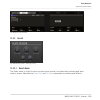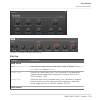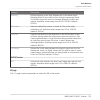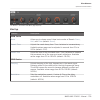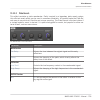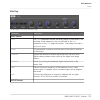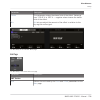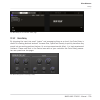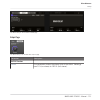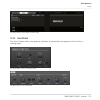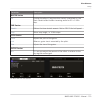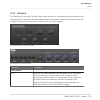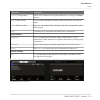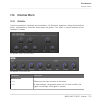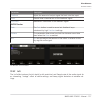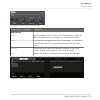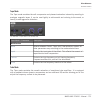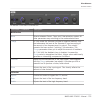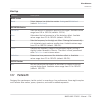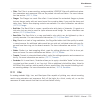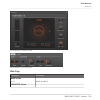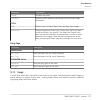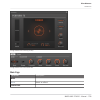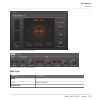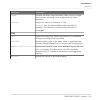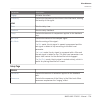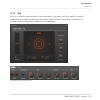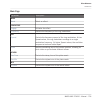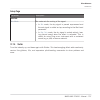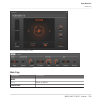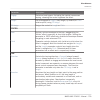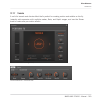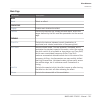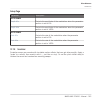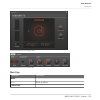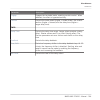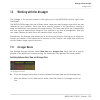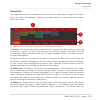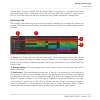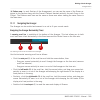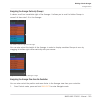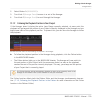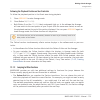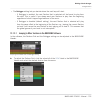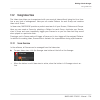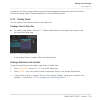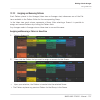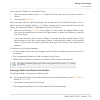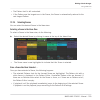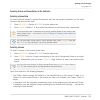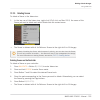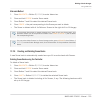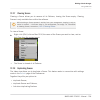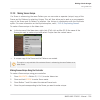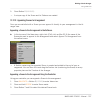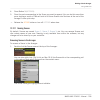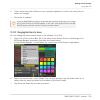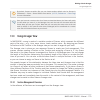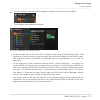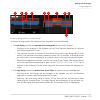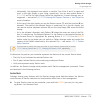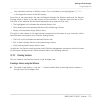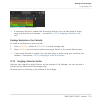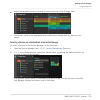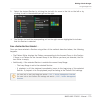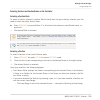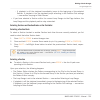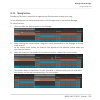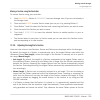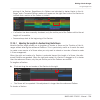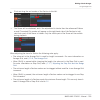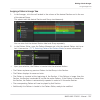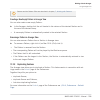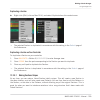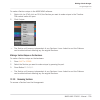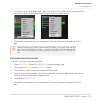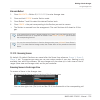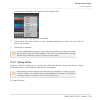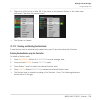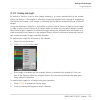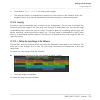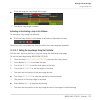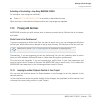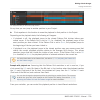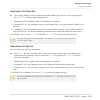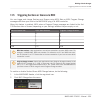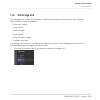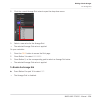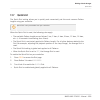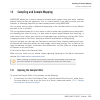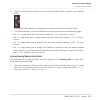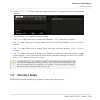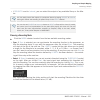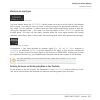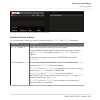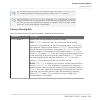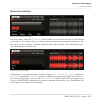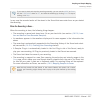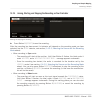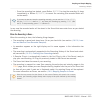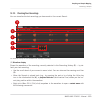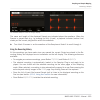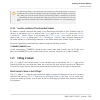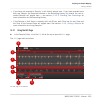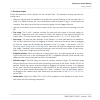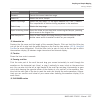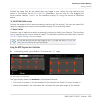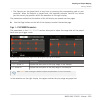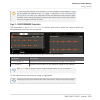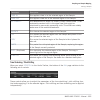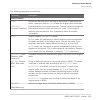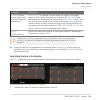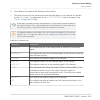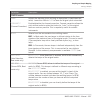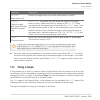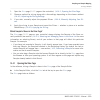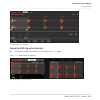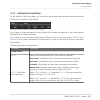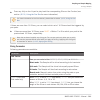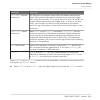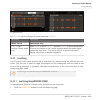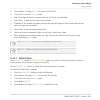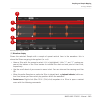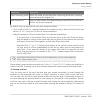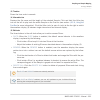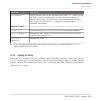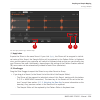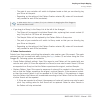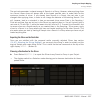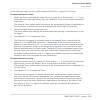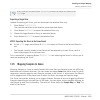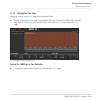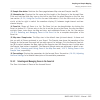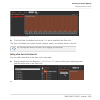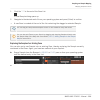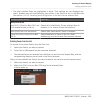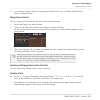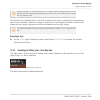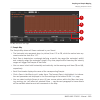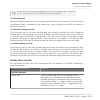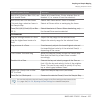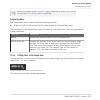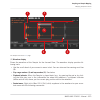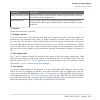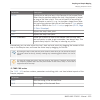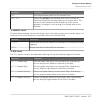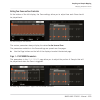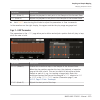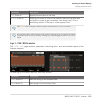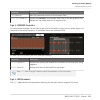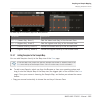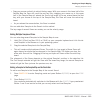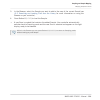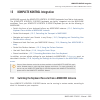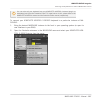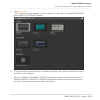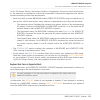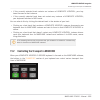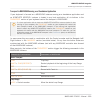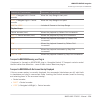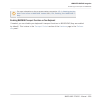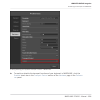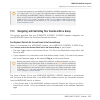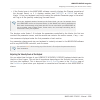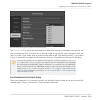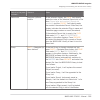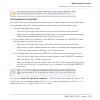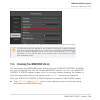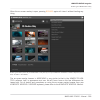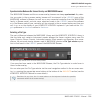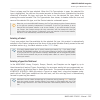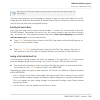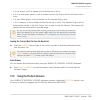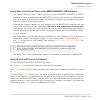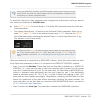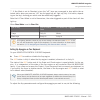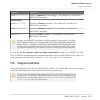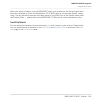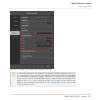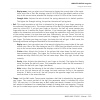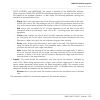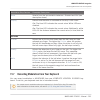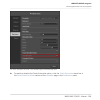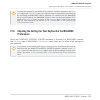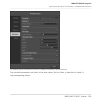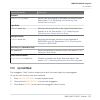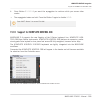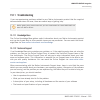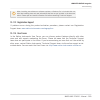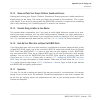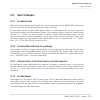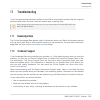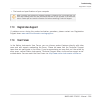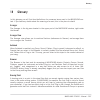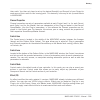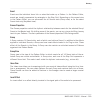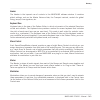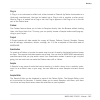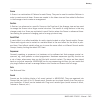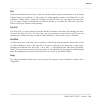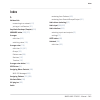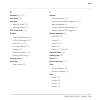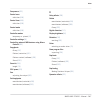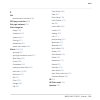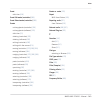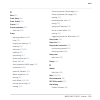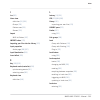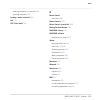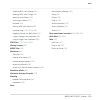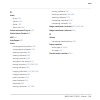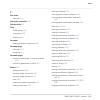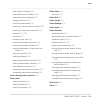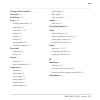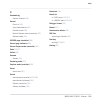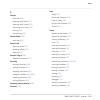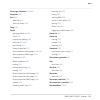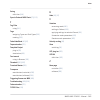Native Instruments Maschine Manual
Summary of Maschine
Page 1
Manual.
Page 2
The information in this document is subject to change without notice and does not represent a commitment on the part of native instruments gmbh. The software described by this docu- ment is subject to a license agreement and may not be copied to other media. No part of this publication may be copied...
Page 3
Native instruments gmbh schlesische str. 29-30 d-10997 berlin germany www.Native-instruments.De native instruments north america, inc. 6725 sunset boulevard 5th floor los angeles, ca 90028 usa www.Native-instruments.Com native instruments k.K. Yo building 3f jingumae 6-7-15, shibuya-ku, tokyo 150-00...
Page 4
Table of contents 1 welcome to maschine .............................................................................................23 1.1 maschine documentation .......................................................................................................... 24 1.1.1 maschine getting star...
Page 5
2.3.6 pinning a mode on your controller ............................................................................. 57 2.3.7 using two or more hardware controllers ................................................................... 58 2.4 native kontrol standard ......................................
Page 6
2.6.10 preferences – colors page ......................................................................................... 109 2.7 integrating maschine into your midi setup ............................................................................... 111 2.7.1 connecting external midi equipment .....
Page 7
3.3 additional browsing tools .......................................................................................................... 152 3.3.1 loading the selected files automatically .................................................................. 153 3.3.2 auditioning your samples .............
Page 8
4.2 managing sounds ....................................................................................................................... 194 4.2.1 loading sounds ......................................................................................................... 196 4.2.2 pre-listening to so...
Page 9
5 playing on your controller .........................................................................................239 5.1 adjusting your pads ................................................................................................................... 239 5.1.1 the pad view in the software...
Page 10
5.6.6 deleting a lock snapshot .......................................................................................... 283 5.6.7 triggering lock snapshots via midi ........................................................................... 284 6 working with plug-ins ................................
Page 11
6.3.2 using the vst/au plug-in parameters ....................................................................... 325 6.3.3 setting up your own parameter pages ...................................................................... 326 6.3.4 using vst/au plug-in presets .................................
Page 12
7.4.4 editing selected events/notes ................................................................................... 384 7.4.5 deleting events/notes ............................................................................................... 390 7.4.6 cut, copy, and paste events/notes ...........
Page 13
7.8.3 importing midi to patterns ........................................................................................ 437 8 audio routing, remote control, and macro controls ....................................................446 8.1 audio routing in maschine .......................................
Page 14
9.2.3 selecting channel strips ........................................................................................... 509 9.2.4 managing your channels in the mixer ....................................................................... 510 9.2.5 adjusting settings in the channel strips ...........
Page 15
10.2.3 kick – dusty .............................................................................................................. 551 10.2.4 kick – grit ................................................................................................................. 552 10.2.5 kick – rasper ..........
Page 16
10.5.2 tom – fractal ............................................................................................................ 598 10.5.3 tom – floor ................................................................................................................ 602 10.5.4 tom – high ...............
Page 17
12.1.1 compressor ............................................................................................................... 657 12.1.2 gate ........................................................................................................................... 661 12.1.3 transient master .....
Page 18
12.5.2 grain delay ................................................................................................................ 709 12.5.3 grain stretch ............................................................................................................. 712 12.5.4 resochord ...............
Page 19
13.2.4 selecting scenes ....................................................................................................... 760 13.2.5 deleting scenes ......................................................................................................... 762 13.2.6 creating and deleting scene ...
Page 20
13.3.14 looping ...................................................................................................................... 796 13.3.14.1 setting the loop range in the software .....................................................796 13.3.14.2 setting the loop range using the controller ....
Page 21
14.4.5 applying the slicing ................................................................................................... 853 14.5 mapping samples to zones ........................................................................................................ 859 14.5.1 opening the zone page ...
Page 22
16 appendix: tips for playing live ..................................................................................931 16.1 preparations ............................................................................................................................... 931 16.1.1 focus on the hardware ...
Page 23
1 welcome to maschine thank you for buying maschine! Maschine is a groove production studio that implements the familiar working style of classi- cal groove boxes along with the advantages of a computer based system. Maschine is ideal for making music live, as well as in the studio. It’s the hands-o...
Page 24
1.1 maschine documentation native instruments provide many information sources regarding maschine. The main docu- ments should be read in the following sequence: 1. Maschine getting started 2. Maschine manual (this document) additional documentation sources provide you with details on more specific ...
Page 25
1.1.3 maschine hardware control reference the maschine hardware control reference provides an overview of a maschine project, the quick access options performed using the maschine hardware controller, and lots of key- board shortcuts. 1.1.4 controller editor manual besides using your maschine hardwa...
Page 26
1.2 document conventions this section introduces you to the signage and text highlighting used in this manual. This man- ual uses particular formatting to point out special facts and to warn you of potential issues. The icons introducing these notes let you see what kind of information is to be expe...
Page 27
▪ references to keys on your computer’s keyboard you’ll find put in square brackets (e.G., “press [shift] + [enter]”). ► single instructions are introduced by this play button type arrow. → results of actions are introduced by this smaller arrow. Naming convention throughout the documentation we wil...
Page 28
1 2 3 4 5 6 7 8 1 2 3 4 5 6 7 8 the unlabeled buttons and knobs on the maschine studio controller. For better reference, we applied a special formatting here: throughout the document, the ele- ments are capitalized and numbered, so the buttons above the displays are written button 1 to button 8, whi...
Page 29
Click patterns in the grid to assign them to the scene (assigned patterns are brightly lit). To un-assign an assigned pattern, simply click on it. To create new patterns in this view, double- click in an empty grid cell. ▪ a new button has been added for toggling between ideas and arranger views. Ke...
Page 30
Using reaktor with expansion packs improvement has also been made where expansion packs which use reaktor 5 will now be automatically loaded into reaktor 6 if only reaktor 6 or reaktor 6 player is installed. Welcome to maschine new features in maschine 2.6.5 maschine studio - manual - 30
Page 31
2 basic concepts this chapter will reintroduce you to maschine’s main elements and terminology and explain how they relate to one another. You will also learn how to set up your audio interface and how to connect midi devices. Before reading this chapter it is strongly recommended that you read the ...
Page 32
Project a project contains all data needed for a song: groups with their patterns, all scenes and all settings, modulation, effects, routings, sounds and samples. It’s like a snapshot of the entire state of maschine. Please read the maschine getting started for a complete overview of the maschine pr...
Page 33
Scene a scene is a combination of patterns for each group. They can be used to combine patterns in order to create musical ideas. Scenes are created in the ideas view and then added to sections in the arranger view to create an arrangement. Refer to chapter ↑ 13.3, using arranger view for more infor...
Page 34
Details on using effects in maschine, refer to chapter ↑ 11, using effects . You will find an exhaustive description of all internal effects included in maschine in chapter ↑ 12, effect reference . Please refer to chapter ↑ 18, glossary at the end of this manual for more definitions! 2.2 adjusting t...
Page 35
The view submenu in the maschine menu. Full screen view is also available from your computer keyboard via [ctrl]+[f] (mac os x: [cmd]+[f]). 2.2.2 showing/hiding the browser ► click the browser button (with the magnifier symbol) in the header to show and hide the browser. You can also select browser ...
Page 36
2.2.3 switching between arrange view and mix view ► click the mix view button at the top left of the arranger to switch between the arrange view and the mix view. You can also select arranger or mixer from the view menu in the application menu bar or from the view submenu in the maschine menu. The m...
Page 37
Minimizing/maximizing the mixer. 2.2.5 showing/hiding the control lane when maschine is in arrange view, you can show/hide the control lane under the pattern editor: ► click the arrow button on the bottom left of the pattern editor to show and hide the con- trol lane. Basic concepts adjusting the ma...
Page 38
Click the arrow button at the bottom left of the pattern editor to show/hide the control lane. 2.3 common operations this sections introduces a few very common operations in maschine you will encounter in numerous situations. 2.3.1 setting the focus on a group or a sound to display the content and p...
Page 39
We show here how to put sounds and groups in focus when the maschine software is in arrange view (default view). For instructions on putting sounds and groups in focus in mix view, please refer to chapter ↑ 9.2.3, selecting channel strips . Setting the focus on a group ► to put a group in focus, cli...
Page 40
The focused group is highlighted and the pattern editor show its content. If the desired group does not appear in the group list, use the scroll bar at the right end of the arranger or turn your mouse wheel while hovering the arranger to display any hidden groups. You can also extend the arranger by...
Page 41
1. Set the focus to the group containing the desired sound by clicking it in the group list on the left of the arranger (see above). The focused group is highlighted. The pattern editor displays the sounds and patterns of that group. 2. Click the desired sound slot in the sound list of the pattern e...
Page 42
If the desired sound does not appear in the sound list, use the scroll bar at the right end of the pattern editor or turn your mouse wheel while hovering the pattern editor to display any hidden sounds. You can also select multiple sounds at once to apply changes to all of them. See sec- tion ↑ 4.1....
Page 43
2.3.2 switching between the master, group, and sound level at any time you can quickly switch the control area between the parameters of the master, the focused group, and the focused sound. Click the desired tab to switch the display of the control area. ► click the master , group or sound tab in t...
Page 44
2.3.3 switching between ideas view and arranger view at any time you can quickly switch between the ideas view and the arranger view, using the arranger button. Click the arrangement button to toggle between the ideas view and arranger view. ► click the arranger button to tab in the top left corner....
Page 45
To select a particular plug-in or a particular set of channel properties, you first need to display the parameters of the master, the desired group or the desired sound. 1. To display the parameters of a particular group or sound, put it in focus by clicking it in the group list or sound list, respe...
Page 46
Selecting a plug-in 1. At the far left of the control area, click the little plug-in icon to display the plug-ins: the icon lights up. The plug-in list appears in the left part of the control area, showing a stack of all plug-ins loaded in the selected sound, group or the master: 2. Click the desire...
Page 47
The parameter pages of the sound’s output properties: audio (currently displayed), aux, and midi. If all page names cannot be displayed at once at the top of the parameter area, two small ar- rows are displayed on the left to click through the pages: ► click the left or right arrow to access additio...
Page 48
Element action knob: click the knob and drag your mouse vertically to change the parameter value. Hold [shift] on your computer keyboard and drag your mouse to adjust the value in finer increments. Button: click the button to switch its state. When the button is enabled, it shows a small colored led...
Page 49
2. At the top left of your controller, press the channel button to display the channel prop- erties or the plug-in button to display the plug-in slots of the selected sound, group or the master. 3. Press button 1 ( master ), button 2 ( group ) or button 3 ( sound ) to display the plug- ins and chann...
Page 50
5. Use the page buttons left of the displays to navigate through the parameter pages of the selected channel properties or plug-in: moreover, if there is another page available to the left or to the right of the current page, the corresponding page button will be half lit on your controller. 6. Use ...
Page 51
1. Hold navigate to enter navigate mode (or pin it by pressing navigate + button 1). 2. Press the channel button to display the channel properties or the plug-in button to display the plug-in slots of the selected sound, group or the master. 3. Press button 5/6 to navigate the channel properties or ...
Page 52
► press and hold navigate to enter navigate mode. You can also pin navigate mode by pressing navigate + button 1 above the left display so that your controller stays in nav- igate mode when you release navigate — see section ↑ 2.3.6, pinning a mode on your controller . The navigate mode now has two ...
Page 53
Action shortcut show/hide the browser press button 5 ( browser ) show/hide the control lane press button 6 ( mod ) maximize/minimize the mixer press button 7 ( mixer ) zoom arranger in/out turn knob 1 or press pad 14 / 10 scroll arranger left/right turn knob 2 or press pad 9 / 11 zoom pattern editor...
Page 54
▪ fully lit pads indicate available actions. ▪ dim lit pads indicate actions currently not available (e.G., scrolling left in the pattern edi- tor when it is already at full left). ▪ unlit pads have no function. When your controller is in navigate mode and button 2 ( page nav ) is enabled, your cont...
Page 55
The page navigation mode on your controller. The page navigation mode allows you to navigate the parameter pages available in the channel properties and plug-ins of the various channels (sounds, groups, and master) in your project. Except for the button 2 ( page nav ) — which allows you to switch ba...
Page 56
Step undo step undo/redo is the classic undo/redo found in most applications. It cancels or re-executes each single action you have performed. In the software use the following keyboard shortcuts for the step undo and step redo func- tions: ► to cancel your last action (step undo), press [ctrl]+[shi...
Page 57
► on your controller, perform the take undo operation by pressing undo . To perform the take redo operation, press redo . ► on your controller, perform the step undo operation by pressing shift + undo . To per- form the step redo operation, press shift + redo . Take undo is available in following si...
Page 58
► to unpin a mode (i.E. Make it a temporary mode again), press its mode button + button 1 again. → now the mode will only be active as long as you hold the mode button. Here is a list of all buttons on your controller that you can pin by pressing button 1 simultane- ously: ▪ all buttons in the colum...
Page 59
Click the controller menu (left) or the controller submenu in the maschine menu (right) and select the controller you want to use (windows depicted). Hardware on the controller you want to use with the maschine software, do the following: ▪ maschine studio controller: press shift + plug-in , turn th...
Page 60
▪ support of komplete kontrol s-series features such as the light guide. This means that instruments supporting nks can be found in the maschine browser next to your komplete instruments. All of their presets are fully tagged, so you can use filters to search for sounds from all of your nks and komp...
Page 61
► to add a kontakt instrument with nks support to your maschine library, drag the instrument folder onto the maschine browser. → the kontakt instrument is now available in the library pane of the maschine brows- er. The maschine library and the kontakt browser reference the instrument files con- tai...
Page 62
Instrument plug-ins effect plug-ins internal plug-ins sampler, drumsynths maschine internal effects native instruments plug- ins vst/au instrument plug-ins from native instruments’ range of products vst/au effect plug-ins from native instruments’ range of products nks and third- party plug-ins nks a...
Page 63
Please refer to the documentation included with your host software. If you did not install the plug-ins when installing the maschine software, please refer to the setup guide available from the documentation folder in the maschine software installation folder. 2.5.1 differences between stand-alone a...
Page 64
▪ how to route maschine to multiple outputs in ableton live: http://www.Native-instruments.Com/knowledge/questions/1705 ▪ how to route maschine to multiple outputs in cubase: http://www.Native-instruments.Com/knowledge/questions/1707 ▪ how to route maschine to multiple outputs in pro tools: http://w...
Page 65
Switching instances using the controller to switch from one maschine instance to another: 1. Press shift + plug-in . 2. Turn the jog wheel to select the desired instance. 3. Press button 4 to load that instance. You can also use knob 5 or button 5 and 6 to select the desired instance, and button 8 t...
Page 66
▪ all buttons in the transport section except rec , shift , and grid control your host ap- plication via midi. ▪ all other elements control the maschine plug-in instance. This allows you to simultaneously control the transport functions of your host and the various elements of your maschine project!...
Page 67
Preferences… in the file menu of the application menu bar (windows depicted), and in the file submenu of the ma- schine menu. The following pages are available in the preferences panel: ▪ general: see ↑ 2.6.1, preferences – general page . ▪ audio: see ↑ 2.6.2, preferences – audio page . ▪ midi: see ...
Page 68
The preferences – general page. Setting description startup reload last project if this option is checked, the last project you worked on will automatically load the next time you start maschine. Recording audio basic concepts preferences maschine studio - manual - 68.
Page 69
Setting description prefer project folder if this checkbox is marked, the samples you record will be put in a subdirectory of the folder where your project is saved. If not, your recordings will be saved in the generic recordings folder in your standard user directory (see section ↑ 2.6.4, preferenc...
Page 70
Setting description enabled check this box to activate the metronome. You can also enable the metronome by clicking the metronome button in the maschine header — see section ↑ 7.2.3, using the metronome . Auto-enable when recording auto-enable option automatically turns on the metronome when you sta...
Page 71
Setting description input quantize the input quantization setting can be set to one of the following modes: none : input quantization is disabled. Events you play or record on the pads are not quantized. Record : input quantization is applied only when you record the pads. Play/rec : input quantizat...
Page 72
1. Open the general page of the preferences by clicking preferences… in the maschine menu (mac os x) or file menu (windows) of the application menu bar, or in the file sub- menu of the maschine menu. 2. Click the allow usage data tracking checkbox to enable or disable user data tracking. Usage data ...
Page 73
Preferences – audio page. Setting description interface driver select your audio driver here. Device this allows you to choose from the available devices if you have connected more than one audio interface. Basic concepts preferences maschine studio - manual - 73.
Page 74
Setting description status this shows you whether your audio interface is currently running. Sample rate this displays the selected sample rate of your audio interface. Please restart maschine after changing the sample rate. Asio config (windows only) click open panel to access specific controls rel...
Page 75
Setting description inputs by clicking inputs , you can define which inputs on your audio interface should be used for the four stereo inputs of maschine. Select the inputs of your audio interface on the right column by clicking the fields: you will be presented with a drop-down menu with all the av...
Page 76
The preferences – midi page. Basic concepts preferences maschine studio - manual - 76.
Page 77
Setting description sync mode off : no midi sync mode is selected. Master (send clock) : if maschine is running as a stand-alone application, it can also send a midi clock signal to any device that is capable of receiving midi clock. This could be hardware such as a drum machine, another groovebox, ...
Page 78
Setting description inputs clicking inputs displays a list of all the available midi inputs of your system. You can activate/deactivate each input by clicking the fields in the status column, which displays the current status of the corresponding port. Outputs clicking outputs displays a list of all...
Page 79
The preferences – default page. Basic concepts preferences maschine studio - manual - 79.
Page 80
Setting description project standalone here you can select a project to load automatically when you start a new project in maschine used as a stand-alone application. The field displays the location of the template project selected for use. Click the folder icon to select another template project. A...
Page 81
Setting description duplicate scene only only the scene is duplicated. The result is a new unlinked scene with the same patterns referenced. Scene and patterns the scene itself and additionally all patterns are duplicated. The new scene and patterns are now completely independent from the originals....
Page 82
At the top of the page, the factory and user buttons allow you to switch between the factory pane and the user pane. Factory pane ► to display the factory pane, click the factory button at the top of the library page. The preferences panel – the library page’s factory pane. Basic concepts preference...
Page 83
The factory pane shows all factory libraries available. These includes the maschine factory library, libraries imported from other ni products, as well as installed maschine expan- sions. These libraries will appear in the factory view of the browser’s library pane. Element description location colu...
Page 84
The preferences panel – the library page’s user pane. The user pane shows all user libraries currently used. These include maschine’s standard user directory as well as any other user directory you might have defined. These libraries will appear in the user view of the browser’s library pane. Basic ...
Page 85
Element description location column shows the path of each library. If you have moved any library to another location on your computer, click the folder icon on the left of that library and select its new path. Alias column shows the alias stored for each library. Click an alias to edit it. Defining...
Page 86
The user content folder can neither be renamed nor removed from the list. You can modify its path in the location column. Standard user directory cannot be removed the standard user directory can neither be renamed nor removed from the list in the user pane of the library page in the preferences pan...
Page 87
1. Click cancel in the updating database dialog to interrupt the scan. A cancel rescan dialog opens up asking you to confirm that you want to cancel the scan: the dialog warns you that cancelling the scan may lead to inconsistencies or missing items in your maschine library. 2. If you still want to ...
Page 88
Adding folders to the user library in the user pane of the library page, you can add other folders to the user content of your ma- schine library. To do this: 1. Click add at the bottom of the pane. A folder selection dialog opens up. 2. In the dialog, navigate to the desired folder on your computer...
Page 89
Please note that the selected folder cannot contain, or be contained within, a folder already listed in the user or factory pane. If maschine detects such a folder as you press ok ( choose on mac os x) in the folder selection dialog, a duplicate location message appears: click ok to return to the fo...
Page 90
The preferences panel – the plug-ins page’s manager pane. Basic concepts preferences maschine studio - manual - 90
Page 91
Element description plug-in column lists all available vst/au plug-ins from the directories specified in the locations pane (see below). This includes all enabled or disabled 32-bit vst/au plug-ins, when maschine is running in 32-bit mode or otherwise all enabled or disabled vst/au 64-bit plug-ins, ...
Page 92
Manager pane: use ni audio units checkbox (mac os x only) on mac os x, the manager pane contains an additional use ni audio units checkbox. Check this box to include the audio units (au) versions of your native instruments plug-ins in the software’s plug-in menus and in the controller’s plug-in brow...
Page 93
The preferences panel – the plug-ins page’s locations pane. The locations pane also contains the following controls: element description plug-in column lists all plug-in directories used in maschine. Click the folder icon on the left of an entry to change the path of that plug-in directory. Add butt...
Page 94
Element description remove button click remove to remove the selected directory. Rescan button if you have changed the content of a directory (such as installed or removed plug-ins), you should rescan your plug-in directories in order to keep the list of available plug-ins up to date. Clicking resca...
Page 95
The preferences panel – hardware page. Setting description pads sensitivity use the sensitivity slider to adjust how sensitive the pads respond to your touch. This sets the minimum threshold at which the maschine studio controller will register a “hit.” basic concepts preferences maschine studio - m...
Page 96
Setting description velocity scaling velocity scaling determines how your playing is translated into velocity values: starting from soft 3 (a soft touch is enough to get a big velocity value) through linear to hard 3 (you really have to hit the pad hard to get a big velocity value). Display brightne...
Page 97
Following sections describe the various maschine contexts in which touch sensitivity comes into play. You can adjust the touch sensitivity of knobs 1–8 — see section ↑ 2.6.8.5, adjusting the knobs’s touch sensitivity for more on this. Important: update the controller firmware to the latest version! ...
Page 98
6. Within that folder, double-click the “deviceupdater.Exe” file (windows) or the “deviceup- dater” file (mac). The device updater starts up. 7. Follow the instructions of the device updater to complete the firmware update. In the rest of this section, we assume that the firmware of your maschine st...
Page 99
Touch the knob under a selector (here the mode parameter under the left display) to open a list with the values available for selection. The list is displayed as long as you touch or turn the corresponding knob. When you release the knob, the list disappears after a short delay. Only one list can be...
Page 100
List overlays for product category, bank, and sub-bank as you select a product category, bank or sub-bank via knobs 1, 3, and 4 under the left dis- play, respectively), the corresponding list overlay appears above. These overlays are similar to those for selectors described in section ↑ 2.6.8.1, lis...
Page 101
The right display, here when browsing instruments: selecting the bass type via knob 5 (left picture) and the digital bass sub-type via knob 6 (on the right). Using the jog wheel with the list and tag overlays when your maschine studio controller is in browse mode, you can also make use of the jog wh...
Page 102
2.6.8.3 touch auto-write option modulation recording also benefits from the touch sensitivity of knobs 1–8 via the touch auto- write option. Reminder: to record modulation from your maschine studio controller, activate play- back, switch your controller to auto-write mode by pressing and holding aut...
Page 103
The touch auto-write check box in the hardware page of the preferences panel. ► to enable or disable the touch auto-write option, click the touch auto-write check box in the touch-sensitive knobs section of the hardware page in the preferences panel. To access the touch-sensitive knobs section in th...
Page 104
The touch auto-write option is also available on the komplete kontrol s-series keyboards. See section ↑ 15.6, using the touch strips for more information. Example of use touch auto-write can be very handy if a parameter already has some modulation recorded in the pattern, and you want to re-record m...
Page 105
When you touch any of the knobs 5–8, little icons appear above the knobs used for zooming/scrolling in the display. 2.6.8.5 adjusting the knobs’s touch sensitivity you can adjust the touch sensitivity of knobs 1–8 to your liking. Your setting will affect all the features involving touch-sensitive kn...
Page 106
The touch sensitivity slider in the touch-sensitive knobs section allows you to adjust the touch sensitivity of knobs 1–8. ► in the touch-sensitive knobs section at the bottom of the hardware page in the prefer- ences panel, drag the touch sensitivity slider to the left to decrease the touch sensiti...
Page 107
At low sensitivity values (slider to the left), you will need to apply a stronger pressure on knobs 1–8 for maschine to detect it. At high sensitivity values (slider to the right), ma- schine will detect a softer pressure on the knobs. The current sensitivity value is indicated by the number left of...
Page 108
The controller menu allows you to display the settings for the desired device. This menu can hold up to two entries, depending on the device(s) focused on that maschine instance: ▪ no device focused on that instance: the controller menu is empty and all settings in the hardware page are grayed out a...
Page 109
2.6.10 preferences – colors page the colors page enables you to choose default colors for your scenes, groups, and sounds. ► to display the colors page click the colors tab on the left of the preferences panel. The preferences panel – colors page. Basic concepts preferences maschine studio - manual ...
Page 110
Setting description scene default selects a default color for your scenes. In the menu you can choose the desired color from the 16-color palette or white (default setting). The color selected as default is highlighted in the menu. If you select auto each scene will have a different default color. G...
Page 111
2.7 integrating maschine into your midi setup you can quickly integrate maschine into your midi setup. You can use midi in maschine in various ways. Notably: ▪ you can synchronize a midi clock signal between maschine and other midi devices: ↑ 2.7.2, sync to external midi clock and ↑ 2.7.3, send midi...
Page 112
2. If maschine is running as a stand-alone application, activate the corresponding midi in- put and/or output(s) of your maschine studio controller in the midi page of the prefer- ences panel (see ↑ 2.6.3, preferences – midi page ). 3. If maschine is running as a plug-in in a host application, the m...
Page 113
To configure maschine to receive midi clock from an external device: 1. Select preferences entry from the file menu. 2. Select the midi page. 3. In the sync section select slave (receive clock) from the menu. 4. Select the input button to see a list of connected devices. 5. Check the name of the dev...
Page 114
The preferences – midi page with sync to external midi clock activated. You must define at least one midi input device in the devices section of the midi page to enable maschine to sync. When slave (receive clock) is selected, the play button in the maschine header and the play button on your contro...
Page 115
If you want to configure maschine to react to other midi messages than midi clock, in particular if you want to control maschine notes and parameters via midi, please refer to section ↑ 8.2, using midi control and host automation , where this is described in detail. 2.7.3 send midi clock if maschine...
Page 116
Master (send clock) activated. You can adjust the midi clock offset in the midi page of the preferences panel. See ↑ 2.6.3, preferences – midi page for more information. If you want maschine to send other midi messages than midi clock, in particular if you want to control other midi-capable devices ...
Page 117
2.8 syncing maschine using ableton link ableton link is a protocol that synchronizes beat, phase and tempo of link-enabled applica- tions on the same computer or over a shared network. This means you can conveniently keep applications synchronized across different devices or join a group jam with ot...
Page 118
After clicking the play button, playback will resume on the downbeat once the moving bar within the link button is filled. The first participant to join the session sets the initial tempo, from then on any participant in the session can change the tempo in their respective applica- tion. If multiple...
Page 119
2.9 using footswitches with your maschine studio controller your maschine studio controller provides two footswitch inputs in the form of 1/4" sockets on its rear panel. The footswitch inputs on the rear panel of your controller. These sockets allow you to control the transport in maschine via foots...
Page 120
3 browser the browser is the place where you can organize and categorize all of your projects, groups, sounds, plug-in presets, and samples. This is done by tagging them, which means categoriz- ing them by using keywords. Given that the maschine software has some advantages over the hardware in this...
Page 121
Note that the library is the only other way to display and access your files: you could also navigate to the same files in your file system. The (substantial) difference lies in the fact that the library organizes your files in a musically relevant way. Which files are included in the maschine libra...
Page 122
Click the desired tab to show the corresponding pane of the browser. The library pane is described in section ↑ 3.2, searching and loading files from the library , and the files tab is described in section ↑ 3.6, loading and importing files from your file system . 3.2 searching and loading files fro...
Page 123
1 2 3 4 5 6 7 8 9 the elements of the library pane. (1) library tab: click the library tab to open the library pane described here. (2) file type selector: this contains six icons, each representing the different files types of ma- schine. From the left to right the file types are project, group, so...
Page 124
(3) content selector: click the ni icon (on the left) to select factory content or the user icon (on the right) to select user content instead. Only the files of the content selected here will be dis- played in the result list (8). See section ↑ 3.2.5, choosing between factory and user content . (4)...
Page 125
▪ for all files, click the edit button at the far right of the bar to open the attribute editor and modify the tags and properties assigned to the selected file(s). See section ↑ 3.5, editing the files’ tags and properties . Overview of the search workflow in the library pane when searching for file...
Page 126
The browser on your controller. On the displays of your controller, the browser is organized as follows: ▪ the left display allows you to narrow your search by selecting the file type, the content type (factory or user files), as well as a product category, a product, a bank, and a sub-bank. ▪ the r...
Page 127
The jog wheel and the function buttons in browse mode. 1. Press the left/right function buttons to select the field you want to control from the jog wheel. The selected field is indicated by thin brackets: 2. Turn the jog wheel to change the value in the selected field. → this way you can control th...
Page 128
3.2.2 selecting or loading a product and selecting a bank from the browser the product selector allows you to limit your search to a certain product category, a particular product, or a specific bank of the product. You can also load a product along with its default preset file directly from the pro...
Page 129
1 2 3 the opened product selector. (1) product selector header: the header shows the selected product—if there is no selection it shows a generic label ( all instruments ). Click on the header to close the product selector. (2) category/vendor selector: allows you to sort the product list by categor...
Page 130
→ upon your selection, the product selector automatically closes, the product name and icon appear in the header, and the tag filter and results list below will be filtered accord- ingly. Products are shown in the product selector only if the library contains files for them. If a particular product ...
Page 131
The bank menu showing all banks for polyplex the bank menu allows you to select a particular bank of files for the selected product (poly- plex in the picture above). Banks can be additional libraries (for example massive expansions), different versions of the original factory library (for example f...
Page 132
► as with the product selection, you can remove the selected bank by clicking the little cross next to the bank name in the closed menu. Loading a product from the product selector if you wish to not only filter the results list by selecting a product, but also load the product along with its defaul...
Page 133
⇨ after selecting a category and product the list of available presets appear on the right- hand display. 7. Turn knob 8 to select a preset. 8. Press button 8 to load the selected preset. 3.2.2.2 browsing by product vendor using maschine studio the maschine browser can filter your search by product ...
Page 134
The closed product selector without any instrument selected. Selecting a product or a product category ► click the product selector to open it. → the product selector opens up and shows you the following: browser searching and loading files from the library maschine studio - manual - 134.
Page 135
1 2 3 4 the opened product selector (for instrument presets). (1) product selector header: the header shows the product or the selected product category — if there is no selection it shows a generic label ( all instruments in the picture above) corre- sponding to the type of file selected in the fil...
Page 136
Selected at a time. You can also select a category and close the product selector by clicking its header (1) again: the header (1) will display the category that you have just selected, and the types filter (and modes filter, if present) along with the result list will be filtered by that category. ...
Page 137
Selecting a bank and a sub-bank when you select specific products in the product list (see description above), an additional bank menu appears under the closed product selector: the bank menu showing all banks for reaktor effects. This bank menu allows you to select a particular bank of files for th...
Page 138
The grain delay sub-bank in the maschine 2.0 library bank. As with the product above, you can remove the selected bank and sub-bank by clicking the lit- tle cross at the right of the bank or sub-bank name in the closed menu. Products and banks for user content when you save your own maschine files, ...
Page 139
► turn knob 1–4 under the left display to select a product category (if any), a particular product, a bank of that product (if any), and a sub-bank in that bank (if any), respective- ly. Turn a knob at full left to remove any particular selection at this level (i.E. To select all items at this level...
Page 140
1 2 3 4 5 6 the file type selector. (1) project: (.Mxprj) (2) groups: (.Mxgrp) (3) sounds: (.Mxsnd) (4) instrument plug-in presets: (.Mxinst) (5) effect plug-in presets: (.Mxfx) (6) samples: (.Wav, .Aiff) ► click the desired icon in the file type selector to display only the files of that type in th...
Page 141
The content selector. ► click the ni icon to search the factory content, or click the user icon to search the user content. Choosing the factory or user content using the controller on your controller in browse mode: ► at the top right of the left display, press button 4 ( user ) to browse the user ...
Page 142
► click the desired tags in the tag filter to select them and limit the search to the files marked with them. Click the selected tags again to deselect them and broaden the search. Tags for projects, groups, sounds, and samples: 3 type levels for projects, groups, sounds, and samples, tags are struc...
Page 143
By selecting any of these tags, say, acoustic , you will narrow your search to this particular sub-type of shakers: ▪ now imagine that you have loaded an acoustic shaker sample and want to find a sample for another drum instrument, e.G., a tom: you leave the drums tag selected at the top level of th...
Page 144
Tags for instrument and effect presets: 2 type levels and 1 mode level for instrument and effect presets, tags can be of two kinds: type or mode. You can select them via the types and modes filter, respectively: ▪ the types filter works as described above for all other file types, except that only t...
Page 145
► click the small triangle located to the left of the attributes ( types or modes ). → the attribute sections will collapse results will be shown depending on the amount of space available. Click the triangle again to reopen the sections. Highlighted triangle next to the attributes (types and modes)...
Page 146
► turn knob 5–7 under the right display to select tags at the three levels of the tag filter. Turn a knob at full left to remove any particular selection at this level (i.E. To select all items at this level). Selecting type and mode tags on your controller (here for instrument presets). ▪ when brow...
Page 147
3.2.8 loading a file from the result list the result list shows all the files that match your query: the result list showing kicks from the maschine library. If the list is too long to fit in the display, use your mouse wheel or drag the scroll bar on the right to show the remaining items. The resul...
Page 148
Selecting files in the result list ► to select a single file in the result list, click its entry. You can also select multiple files in the result list in order to process them all at once. To select adjacent files in the list, do the following: ► hold [shift] on your computer keyboard and click two...
Page 149
Loading files via drag and drop except for projects, you can also load files from the result list into the desired location via drag and drop. This notably has the following benefits: ▪ you can load the file into a group or a sound slot that is not currently focused, or into a plug-in slot that is n...
Page 150
◦ if you drop the sounds onto the sound list, the sounds will be loaded in adjacent sound slots, starting from the slot onto which you dropped them. ▪ when dragging several instrument presets, you have the same options as when dragging sev- eral sounds (see above). Each instrument preset will be loa...
Page 151
1. Right-click ([ctrl]-click on mac os x) the desired user file and select delete from the con- text menu. If you want to delete several files at once, first select them as described above, and right-click ([ctrl]-click on mac os x) ([ctrl]-click on mac os x) any of them. A warning dialog opens to i...
Page 152
Check that the desired group or sound slot is focused and/or the desired plug-in slot is selected before loading the file from the browser to avoid loading it at the wrong place! To set the focus to a group or a sound slot, you can use group buttons a – h and the pads without leaving browse mode (se...
Page 153
The edit button ( library pane) or import button ( files pane) at the far right of the control bar allows you to edit the attributes of the files selected in the result list above (in the files pane, these are the files being imported to the library, whereas in the library pane these are files alrea...
Page 154
Autoload is not available when browsing projects. Autoload is not available when browsing samples with prehear enabled — see section ↑ 3.3.2, auditioning your samples . When prehear is enabled, button 5 and 6 select the previous/next sample in the result list without loading it automatically. 3.3.2 ...
Page 155
► press shift + button 8 ( prehear ) to enable/disable the prehear function. When prehear is enabled: ▪ the sample selected in the result list can be triggered from the pad of the focused sound or from any pad without being loaded into that sound. ▪ pressing any other pad triggers its sound without ...
Page 156
+patterns is only available when browsing groups. Loading groups with patterns using the controller when browsing groups on your controller: ► press shift + button 4 ( + patterns ) to include or exclude patterns when groups are loaded. → when the option is enabled (button 4 lit and + patterns label ...
Page 157
→ when the option is enabled (button 3 lit and + routing label highlighted), groups are loaded together with their routing. 3.3.5 displaying file information the information button. ► click the information button (showing a little “i”) next to the edit button in the right part of the control bar to ...
Page 158
Assigned as a favorite, and also match all other selected filters, including the search query en- tered into the search field. Favorites are available for both the factory content and the user content. Here are some important notes regarding the use of favorites: ▪ favorites are automatically shared...
Page 159
The maschine browser showing all favorite instruments tagged with the type bass. To activate the favorites filter: browser using favorites in the browser maschine studio - manual - 159.
Page 160
1. Click on the filter favorites control next to the search field to filter the results by favor- ites: 2. The filter favorites control is now lit and the results list shows all favorites that match the selected search criteria: adding an item to the favorites list to add an item to the favorites, f...
Page 161
2. Click on the set favorite icon to add the corresponding item to the favorites. → the item is added to the favorites, indicated by the lit set favorite icon next to its name: you can add any item in the results list to the favorites, no matter if it is selected or not. The set favorites icon will ...
Page 162
1. Click on the lit set favorite icon to remove the corresponding item from the favorites. 2. The item is removed from the favorites, indicated by the hidden set favorite icon. The next time you select the favorites filter, the item will not be shown in the results list. Using favorites with the con...
Page 163
2. Press the button 7 to activate the favorites filter. 3. To filter the list of favorites, use knobs 5 to 8. → the favorites filter is now activated and the results list shows all favorites that match the search criteria: adding an item to the favorites to add an item to the favorites using follow ...
Page 164
→ the item is added to the favorites, indicated by the favorite icon next to its name: removing an item from the favorites to remove an item from the favorites use the following instructions: 1. Press the browse button. 2. Turn the control encoder to select the item you want to remove from the favor...
Page 165
Changes to the selected files, or click the lit edit button again to cancel you changes and close the attribute editor. See section ↑ 3.2, searching and loading files from the library for more information on the library pane. ▪ when importing folders to the maschine library from the browser’s files ...
Page 166
You can adjust the overall height of the attribute editor by dragging its upper border. The number of items selected appears in yellow in the upper left corner of the attribute editor. Displaying attributes of factory files when browsing in the library pane, if the files selected in the result list ...
Page 167
3.5.3 the types and modes pages the types and modes pages display and let you modify the tags assigned to the file(s) se- lected in the result list above. ▪ the types page is available for all file types when opening the attribute editor both from the library pane and the files pane. It shows three ...
Page 168
Displaying tags ▪ in both types and modes pages, tags assigned to the selected files are marked with a check mark right of their name: ▪ in the types page, click the name of a tag to select it and display its sub-types in the next column to the right. In each column only one tag can be selected. The...
Page 169
In the types page, if you uncheck a tag for which some sub-type tags were selected in the columns on the right, these will automatically unassigned as you unassign their pa- rent tag. Creating new tags you can also create your own tags both in the types and modes pages: ► to create a new tag in any ...
Page 170
▪ vendor : use this field to indicate the manufacturer of the selected files. Click the down- pointing arrow on the right to quickly select any vendor attribute already in use in other files of the library. ▪ author : use this field to indicate the author of the selected files. Click the down-pointi...
Page 171
4 5 6 1 2 3 the elements of the files pane. (1) files tab: click the files tab to open the files pane described here. (2) favorite bar: displays all your favorites. Click any favorite to directly jump to that particular path and display its content in the result list (5). See section ↑ 3.6.2, using ...
Page 172
(4) recent locations button: click this button to see a list of the last visited locations and quick- ly jump any of them. See section ↑ 3.6.4, navigating to recent locations . (5) result list: the result list displays the content (files and folders) of the folder loaded in the location bar (3). Onl...
Page 173
► click any favorite in the favorite bar to jump to that location. → the selected location is loaded in the location bar and its content appears in the result list. Favorites can be useful if you often return to the same location while browsing your file system in the files pane: save this location ...
Page 174
The location bar provides following tools: ▪ up arrow: click the up arrow on the left to go one level up in your file system. ▪ selected path: within the path displayed, you can: ◦ click any folder name to jump to that folder: ◦ click any right-pointing arrow after a folder name to open a list of it...
Page 175
The last 10 locations you have visited are stored by maschine and available here: ► click the recent location button and select any recently visited location from the list. → this location is loaded in the location bar and its content displayed in the result list. 3.6.5 using the result list the res...
Page 176
In front of each file, an icon indicates the type of the file: icons for various file types. Navigating your file system in the result list you can further browse your file system in the result list by opening any of the displayed fold- er: ► double-click a folder to display its content. To return t...
Page 177
Loading files from the result list you can load files from the result list using the same methods as in the result list of the library pane: via double-click or via drag-and-drop. For all details, please refer to section ↑ 3.2.8, loading a file from the result list . Additional features in the resul...
Page 178
Command description sort by name sorts the result list according to the item names. Sort by date sorts the result list according to the item dates. 3.6.6 importing files to the maschine library apart from the huge maschine factory library, you might want to use your own samples or any maschine files...
Page 179
3. Select the desired folder as described above. 4. Click the import button at the bottom right of the browser. You will be presented with the attribute editor. 5. In the attribute editor, tag the files you are about to import to the library as described in section ↑ 3.5, editing the files’ tags and...
Page 180
◦ if samples reside in a subfolder of this subfolder, the name of the lower subfolder will be used as sub-bank. 3.7 locating missing samples if you are loading a maschine project and one or more referenced sample(s) cannot be found for any reason, a dialog in which you can locate the missing samples...
Page 181
Locating or purging missing samples at a later time when sample references cannot be resolved, two additional purge missing samples and find missing samples appear in the context menu of the affected sound(s) in the sound list. The purge missing samples and the find missing samples entries in the co...
Page 182
3.8 using quick browse quick browse is a feature that allows you to quickly recall a search query you performed to get to a given file. Let’s say you have loaded a kick sample after browsing the library, then loaded a snare sample to another sound slot and now you realize you are not satisfied with ...
Page 183
▪ quick browse for instrument/effect presets and for samples: click the magnifying glass in the upper right corner of the control area to recall the search query that was used for the plug- in in the selected slot: ◦ if a sampler plug-in is selected, it will recall the search query used for the samp...
Page 184
Quick browse from control mode on the controller from your controller you can easily access quick browse for samples and plug-in presets di- rectly from control mode: 1. Press plug-in to enter control mode and access your plug-ins. 2. Navigate to the channel (master, group or sound) hosting the plug...
Page 185
5. Turn the jog wheel to select the desired plug-in preset or sample from the list, and press the jog wheel to load it. → the selected file replaces the previous file in your project. Quick browse from browse mode on the controller you can also access quick browse from the browser on your controller...
Page 186
4 managing sounds, groups, and your project this chapter explains how to handle the various objects that structure any maschine project: sounds, groups, and the master. 4.1 overview of the sounds, groups, and master in a maschine project, objects are organized into three hierarchic levels, from the ...
Page 187
1 2 the sound list (1) and the group list (2) in the arrange view of the software. 4.1.1 the sound, group, and master channels from a routing point of view, each sound, each group, and the master represents a distinct channel in maschine. The channels of the 16 sounds in a group are mixed together a...
Page 188
When the software is in mix view, sounds, groups, and the master are represented by channel strips in the mixer. This view provides you with an intuitive control on both the audio and midi routings of any sound, group, and the master. Please refer to section ↑ 9.2, the mixer for more information. Th...
Page 189
▪ in each group you always have a fixed number of sound slots — namely 16. Some of these sound slots might be empty, and you can have gaps in your slots (i.E. Some empty sound slots between other slots containing sounds), depending on how you prefer to play your sounds from your pads. You cannot cre...
Page 190
▪ the selection, on the other hand, determines what will be affected by your actions (e.G., adjusting a parameter). For example, the focused sound (i.E. The one you clicked in the sound list) is implicitly selected — nothing special here: this just means that the sound whose parameters are currently...
Page 191
▪ if you set the focus to a sound or group which is already included in the current selection, the focus is moved to this new sound or group but the selection is preserved. This notably allows you to check the parameters of any selected sound or group while keeping the abili- ty to modify parameters...
Page 192
Selecting multiple sounds/groups in the software to select multiple sounds or multiple groups in the maschine software, simply use the com- mon keyboard shortcuts of your operating system: in the sound list or the pad view for sounds, and in the group list for groups. Following actions are available...
Page 193
► press and hold select to enter select mode. You can also press select + button 1 to pin this mode and make it permanent. → you are ready to select more than one sound or group. Selecting sounds and groups via the select mode. You have following selection tools at your disposal: selection tool desc...
Page 194
Selection tool description button 6 ( none ) deselects all sounds in the current group except the focused sound. Button 8 ( multi ) enables/disables the multiple selection mode. Toggling this option does nothing to the current focus nor selection but changes the behavior of the selection process — s...
Page 195
The pad view. The pad view can be shown by activating the pad view button above the sound list: the pad view button. ► click the pad view button to show or hide the pad view. → the pad view replaces the sound list on the left of the pattern editor. In the pad view, each cell represents a pad on your...
Page 196
4.2.1 loading sounds you can load a readymade sound from the browser or from your operating system. The sound can be included in the maschine library or any expansion pack but it can also be a sound you have created yourself and saved for later use. You have many methods at your disposal to load a s...
Page 197
▪ alternatively you can recall the search query that was used to find the sound currently loaded in the focused sound slot. See section ↑ 3.8, using quick browse for more informa- tion. 4.2.2 pre-listening to sounds you can pre-listen to the sounds of the focused group as you set the focus on them i...
Page 198
1. Press select + the pad containing the desired sound. → the sound is focused without being triggered. 4.2.3 renaming sound slots by default, sound slots are named sound 1 – 16 . If you load a sound, a plug-in preset or a sample (e.G., from the browser) into the sound slot, the sound slot takes the...
Page 199
1. Right-click ([ctrl]-click on mac os x) the desired sound slot in the sound list or in the pad view and select color from the context menu. A color palette appears. In the palette, the current color of the sound is highlighted. 2. Select the desired color in the palette. You can also choose to set...
Page 200
▪ if the selected sounds have the same color setting (a particular color or the default color), this color is highlighted in the color palette. ▪ if the selected sounds have different color settings, no setting is highlighted in the color palette. When you select a new color setting from the color p...
Page 201
► right-click (on mac os x: [ctrl]-click) the sound slot in the sound list or in the pad view and select save from the context menu: → your modifications are saved to the sound file. Even if you don’t save a sound individually, its current settings will still be saved with your project. But once a s...
Page 202
1. Right-click (on mac os x: [ctrl]-click) the sound slot in the sound list or in the pad view and select save as… from the context menu: a save sound dialog appears. By default, the sound file inherits the name of its sound slot and it will be saved in your standard user directory (as defined in pr...
Page 203
In the software, sounds are copied without their note content in the pattern. To include the note content in the copying operation, use duplicate on your controller (see be- low)! To copy and paste sounds in the software: 1. Right-click (on mac os x: [ctrl]-click) the sound slot (in the sound list o...
Page 204
The copying procedure for multiple sounds is as follows: when you copy a selection of sounds, they are both placed into the clipboard and kept in the sound list. The pasting procedure for multiple sounds is as follows: ▪ when you paste a selection of sounds onto a sound slot, the pasted sounds repla...
Page 205
2. If you want to duplicate a sound including its pattern content, enable the + evnt option (button 2). 3. Press the pad of the sound you want to copy. The pad of the sound starts blinking. 4. Press the pad of the target sound slot (this can also be in another group, in this case first press the des...
Page 206
2. While holding the mouse button, drag your mouse toward the desired location in the sound list or in the pad view. As the mouse cursor moves an insertion line appears at the potential places where you can drop the sound slot(s). 3. When the insertion line appears at the desired location in the sou...
Page 207
4.2.8 resetting sound slots resetting a sound slot will remove the sound it contains and put all its settings (channel properties, name, color…) back to their default values. You can select multiple sound slots to reset them all at once! See ↑ 4.1.3, selecting multiple sounds or groups for more info...
Page 208
→ the sound is removed from the pad and the pad turns off. 4.3 managing groups this section describes the global editing functions available for groups. Group menu many of the functions described in the following sections are available in the following two context menus: managing sounds, groups, and...
Page 209
▪ the context menu of the groups in the group list, opened via a right-click ([ctrl]-click on mac os x) on the desired group: managing sounds, groups, and your project managing groups maschine studio - manual - 209.
Page 210
▪ the context menu of the focused group in the pattern editor, opened via a right-click ([ctrl]-click on mac os x) on the group name in the top left corner of the pattern editor: both context menus are equivalent: use either menu as you see fit. 4.3.1 creating groups creating a group will add a new ...
Page 211
Creating groups on your controller on your controller, existing groups are indicated by the lit group buttons a – h : ▪ the focused group is indicated by the fully lit group button. ▪ the other groups of your project are indicated by half-lit group buttons, each group button showing the color of the...
Page 212
Automatic group bank management in maschine group banks are managed automatically, so that you don’t have to create or de- lete them manually. Group are always adjacent in the group list: you cannot have any gap in the group list — nor in any group bank. When you create a new group, the following ha...
Page 213
In your operating system, group files have the extension “.Mxgrp” (maschine 2) or “.Mgrp” (maschine 1.X). Please refer to chapter ↑ 3, browser for more information on the browser. Loading groups on your controller on your controller, use the browser to load groups: ▪ you can browse your maschine lib...
Page 214
If you use maschine as a plug-in, some hosts will utilize the [enter] key, as it is map- ped to some function of the host software. In this case, click anywhere else in the ma- schine plug-in window to confirm the name you have entered. 4.3.4 changing the group’s color you can change the color of ea...
Page 215
By default each group has a different color. But you can choose a common default color for groups in preferences > colors > group default. See section ↑ 2.6.10, preferences – colors page for more information. Once you have set a custom color for a group as described above, the group will retain its ...
Page 216
► right-click (on mac os x: [ctrl]-click) the group in the group list or the group name in the top left corner of the pattern editor and select save from the context menu: → your modifications are saved to the sound file. Even if you don’t save a group individually, its current settings will still b...
Page 217
1. Right-click (on mac os x: [ctrl]-click) the group in the group list or the group name in the top left corner of the pattern editor and select save as… from the context menu: a save group dialog appears. By default, the group file will be saved in your standard user directory (as defined in prefer...
Page 218
In the software, groups are copied without their clips in the arranger. To include the clips in the copying operation, use duplicate on your controller (see below)! To copy and paste groups in the software: 1. Right-click (on mac os x: [ctrl]-click) the group you want to copy in the group list or th...
Page 219
3. Right-click (mac os x: [ctrl]-click) any group in the group list and select paste from the context menu to replace that group with the copied one. If you want to paste the group without affecting the existing groups, first click the “ + ” under the last group to create a new empty group and paste...
Page 220
The pasting procedure for multiple groups is as follows: ▪ when you paste a selection of groups onto an existing group, the pasted groups replace that group and the following groups. Example: if you paste the groups a1 and b1 onto the group e2, the duplicates of a1 and b1 will replace the groups e2 ...
Page 221
4. Press the group button of your target group (this can also be in another group bank, in this case first press button 3/4 to select the group bank). If you want to paste the group without affecting the existing groups, press the dim white group button after the last col- ored group button to creat...
Page 222
2. While holding the mouse button, drag your mouse vertically toward the desired location in the group list. As the mouse cursor moves, an insertion line appears at the potential places where you can drop the group. 3. When the insertion line appears at the desired location, release the mouse button...
Page 223
Deleting a group. Deleting a group on your controller on your controller in control mode, do the following to delete a group: ► to delete a group, hold shift + erase and press the group button of the group you want to delete. → the group is removed. All following groups are shifted left to fill the ...
Page 224
4.4.1 saving a group with its samples sometimes it is useful to have the ability to save a group with its samples outside of the ma- schine library. If you want to take a group to another studio or if you want to backup or share a custom drum kit with all the related files, this comes in handy. To s...
Page 225
Controls description group displays the name and location of the group file to be created. The samples will be put in a folder with the same name in the same location. By default, the group file inherits the name of the group in the project and it will be saved in the “groups” subfolder of your stan...
Page 226
1. Choose save project with samples… from the file menu or the file submenu in the ma- schine menu: you will be presented with the save project with samples panel: 2. In this panel, adjust the settings (see table below) and click save to confirm or close to cancel the operation. Managing sounds, gro...
Page 227
Element description project displays the name and location of the project file to be created. The samples will be put in a folder with the same name in the same location. By default, the project file inherits the name of the project and it will be saved in the “projects” subfolder of your standard u...
Page 228
2. Choose export audio… from the file menu or from the file submenu in the maschine menu. You will be presented with the export audio panel (see picture below). 3. In the export page of the export audio panel, select the source(s) and the destination (see description below). 4. If you wish, click th...
Page 229
The export page of the export audio panel. Following parameters are available: managing sounds, groups, and your project exporting maschine objects and audio maschine studio - manual - 229.
Page 230
Element description source output menu and output list underneath selects what will be exported. The content of the output list under the menu depends on your selection in the menu: master output: select this to export the master output signal (including all groups and sounds and their effects) to o...
Page 231
Export audio panel – options page the options page of the export audio panel allows you to adjust various settings for the export process. The options page of the export audio panel. Managing sounds, groups, and your project exporting maschine objects and audio maschine studio - manual - 231.
Page 232
The export page of the export audio panel. Following parameters are available: element description options normalize if this option is checked, the resulting audio file(s) will be normalized, i.E. The exported audio will be brought to the highest possible level without clipping (0 dbfs). Managing so...
Page 233
Element description loop optimize optimizes the exported audio file for use as a loop: if loop optimize is disabled, the exported audio file will be prolonged to keep, e.G., the tail of a reverb. The end of the exported audio will always correspond to a bar division. If loop optimize is enabled, the...
Page 234
Names of the exported audio files the exported audio files are named according to following rules: ▪ if master output is selected in the output menu the audio file will be named as follows: [project name] - [bpm].Wav/aiff ▪ if group outputs is selected in the output menu the audio files will be name...
Page 235
→ the samples are loaded into the sound slot. A new pattern is created in that group and directly loaded in the pattern editor (switch the pattern editor to keyboard view to better see the pattern — see section ↑ 7.1.5, group view and keyboard view ). This pattern con- tains the sequence data of the...
Page 236
Mpc parameter mpc500, 1000, 2500 mpc400 0 mpc2000 (xl) mpc300 0 maschine parameter range lower/higher x x − − high/low key tuning x x x x tune attack x x x x attack decay x x x x decay voice overlap x − x x polyphony filter1 type x − − − filter type filter1 frequency x − x x filter cutoff filter1 re...
Page 237
2. Navigate to the mpc program file you want to import and double-click it. You will be prompted with the mpc import panel: 3. In the input section of the panel, select one of the import options (see table below). 4. Click ok to start the import procedure (or cancel to close the panel without import...
Page 238
Control description import all banks select this to import all banks of the mpc program file. Each bank will be loaded into a separate group. Import one bank select this if you only want to import a single bank. Use the drop-down menu to the right to select which bank you want to import. The list be...
Page 239
5 playing on your controller this chapter describes the numerous features available in maschine to adjust and enhance your playing, both during live performances and when recording patterns. 5.1 adjusting your pads maschine provides you with numerous features to finely tailor the way the pads of you...
Page 240
► click the pad view button to show or hide the pad view. When the pad view button is enabled, the pad view replaces the sound list below: the pad view replaces the sound list. At the top of the pad view, the grid of pads gives you access to all sound slots of the current group. The focused pad is f...
Page 241
Parameter description key adjusts the base key for the selected pad. See section ↑ 5.1.3, adjusting the base key below. Choke configures the choke group for the selected pad. See section ↑ 5.1.4, using choke groups below. Link configures pad link for the selected pad. See section ↑ 5.1.5, using link...
Page 242
Parameter description keyboard (button 2) activates/deactivates keyboard mode. In this mode your pads play notes of the focused sound at 16 different pitches. This is well suited for melodic instruments. The right display indicates the pitches played by each pad (all are shown in the color of the fo...
Page 243
Parameter description page 2 fix vel (knob 1) here you can adjust the exact velocity value used in the fixed velocity mode (see above). Using the keyboard mode 1. Select a sound by pressing the pad it is assigned to. 2. Now enter pad mode by holding pad mode and lock it by pressing button 1 (you can...
Page 244
To shift the scale in octaves use button 5 (octave down) or button 6 (octave up). You can also shift the scale in semitones: use button 7 (semitone down) and button 8 (semitone up). Of course all these settings stay active when you press pad mode again to leave pad mode. Try to experiment with all k...
Page 245
You can select multiple pads and quickly change the base key for all of them at once! See section ↑ 4.1.3, selecting multiple sounds or groups to know how to do this. By default the base key of every sound slot is c3 (i.E. Middle c in the maschine convention). To change the base key of the selected ...
Page 246
2. Press button 5 ( oct- ) / 6 ( oct+ ) to adjust the base key by octaves, or button 7 ( semi- ) / 8 ( semi+ ) to adjust the base key by semitones. The new values are indicated for all pads on the right display. 3. Release pad mode (or press it again if you pinned the mode). 5.1.4 using choke groups...
Page 247
2. In the choke section click the group value and select the desired group 1–8 from the list or choose none (default setting) to remove the sound from its current choke group. 3. In the same choke section click the mode value ( master or slave ) to switch the sound between master (default setting) a...
Page 248
1. Hold the pad mode button to enter pad mode (or press pad mode + button 1 to pin it). 2. If necessary, press the page left button to switch to the first parameter page of the pad mode. 3. Turn knob 1 ( choke group ) to select the desired choke group 1 – 8 for that pad or choose none (default setti...
Page 249
To assign the selected sound(s) to a link group and set its/their link mode (master or slave), do the following: 1. Click the pad view button above the sound list in the pattern editor to show the pad view for the focused group. 2. In the link section click the group value and select the desired gro...
Page 250
To assign the selected pad(s) / sound slot(s) to a link group and set its/their link mode on your controller: 1. Hold the pad mode button to enter pad mode (or press pad mode + button 1 to pin it). 2. If necessary, press the page left button to switch to the first parameter page of the pad mode. 3. ...
Page 251
Sound slots 1 to 4 are selected. If they have different key values, a multi label appears (left). When you drag it (middle), a transpose value appears (right) that will be applied to all selected sounds when you will release the mouse button. This is also true when adjusting the parameter from your ...
Page 252
This is also true when adjusting the parameter from your controller. 5.3 adjusting the base key in group mode, the base key defines the key (or pitch) at which the selected sound will be played when its pad is pressed. In keyboard mode, it defines the key played by pad 1 on your controller; pads 2 –...
Page 253
2. Press button 5 ( oct- ) / 6 ( oct+ ) to adjust the base key by octaves, or button 7 ( semi- ) / 8 ( semi+ ) to adjust the base key by semitones. The new values are indicated for all pads on the right display. 3. Release pad mode (or press it again if you pinned the mode). 5.4 playing tools on top...
Page 254
Audio mute vs. Event mute at the group level, the mute function is an audio mute: the whole audio output of the muted group will be bypassed. At the sound level, the mute function is by default a trigger mute: the pattern content (the events) for the muted sound will not be triggered — but any audio...
Page 255
Soloing a group. ► to unsolo a group, right-click (on mac os x: [ctrl]-click) the group index again. Muting a sound ► to mute a sound, click the number on the left side of the sound slot in the pattern edi- tor. Muting a sound. ► to unmute the sound, click the number again. By default, the mute on s...
Page 256
Muting a group ► to mute a group, click the group index (letter + number) on the left side of the group in the arranger: muting a group. ► to unmute the group, click the group index again. Your maschine studio controller provides an additional shortcut for the solo function di- rectly available in c...
Page 257
▪ as a workflow aid, to stop long one-shot samples that still continue playing after you have stopped the sequencer, ▪ as a first panic button, if you are not sure where in your project a particular sound is com- ing from, and you want to get rid of it. Contrary to the mute function, choke all notes...
Page 258
The groove properties for a sound in the software. The groove properties for a sound on the controller. Controls description swing section amount adjusts the amount of swing, i.E. The amount by which some events are shifted. At 0 % events are not shifted. Raise the amount value to increase the stren...
Page 259
▪ top: amount at 0.0 % (no groove). ▪ middle: amount at 100.0 % and invert off. ▪ bottom: amount at 100.0 % and invert enabled. This is how the same regular rhythm would be heard with various groove settings. The picture above only illustrates how the groove function affects the sound — adjusting th...
Page 260
▪ finally you can quickly adjust the tempo of your project via the tap button. Level shortcuts in the master section the master section of your controller allows you to quickly adjust various level values in your project. The master section of your controller, here with the grp button active. 1. To ...
Page 261
These shortcuts control the level parameter of the audio and cue section in the audio page of the master’s output properties as well as the level parameter of the audio sec- tion in the audio page of the group’s and sound’s output properties, respectively. See section ↑ 8.1.4, configuring the master...
Page 262
The edit section of your controller, here with the tune function active. 1. If you want to adjust the level, tune and/or swing values for a sound, hold its pad (or hold select + its pad if the pads are in keyboard mode). In keyboard mode you can also press select + the pad of the desired sound, then...
Page 263
▪ when volume is selected (lit), the shortcut controls the level parameter in the audio page of the output properties for the selected group or sound. See section ↑ 8.1.2, config- uring the main output of sounds and groups for a detailed description of these channel properties. ▪ when swing is selec...
Page 264
5.5 performance features the performance features of maschine are inspired by similar features available in kom- plete kontrol and on the komplete kontrol s-series keyboards. This tight integra- tion offers a familiar and seamless workflow. 5.5.1 overview of the perform features the perform features...
Page 265
The signal flow including the new perform features (scale, chord, and arp) when your pads are in keyboard mode. In this picture, blue cells represent modules sending “control” signals, i.E. Triggering messages (e.G., the note messages sent by the pads as you press them), whereas red cells represent ...
Page 266
The signal flow including the perform features (note repeat, choke group, and link group) when your pads are in group mode. In this picture you will notice the following: ▪ note repeat takes the place of the scale, chord, and arp modules between the live input on the pads and the pattern editor. In ...
Page 267
This section provides a hands-on introduction to the use of scales and chords from your con- troller. The corresponding parameters will be described in detail in section ↑ 5.5.3, scale and chord parameters . Let’s choose a particular scale, say, minor pentatonic. On your controller, do the following...
Page 268
1. Turn knob 3 ( chord mode ) to select harmonizer . 2. Turn knob 4 ( chord type ) to select 1-3 . → hit a few pads: each pad triggers a chord containing the pad’s original note (the “ 1 ” in 1-3 ) and the note two pads above (the “ 3 ” in 1-3 ). No matter which pads you hit, all chords use notes wi...
Page 269
The last selected scale is automatically assigned when a new group is created. 5.5.3 scale and chord parameters this section describes the scale and chord engine and its parameters, and provides a list of all scales and chords available on your controller. General notes on scales and chords ▪ the sc...
Page 270
The root note parameter replaces the base key parameter found in the keyboard mode of previous maschine versions and still available in group mode. Although the root note is edited in the same way as the base key on your controller, keep in mind that both are independent of each other. Compared to t...
Page 271
Scale type degrees (1 = root note) half-whole diminished 1 ♭2 #2 3 #4 5 6 ♭7 whole-half diminished 1 2 ♭3 #3 #4 #5 6 7 by default, the chromatic scale is selected — in other terms, by default your pads play every semitone as in previous maschine versions, however the last selected scale is automatic...
Page 272
◦ if chord mode is set to chord set, the chord type parameter provides 16 different sets of 12 chords each (8 major sets and 8 minor sets): major 1, major 2, …, major 8, and minor 1, minor 2, …, minor 8. The 12 chords are mapped onto the first 12 pads. Pads 13–16 are disabled. When chord mode is set...
Page 273
Chord type notes added to played note octave octave 1-3 3rd 1-5 5th 1-3-5 3rd and 5th 1-4-5 4th and 5th 1-3-5-7 3rd, 5th, and 7th 1-4-7 4th and 7th scales and chords: visual feedback on the pads when scales and/or chords are enabled, the leds of the pads keep you informed at any time on the current ...
Page 274
Enharmonic spelling of the root note on your controller, depending on the scale type, chord mode, and chord type you have se- lected, the enharmonic spelling of the root note will vary in order to optimize the spelling of the entire scale / chord set: condition enharmonic spelling scale type is set ...
Page 275
5.5.4 creating arpeggios and repeated notes maschine includes a flexible and versatile arp engine, an arpeggiator that effectively lets you play your sounds in note sequences. The arpeggios are created according to both the pads you hold and the chords configured with the scale and chord engine (see...
Page 276
▪ you can use note repeat and arp even if the transport is not running: in this case the note repeat / arp engine will use its own central clock. This clock will be reset as soon as you start the playback. Komplete kontrol s-series owners: the central clock is shared by all connected devices, so tha...
Page 277
The arp mode on your controller. In arp mode you can customize the way the notes of the played chord will be arpeggiated by adjusting following settings: element description lock (button 2) keeps the arp feature enabled even when you leave arp mode. For example, this can be useful to adjust the chor...
Page 278
Element description type (knob 2) sets the sequential order of the arpeggiated notes. You can choose from following settings: up starts from the root note and plays the notes up through the chord. Down plays the notes the other way around. Up & down plays the notes in both directions alternatively. ...
Page 279
Element description dynamic (knob 7) amplifies or reduces the velocity derived from the pressure you apply on each single pad you hold (polyphonic aftertouch). Available values range from 1% to 200% . This setting applies globally to all rate presets. Gate (knob 8) adjusts the ratio between the dura...
Page 280
The applied swing is not recorded in the pattern editor. For an overview of the signal flow starting from your pads, have a look at the diagrams in section ↑ 5.5.1, overview of the perform features . For example, when you play live beats on top of a running pattern, you can use note repeat without d...
Page 281
2. Press button 4 lock to take a snapshot. ⇨ the lock button becomes highlighted to indicate a single snapshot has been taken. You are now free to change parameters or mute and solo settings, safe in the knowledge you can recall your snapshot. 3. Press button 4 lock to recall the snapshot. → the loc...
Page 282
2. Press shift + button 4 ext lock . 3. Select the pad containing the snapshot you want to update. If necessary, press button 7 or 8 to access a lock snapshot from another bank. ⇨ the selected snapshot will illuminate to indicate it is in focus. 4. Press button 4 ( ext lock ) to exit extended lock. ...
Page 283
2. Press shift + button 4 ext lock . 3. Turn knob 1 to turn the morph setting on. 4. Adjust the morph mode and time to your requirements. A description of each mode is de- scribed in the table below. → as you switch between your snapshots a controlled transition from one to another at the selected t...
Page 284
4. Press button 6 delete to delete a snapshot. 5. Press the pad containing the snapshot you want to clear. The snapshot is cleared. 5.6.7 triggering lock snapshots via midi if maschine is running as a plug-in in a host environment, you can trigger and change lock snapshots using midi note or midi pr...
Page 285
Enabling the midi lock change to enable or disable the midi lock change feature, do the following: 1. In the maschine header, click the cog wheel icon. ⇨ this opens the following menu: ⇨ click midi lock change from the menu. 2. In the submenu that opens, select midi note to trigger your lock snapsho...
Page 286
Midi scene change has priority over lock change. If you select the same midi source and channel for lock and scene changes, only scenes will be triggered by the corre- sponding events coming from the midi source. Corresponding lock snapshots will not be recalled. For more information on triggering l...
Page 287
6 working with plug-ins plug-ins are the building blocks of all sound in maschine. They can be used at all three lev- els of the maschine audio routing system: in sounds, in groups, and in the master. In maschine versions prior to 2.0, internal plug-ins were called modules. This chapter includes var...
Page 288
The control area displaying the content of the sound kick ordinance of the selected sound slot 1. Sounds, groups, and the master can each hold any number of plug-ins. These are stacked up in the plug-in list, on the left of the control area. Working with plug-ins plug-in overview maschine studio - m...
Page 289
► to show the plug-in list, click the little plug-in icon at the far left of the control area: in the plug-in list, the processing order is always from top to bottom. In addition to plug-ins, each sound, each group, and the master also provide a set of global settings called channel properties. Thes...
Page 290
Instrument plug-ins effect plug-ins internal plug-ins sampler, drumsynths maschine internal effects native instruments plug-ins vst/au instrument plug-ins from native instruments’ range of products vst/au effect plug-ins from native instruments’ range of products external plug-ins third-party vst/au...
Page 291
◦ external: you can also use vst/au effect plug-ins from any third-party manufacturers. What to load, and where the type of plug-in that you can load depends on the selected level (sound, group or master) and slot: ▪ effect plug-ins (both internal and external) can be loaded in all plug-in slots at ...
Page 292
The control area above. The control area will now show the content (channel properties or plug-ins) of the sound we have just selected. 2. At the far left of the control area, click the little plug icon to display the plug-ins. This displays the plug-in list on the left of the control area: the plug...
Page 293
3. Click the slot with the “ + ” icon at the top of the plug-in list. This opens the plug-in menu where you can select the desired plug-in for loading (see be- low for a detailed description of the entries contained in the plug-in menu). → upon your selection the selected plug-in sits at the top of ...
Page 294
A few plug-ins loaded. This down-pointing arrow lets you open the plug-in menu for slots already hosting a plug-in. ► in the plug-in list, click the down-pointing arrow at the right of a plug-in name to open the plug-in menu for that slot. You can also right-click ([ctrl]-click on mac os x) the plug...
Page 295
→ the plug-in is unloaded from the slot. All following plug-ins are shifted one slot upwards to fill the gap. Furthermore, the plug-in menu also allows you to replace the loaded plug-in with another one: ► to replace the plug-in currently loaded in a slot, open its plug-in menu and select anoth- er ...
Page 296
Plug-in menu entry description native instruments submenu lists available native instruments’ instruments (first plug-in slot of sounds only) and effects. For products working both as instrument and effect, the effect plug-in name is followed by the mention fx. If necessary each entry is followed by...
Page 297
Plug-in menu entry description paste loads into the current slot the plug-in and all its settings that were cut or copied from another slot. This notably allows you to use a plug-in in different locations (sounds, groups, master) with the same settings. Preset management open… allows you to open a p...
Page 298
→ the focus slot can be selected from the browser. 6.1.3.2 loading, removing, and replacing a plug-in on your controller on the maschine studio controller, do the following: 1. At the top left of your controller, press the plug-in button to enter control mode and dis- play the plug-in slots of the s...
Page 299
If the selected plug-in slot was not empty, the previous plug-in will be replaced with the new plug-in! Instead of using the plug-in browser, you can also use the common browser to load a particular preset for a plug-in (see section ↑ 3.2, searching and loading files from the library ). Inserting a ...
Page 300
Replacing a plug-in ► to replace a plug-in, simply select its slot and load a new plug-in as described above. You can also recall the search query that was used to find the plug-in preset currently loaded in the plug-in slot (see section ↑ 3.8, using quick browse for more information). 6.1.4 adjusti...
Page 301
2. If you want to bypass a plug-in of a group, click the desired group on the left of the ar- ranger, and click the group tab in the top left corner of the control area. 3. If you want to bypass a plug-in of a sound, click the group of its parent group in the ar- ranger, click the desired sound slot...
Page 302
4. If you want to bypass a plug-in of a sound, press button 3 to select the sound tab, se- lect its parent group as described in the previous step, and press select + the pad of that sound (or simply hit its pad if pads are in group mode). 5. Press button 5/6 to select the desired plug-in slot. The ...
Page 303
6.1.7 moving plug-ins maschine allows you to move plug-ins across the plug-in list and across sounds and groups. Moving plug-ins within the plug-in list ► to move a plug-in in the plug-in list, click its name and drag your mouse vertically. While you are holding the mouse button, an insertion line a...
Page 304
5. In the plug-in menu that opens, select paste. → the plug-in with all its parameters has now been moved from its original location to its target location. Duplicating plug-ins across sounds and groups instead of selecting cut in the plug-in menu of the original slot (see above), select copy to du-...
Page 305
The maschine file format for native instruments plug-ins allows you to save a preset in the format native to the plug-in and freely exchange files between the plug-in instrument in stand- alone mode, maschine, and komplete kontrol. To use this feature you must ensure all installed native instruments...
Page 306
The commands for saving and recalling plug-in presets in the plug-in menu. Plug-in menu entry description save saves your changes to the preset currently loaded. Save as… saves the current plug-in settings as a new preset on your hard disk. Save as default… saves the current settings and assignments...
Page 307
6.1.9.2 recalling plug-in presets all plug-in presets you saved using the plug-in menu are available in the browser, both in the software and from your controller. You can find each plug-in preset automatically placed in the corresponding “instrument” or “effect” category in the file type selector o...
Page 308
2. Click the plug-in drop-down menu. 3. Click remove default preset in the menu to remove the default preset. → the default plug-in preset is removed and the plug-in will load with its initialized settings next time it is opened. You can also use the plug-in manager in the preferences panel to gain ...
Page 309
Many of these parameters can be modulated and automated! For more information, see section ↑ 7.5, recording and editing modulation and ↑ 8.2.3, controlling parameters via midi and host automation , respectively. In case maschine cannot find the sample(s) loaded in a sampler plug-in, a missing sample...
Page 310
6.2.1 page 1: voice settings / engine sampler parameters – page 1 of 6: voice settings and engine on the controller. Sampler parameters – page 1 of 6: voice settings and engine in the software. Parameter description voice settings polyphony here you can define a voice limit for the sound, that is th...
Page 311
Parameter description pitchbend here you can adjust how the sound reacts on incoming midi pitchbend messages from an external midi controller or your host application. For more information on how to setup your sounds to receive midi, refer to section ↑ 8.2.1, triggering sounds via midi notes . Engin...
Page 312
Sampler parameters – page 2 of 6: pitch / gate and amplitude envelope in the software. Parameter description pitch / gate tune defines the basic pitch of your sample: turn the knob to the right for a higher pitch and to the left for a lower pitch. Start determines the start point of the sample. This...
Page 313
▪ one-shot: this is typical vintage drum machine behavior: the sample is played in its entire- ty from beginning to end with no envelope. If one-shot is selected, the amplitude enve- lope section doesn’t display any parameters. ▪ ahd: ahd mode disables the sustain and release controls of the adsr en...
Page 314
Parameter description amplitude envelope attack (ahd and adsr) attack determines how quickly the sound reaches full volume after being triggered. Hold (ahd only) hold determines how long the envelope will stay at its maximum level. Decay (ahd and adsr) decay determines how fast the envelope drops to...
Page 315
Sampler parameters – page 3 of 6: fx and filter in the software. Fx this is a small selection of basic effects, not to be mixed up with the collection of effect plug- ins covered in depth in chapter ↑ 12, effect reference . Parameter description fx comp basic compressor allowing you to give a sound ...
Page 316
Filter modes description bp2 bp2 is a band-pass filter with a cutoff parameter. Cutoff can be modulated by velocity, the modulation envelope, the lfo or the midi modulation wheel. Hp2 hp2 is a high-pass filter with cutoff and resonance parameters. Cutoff can be modulated by velocity, the modulation ...
Page 317
Modulation envelope the modulation envelope section offers an additional envelope allowing further modifica- tion (or “modulation”) of specific sampler parameters according to the way you play on the pads. Its parameters are matched to those of the amplitude envelope section on page 2 (see ↑ 6.2.1, ...
Page 318
Parameter modulation destination drive drive parameter of the fx section on the fx / filter page (page 3). Pan pan parameter on the audio page of the sound’s output properties (see ↑ 8.1.2, configuring the main output of sounds and groups for more information). 6.2.5 page 5: lfo sampler parameters –...
Page 319
Lfo controls description type here you can choose the shape of the lfo waveform. Available shapes are sine, tri (triangle), rect (rectangle), saw, and random. Speed controls the rate of the lfo measured in hertz (hz). If you choose to synchronize the speed by activating sync , it will show note valu...
Page 320
6.2.6 page 6: velocity / modwheel sampler parameters – page 6 of 6: velocity destination and modwheel destination on the controller. Sampler parameters – page 6 of 6: velocity destination and modwheel destination in the software. Velocity destination this section allows you to use the input velocity...
Page 321
Parameter modulation destination start start parameter of the pitch / gate section on the pitch / envelope page (page 2). Positive values shift the sample start position later in time as you play harder, negative values shift it closer to the beginning of the sample as you play harder. Tip: a typica...
Page 322
6.3 using native instruments and external plug-ins maschine allows you to load vst/au plug-ins from native instruments (native instruments plug-ins) or any third-party manufacturer (external plug-ins) and to use them like the ma- schine internal plug-ins. As with internal plug-ins, the following rul...
Page 323
Maschine showing the user interfaces of a few native instruments plug-ins (monark, passive eq, guitar rig, and fm8). When a native instruments or external plug-in has been loaded into a plug-in slot, a little di- agonal arrow appears left of the parameter pages’ tabs, at the top of the control area:...
Page 324
You can also close any floating window via the common button provided by your operat- ing system at the top left or right corner of the window. Maschine will always show the open floating windows of the focused sound, group or master when selected. When you set the focus to another sound, group or t...
Page 325
▪ edit view: the edit view shows the full user interface of the original native instruments product. You can show/hide the edit view by clicking the edit button (showing a pencil icon) in the plug-in header: opening/closing plug-in windows on the controller on the maschine studio controller, to open...
Page 326
▪ the current state of the plug-in parameters can be saved to the browser as a preset for to- tal recall of the plug-in (see section ↑ 6.1.9, saving and recalling plug-in presets for more on this). An auto-mapped parameter page of the massive plug-in in the software. An auto-mapped parameter page of...
Page 327
Parameter pages may be assigned automatically using auto-mapping (see section ↑ 6.3.2, using the vst/au plug-in parameters above) or created individually via learn mode. With learn mode, you can create custom pages containing only the desired parameters arranged to fit your personal workflow. Moreov...
Page 328
3. Click the pages tab in the left part of the assignment area: → the pages tab lights up and the pages pane appears on its right. You are now ready to assign parameters to the parameter pages. The pages tab can be clicked only for native instruments or external plug-ins and for the macro properties...
Page 329
(1) delete page button (“x” symbol): click the little “ x ” after a page name to delete this parame- ter page. (2) add page button (“+” symbol): click the little “ + ” after the last page label to append a new page. By default, pages are labeled “page 1,” “page 2,” etc. You can change page labels by...
Page 330
Parameter slots - context menu when the assignment area is opened and the pages tab is selected, a right-click on an as- signed or unassigned parameter slot’s label brings up a context menu. The parameter slots’ context menu. The context menu contains following items: menu item description keyboard ...
Page 331
Pages name - context menu when the assignment area is opened and the pages tab is selected, a right-click on a page name at the top of the parameter area opens a context menu. The parameter pages’ context menu. The context menu contains the following items: menu item description keyboard shortcuts d...
Page 332
Accessing factory presets of native instruments’ instruments/effects accessing factory presets of your native instruments instruments and effects is straightfor- ward: factory presets of all native instruments instruments/effects installed on your computer are already integrated into the maschine li...
Page 333
This submenu provides the list of all presets that your vst/au plug-in has made available to the host — maschine in this case. 3. Select the desired preset in this submenu. → the preset is loaded into the plug-in. Each vst/au instrument or effect might handle its presets (or patches, programs…) diff...
Page 334
Saving vst/au presets as maschine plug-in presets once you have loaded a vst/au preset (user preset of a native instruments instrument/effect or any preset of a third-party vst/au instrument or effect) using the method described above, you can save it as a plug-in preset in maschine via the save as…...
Page 335
7 working with patterns creating a pattern is where the fun starts, because the sequencer really is the core of ma- schine. Both your controller and the software provide you with many powerful tools to create and edit your own beats. This chapter is organized as follows: ▪ general points on patterns...
Page 336
In every scene of your project you can choose for each group which of its patterns has to be played. In each scene the pattern you have chosen will be referenced by a clip (more on this in chapter ↑ 12.6.3, saturator ). 7.1.1 pattern editor overview the pattern editor is the all-in-one pattern editi...
Page 337
(3) sample editor button: click this button to switch between the pattern editor and the sample editor. The sample editor is covered in chapter ↑ 12, effect reference . (4) sound list: sound slots 1 – 16 of the selected group are listed here. In keyboard view (2), click a sound slot to display its e...
Page 338
(10) midi and audio dragger: the midi dragger and the audio dragger allow you to conveniently drag and drop midi or audio from your patterns to your desktop or host software, respectively. See section ↑ 7.8.1, exporting audio from patterns and ↑ 7.8.2, exporting midi from patterns for more informati...
Page 339
▪ the step mode allows you to record patterns (including modulation) in the step sequencer: ↑ 7.3, recording patterns with the step sequencer . ▪ the event select mode allows you to select the desired events: ↑ 7.4.3, selecting events/ notes . ▪ the event edit mode lets you edit the selected events:...
Page 340
1 2 3 4 5 6 7 8 the pattern arrange mode in the controller displays: keyboard view (top) and group view (bottom). In pattern arrange mode, the displays of your controller show the following: ▪ the left display provides an overview of the whole pattern: ◦ the display follows the group or keyboard vie...
Page 341
◦ above the arrangement overview, you see the name of the project, the focused group or the focused sound (depending on which of the master , group or sound tab is selected in the software’s control area) along with the current tempo and playback po- sition. ▪ the right display provides a detailed v...
Page 342
▪ press button 4 ( duplicate ) to duplicate the pattern (see section ↑ 7.7.8, duplicating, copying, and pasting patterns ). ▪ press button 3 ( double ) to double the pattern (see section ↑ 7.4.9, doubling a pattern ). See also 2 following the playback position in the pattern [➙ 344] 7.1.2 navigating...
Page 343
▪ click the left handle (2) of the scroll bar, hold the mouse button, and drag your mouse hori- zontally to zoom in or out of the event area while keeping the right border of the display at a fix positioned in the pattern. ▪ similarly, click the right handle (3) of the scroll bar, hold the mouse but...
Page 344
7.1.3 following the playback position in the pattern if the event area doesn’t display the entire loop range selected, at some point the playhead will go beyond the portion of the pattern currently displayed and you might loose sight of the playback position. To prevent this, you can force the event...
Page 345
The event area will stop following the playhead as soon as you manually scroll to anoth- er portion of the pattern. The follow function simultaneously affects various displays in the software and on your con- troller: ▪ in the software the follow function affects both the pattern editor and the arra...
Page 346
At any time you can jump to another position in the pattern: ► click anywhere in the timeline of the event area to move the playhead to that position in the pattern. Moving the playhead to another position in the timeline of the pattern editor automati- cally moves it to the corresponding position i...
Page 347
Controlling the playback position in the pattern on the controller you can also control the playback position from your controller via the jog wheel or the func- tion buttons underneath as described in section ↑ 13.4.1, jumping to another playback posi- tion in your project . As a reminder: ► turn t...
Page 348
In group view, the pattern editor shows the events for all sounds in the group. This view is well suited for rhythmic instruments (e.G., a drum kit), since you can see and edit the events for all sounds at once, without worrying about the pitch of the events you create or edit. The keyboard view alt...
Page 349
In keyboard view, the pattern editor shows all notes for a particular sound. If you select another sound slot in the sound list on the left, the whole event area will switch to the notes for that sound. On the left of the event area, a vertical piano roll indicates the note corresponding to each row...
Page 350
7.1.6 adjusting the pattern grid and the pattern length the pattern grid defines regularly spaced-out timings notably used in following situations: ▪ adjusting the pattern length (see below). ▪ moving the playback position (see ↑ 7.1.4, jumping to another playback position in the pattern and ↑ 13.4....
Page 351
Adjusting the pattern length you can adjust the length of your patterns to fit your needs. The pattern length is measured in bars and beats, and patterns can be up to 256 bars long. When you create a new empty pat- tern (see ↑ 7.7.3, creating patterns ), the pattern has the default length as defined...
Page 352
Adjusting the pattern grid and pattern length on the controller on your controller, the length of the selected pattern, along with the pattern grid resolution used to modify this length, can both be adjusted using various methods: via the pattern mode, the pattern arrange mode, the grid mode or the ...
Page 353
2. Press button 3 ( pattern ) to access the pattern grid settings. The right display will show you which pad represents which resolution: 3. Select a resolution by pressing the corresponding pad. Alternatively you can press but- ton 5, 6 or 8 to successively select each of the resolutions in the cor...
Page 354
The step grid also affects the step sequencer on your controller: increasing the step grid resolution (i.E. Decreasing the step size) will make more steps available in your pat- tern for placing events. See ↑ 7.4.2, creating events/notes for more information on the step sequencer. In the pattern edi...
Page 355
The step grid is enabled. Adjusting the step grid the step grid resolution can be adjusted via the step size menu, showing a value next to the grid icon at the bottom left of the pattern editor: the step size menu lets you adjust the step grid resolution. ► to select the step size that will apply to...
Page 356
The nudge grid resolution can be adjusted in the context menu of the event area: ► to adjust the nudge grid, right-click ([ctrl]-click on mac os x) on the background of the event area, select nudge grid in the menu, and choose a resolution from the values avail- able in the submenu: step, step/2, st...
Page 357
2. Press button 4 ( step ) to access the step and nudge grid settings. The right display will show you which pad represents a resolution: 3. Select a step size by pressing the corresponding pad. Alternatively you can repeatedly press button 5–8 to successively select each of the resolutions in the c...
Page 358
7.2 recording patterns in real time this section describes the various ways, features, and aids available on your controller to re- cord patterns as you play them in real time: ▪ the most common method is called overdub recording. Alternatively you can use replace recording. Both are described in se...
Page 359
Recording a pattern: press play then rec and hit some pads! 1. Press play to start the sequencer. The play button lights up. 2. Press rec to begin recording. The rec button lights up. 3. Now hit the pads you want to record and listen to what happens. Each hit will create an event in the pattern edit...
Page 360
4. Hit the pads you want to record. Each hit will create an event in the pattern editor, the event length depends on how long you hold the pad. Existing events for the selected sound(s) are deleted as they are reached by the playhead. 5. When you’re done, press rec again to stop recording the pads. ...
Page 361
▪ if a pattern is already selected (i.E. Loaded in the pattern editor), the events are recorded in that pattern. This is also true if the playhead of the arranger currently is within an auto- matic repetition of the original clip. ▪ if no pattern is selected, engaging record (in overdub or replace m...
Page 362
The record prepare mode on your controller 1. With rec disabled, press and hold rec to enter record prepare mode. After a second, the following displays appear: 2. While holding rec , turn knob 2 ( grid ) to adjust the pattern grid resolution. 3. While holding rec , to adjust the pattern length for ...
Page 363
► click the metronome icon in the maschine header to enable/disable the metronome: the metronome can be heard only when the sequencer is playing! The metronome signal is sent to the cue bus. To know how to use the cue bus, see section ↑ 9.2.6, using the cue bus . You can customize the metronome in v...
Page 364
1. Press shift + grid to show the recording settings. 2. Turn knob 1 ( metronome level ) to adjust the metronome volume. 3. Turn knob 2 ( metronome time ) to select a time signature. While adjusting the metronome settings you can enable/disable the metronome via but- ton 2 ( metro ). This is strictl...
Page 365
If the current loop range does not start at the beginning of a bar (i.E. On a downbeat), the count-in phase will start with a downbeat, count the selected duration (1, 2 or 4 bars), and then add the offset between the beginning of the bar in which the beginning of the loop range is placed and the ac...
Page 366
Adjusting the count-in duration you can adjust the duration of the count-in in the recording settings: 1. Press shift + grid to show the record settings. 2. Turn knob 3 ( length ) to select a duration for the count-in. 7.2.5 quantizing while recording you can choose to have notes automatically quant...
Page 367
→ with input quantization enabled, as you are recording the pads your notes will be quan- tized according to the step size (i.E. Step grid resolution) selected. If you turn the step grid off, no quantization will be applied. See section ↑ 7.1.7, adjusting the step grid and the nudge grid for more in...
Page 368
The step mode on the controller displays: the first bar of a four-bar pattern. The left display shows your entire pattern, and the right display focuses on the portion of the pattern corresponding to the steps controlled by your pads. The details shown in the displays depend on the current mode of y...
Page 369
3. Press an unlit pad to create an event on that step. The pad lights up to indicate that there is an event on that step. The new event is one step long. The next time the playback position reaches that step the new event will be played. 4. Press a lit pad to remove that step. The pad turns off and ...
Page 370
▪ the event velocity is defined by how hard you hit the pads, unless you have enabled the fixed velocity option (see below). ▪ the event length is set to one step (hence, it depends on the current step grid settings). ▪ obviously, the event position is defined by the pad you hit. Checking your seque...
Page 371
If you manually switch to the previous/next 16 steps during the playback with follow enabled, follow is automatically disabled. Unlike in event edit mode, knob 5 does not adjust the zoom factor here: indeed, since the display always represents 16 steps of the pattern, the zoom factor is directly def...
Page 372
2. Use knobs 1–4 as described in the table below to edit the position, length, pitch, and velocity of the selected events: editing tool description knob 1 ( position ) nudges selected events, i.E. Shifts selected events on the timeline according to the nudge grid (the events’ offsets relative to the...
Page 373
Quick edit shortcuts for the selected steps you can also quickly adjust the velocity, pitch, and position of any events via the quick edit shortcuts: use the jogwheel and the function buttons underneath for the quick edit shortcuts. 1. Press and hold the pad(s) of the step(s) you want to edit. 2. To...
Page 374
The event position will be adjusted independently of the current step grid: it is de- signed as a fine adjustment within the current step. Alternatively you can use the controls in the edit section of your controller to edit the selected events — see section ↑ 7.4.4, editing selected events/notes , ...
Page 375
► to choose a mouse edit mode, click the desired icon in the edit mode selector, at the bottom left of the pattern editor. You can also right-click ([ctrl]-click on mac os x) in the background of the event area and select the desired mode from the context menu. (1) select mode: provides an exhaustiv...
Page 376
Action function double-click note delete selected notes right-click (mac os x: [ctrl]-click) delete selected notes selecting notes (see ↑ 7.4.3, selecting events/notes for details) click unselected note select note [shift] + click unselected note add note to current selection [shift] + click selecte...
Page 377
Action function [ctrl] + drag left/right note border (mac os x: [cmd] + drag left/right border) freely moves the start/end of selected notes (overrides the step grid quantization), thereby resizing the notes. Drag note vertically group view: moves selected notes to another sound of the group. Keyboa...
Page 378
7.4.2 creating events/notes in the software you can create new events anywhere in the event area using your mouse. The procedure depends on the active mouse edit mode (select, paint or erase). Each event is created at the beginning of the step in which your mouse cursor is located, ac- cording to th...
Page 379
Your controller offers numerous ways to create events — on your controller this is referred to as “recording patterns.” for details on this please refer to section ↑ 7.2, recording patterns in re- al time and ↑ 7.3, recording patterns with the step sequencer . 7.4.3 selecting events/notes maschine p...
Page 380
Selecting events/notes on the controller using your controller, you can quickly select particular events from the current pattern and in order to edit them without affecting the other events. To select events in your pattern: ► hold events to enter event select mode — or press events + button 1 to p...
Page 381
▪ the left display shows an overview of the events in your pattern for all sounds in the group. ▪ the right display shows a detailed view of a portion of your pattern with events and their velocities for the focused sound. You can adjust the right display as follows: ► turn knob 5 and 6 to zoom in/o...
Page 382
Selection tool description knob 1/2 ( start / end ) define the selection’s start and end points in the timeline for the focused sound. All events within this time interval are included into the selection. Knob 4 ( event ) selects individual events for the focused sound using the events’ index number...
Page 383
► turn knob 7 to scroll on the pitch axis (vertical axis) from events at the lowest pitch until events at the highest pitch. If all events are within two octaves, they all appear in the dis- play and knob 7 is inactive. You have following selection tools at your disposal: selection tool description ...
Page 384
7.4.4 editing selected events/notes once you have selected particular events, you can edit them in various ways. In the software you can edit events with your mouse only if select mode is selected in the edit mode selector: click the cursor icon on the left to select events with your mouse. Action f...
Page 385
Action function double-click note deletes selected notes. Right-click (mac os x: [ctrl]- click) deletes selected notes. If multiple notes are selected, mouse actions can be performed on any of the selected notes — they will apply to all selected notes. If you perform any of the actions listed above ...
Page 386
▪ all other notes in the selection are moved or resized by the same amount (regardless of their own quantizing rules). When resizing, if the notes have different lengths the length differences are retained as long as no event becomes shorter than one step. For example, if you have a drum roll, a fla...
Page 387
1. Press arrange to enter arrange mode. Arrange lights up. 2. Press button 2 ( pattern ) to enter pattern arrange mode. Button 2 lights up and pattern is highlighted in the left display. 3. Press button 5 ( events ) to enter event edit mode. Button 5 lights up and events is highlighted in the right ...
Page 388
▪ the left display shows an overview of the events in your pattern for all pitches of the fo- cused sound. ▪ the right display shows a detailed view of a portion of your pattern containing events on two octaves. You can adjust the right display as follows: ► turn knob 5 and 6 to zoom in/out and scro...
Page 389
Editing tool description knob 1 ( position ) nudges selected events, i.E. Shifts selected events on the timeline according to the nudge grid (the events’ offsets relative to the nudge grid are preserved). Hold shift while you turn the knob to temporarily override the nudge grid quantization and adju...
Page 390
The following paragraphs will show you alternate editing functions available in the edit sec- tion of your controller. These functions also work outside select mode. Nudge events and notes nudging allows you to shift selected events by the nudge grid resolution (the events’ offsets relative to the n...
Page 391
This also works on any selection of events: double-click or right-click (mac os x: [ctrl]-click) any of the selected events to delete them all. If some events are selected, you can also press [del] or [backspace] on your computer key- board to delete them. See section ↑ 7.4.3, selecting events/notes...
Page 392
▪ if your pads are in keyboard mode, the lit pads show you the pitches (of the focused sound) for which the pattern contains events. In other terms you don’t need to press any unlit pad, since there are no events to delete there. While holding events + erase you can press several pads to delete thei...
Page 393
Deleting events via the transport functions if the sequencer is not playing, you can erase events on either side of the playhead by manual- ly moving the playhead: ► while playback is off, hold erase and turn the jog wheel or press the function but- tons (under the jog wheel) to jump to the previous...
Page 394
→ the events will be pasted according to the rules described hereinafter. If no event is se- lected, all displayed events will be affected: in keyboard view these are all events of the focused sound; in group view these are all events of all sounds within the group (see section ↑ 7.1.5, group view a...
Page 395
◦ if you have changed the sound focus, events are pasted at the same timings as the original events. In group view the events copied from the topmost sound in the sound list are pasted onto the focused sound, and the other events will retain their vertical position relative to these topmost events. ...
Page 396
1. To copy the selected events, press copy . 2. If you want to cut the selected events before pasting them, clear to delete the original events. 3. To paste them, press paste . → the events will be pasted according to the same rules as when using the keyboard short- cuts in the software (see above)....
Page 397
Quantizing events via the pattern editor context menu quantize and quantize 50% is available from the pattern editor context menu. This menu pro- vides the same functionality as pressing quantize and quantize 50% on the maschine hard- ware. Quantize and quantize 50% in the pattern editor context men...
Page 398
Using quantization on the controller you can quantize your notes at any time, no matter how you recorded them. They will be quan- tized according to the step size (i.E. Step grid resolution) selected. If you turn the step grid off, no quantization will be applied. See section ↑ 7.1.7, adjusting the ...
Page 399
▪ play/rec: input quantization is applied both when you play on the pads and when you re- cord them. In play/rec mode the quantization applied while playing is slightly different from the quantization applied while recording: when recording, all events are quantized to the closest step — possibly ah...
Page 400
→ the pattern is doubled. Keep in mind that doubling a pattern twice results in a pattern that is four times as long. You can also double the selected pattern in pattern arrange mode: press arrange then button 2 ( pattern ) to enter pattern arrange mode, then press button 8 ( dou- ble ) to double th...
Page 401
Element description humanize this mode provides natural rhythmic fluctuations to your programmed sequences based on the values of the parameters of this mode. Random this mode creates randomly generated versions of your beats and melodies based on the values of the parameters of this mode. Apply app...
Page 402
Random mode parameters element description probability (keyboard mode) probability set the probability of how often a note is created. At 50% a note may or may not be created at each step. At 100% a note will be created at every step of pattern. Probability can be changed from 10-100% in 10% increme...
Page 403
Element description step set the amount of time shift per step. The value is applied to all notes and will move them randomly in both plus and minus values according to the overall percentage set here. Time shift can be changed from +/- 0-50% in 5% increments. Press shift to change in finer incremen...
Page 404
7.5 recording and editing modulation one of the really cool features of maschine is the ability to modulate nearly all maschine parameters both on the controller and in the software in a very easy way. In maschine, modulation means the automatic change of maschine parameters from an in- ternal sourc...
Page 405
This section describes how to use modulation in maschine — for more information on using automation, please refer to section ↑ 8.2.3, controlling parameters via midi and host automation . Please note that modulation and automation are not mutually exclusive: you can modulate a parameter in maschine ...
Page 406
Almost all parameters meeting these requirements can be modulated, the only exceptions be- ing: ▪ plug-ins: ◦ saturator: in tube mode, the bass overload button ( main section) and bypass button ( eq section). ◦ percussion (drumsynth): in fractal mode, the tune hold button in the main page. ▪ channel...
Page 407
→ your movement are recorded into the pattern and will be recalled as the playback is loop- ed. As soon as you create modulation for a parameter, the following happens: ▪ on the outer ring of the knob, the colored section (usually indicating the current parameter value) is replaced by a little segme...
Page 408
3. Hold auto to enter auto-write mode. At the bottom of the displays, non-modulatable parameters disappear. Among the remain- ing parameters (all modulatable), the value of each continuous parameter is replaced by a percentage. 4. While holding auto , turn the desired knob 1–8 under the displays to ...
Page 409
2. To see and edit modulation for parameters of a group, click the desired group in the group list (left of the arranger) and click the group tab in the control area. 3. If the control lane is not visible at the bottom of the pattern editor, click the up-pointing arrow in the bottom left corner of t...
Page 410
◦ the zoom factor and scroll position of the modulation track is always synchronized to those of the event area above. ◦ left of the modulation track, a vertical scale indicates the value range for that param- eter. In the modulation track you can create, edit, and delete modulation points (see belo...
Page 411
All actions in the control lane are quantized according to the step grid. For more information on the step grid, please refer to section ↑ 7.1.7, adjusting the step grid and the nudge grid . Mouse edit mode available mouse actions (1) select mode to create modulation points, double-click in the cont...
Page 412
Click the “+” symbol to add a new modulation track. To create a new modulation track: 1. To create a new modulation track for a parameter of a sound, click the desired sound in the sound list (left of the pattern editor) and click the sound tab in the control area. 2. To create a new modulation trac...
Page 413
Once you have selected a parameter in the menu the parameter name appears in place of modulator x in the modulator list and the modulation track on the right is editable. → in the modulation track you can now add and edit modulation points for the selected pa- rameter as described above. The modulat...
Page 414
Removing a modulation track ► to remove a modulation track, hover its entry in the modulator list with the mouse and click the little cross that appears on its right. → the modulation track and its entry in the modulator list are removed from the modula- tion pane for all patterns. The parameter is ...
Page 415
Create midi tracks in the midi pane of the control lane. 1. Click the desired sound in the sound list on the left of the pattern editor. 2. If the control lane is not visible at the bottom of the pattern editor, click the up-pointing arrow in the bottom left corner of the pattern editor to show it. ...
Page 416
You will notice that one midi track is always present in the midi pane: the velocity track. This track holds the velocities for all the events for the focused sound in the pat- tern. You cannot delete the velocity track. Removing a midi track ► to remove a midi track, hover its entry in the list of ...
Page 417
Use the pattern manager to manage your patterns. ▪ on the left you can see the list of the 16 pattern slots in the selected pattern bank. Slots containing a pattern show a colored bar on the left along with the pattern name. The other slots contain no pattern. The selected pattern is highlighted (th...
Page 418
Closing the pattern manager ► to close the pattern manager, click anywhere outside it. The pattern mode on your controller the pattern mode is where you select and manage your patterns. ► to enter pattern mode on your controller, press pattern (you can pin it by pressing button 1 at the same time). ...
Page 419
7.7.2 selecting patterns and pattern banks in the topmost row of the pattern editor, you can see on the left the name of the pattern se- lected: the selected pattern is named basics. Selecting a pattern: 1. Open the pattern manager (see ↑ 7.7.1, the pattern manager and pattern mode ). 2. If it is no...
Page 420
→ the selected pattern is loaded in the pattern editor and its events appear in the event area. Furthermore, this pattern is referenced by a clip for the selected group in the cur- rent scene in the arranger. This clip replaces any previous clip for the group in that scene (see chapter ↑ 13.3, using...
Page 421
7.7.3 creating patterns first of all, you don’t need to explicitly create a new empty pattern before filling it with events: ▪ if no pattern is selected, as soon as you create an event (in the empty event area of the software or by recording pads on your controller) a new pattern will be created for...
Page 422
→ a new empty pattern is created in the selected pattern slot. The new pattern is loaded in the pattern editor with an empty event area. Furthermore, this pattern is referenced by a clip for the selected group in the current scene in the arranger. This clip replaces any previous clip for the group i...
Page 423
3. On the right of the pattern slot, click the little cross icon: you can also right-click ([ctrl]-click on mac os x) the pattern slot or the corresponding cell in the pad grid and select delete from the context menu: → the pattern is deleted. If the pattern was referenced by clips in the arranger, ...
Page 424
2. Press button 7 and 8 to select the desired pattern bank. 3. Press erase + the pad corresponding to the pattern you want to delete. → the pattern is deleted. If the desired pattern bank is already selected (or if there is only one pattern bank), this alternate method can be simplified as follows: ...
Page 425
If the last pattern bank is empty, there is no “ + ” symbol under its pad grid and you can- not create any new pattern bank. Deleting a pattern bank to delete a pattern bank: 1. Open the pattern manager (see ↑ 7.7.1, the pattern manager and pattern mode ). 2. Hover the pad grid of the desired patter...
Page 426
1. Double-click the pattern name at the top left of the pattern editor: 2. Type a name and press [enter] on your computer keyboard to confirm (or press [esc] to cancel you change). → the pattern is renamed. In the arranger, all clips referencing this pattern in the arranger will mirror the new patte...
Page 427
Cell in the pad grid and select rename from the context menu: the pattern name gets highlighted and editable. 4. Type a name and press [enter] on your computer keyboard to confirm (or press [esc] to cancel you change). → the pattern is renamed. In the arranger, all clips referencing this pattern wil...
Page 428
If you use maschine as a plug-in, some hosts will utilize the [enter] key, as it is map- ped to some function of the host software. In this case, click anywhere else in the ma- schine plug-in window to confirm the name you have entered. 7.7.7 changing the pattern’s color by default, patterns take th...
Page 429
→ the pattern slot takes the new color you select. In the arranger all clips referencing this pattern will also mirror the selected color. By default patterns inherit the color of their group. 7.7.8 duplicating, copying, and pasting patterns maschine provides different ways of copying/pasting patter...
Page 430
→ a pattern copy is inserted right after the original pattern in the pattern bank — all follow- ing patterns are shifted to the next slot. Copying and pasting a pattern to cut or copy the content of a pattern and paste it in another pattern, do the following: 1. Click the event area’s background to ...
Page 431
Duplicating, copying, and pasting patterns on your controller while the duplicating method described above is the quickest one, you can also copy a pattern to the pattern slot of your choice via the duplicate button of your controller: 1. Press and hold pattern to enter pattern mode (you can pin it ...
Page 432
2. If necessary, select the pattern bank containing the desired pattern by clicking its pad grid on the right. The selected pattern bank is surrounded by a white border and its patterns appear in the list on the left. 3. Click and hold the pattern slot or the corresponding cell in the pad grid. 4. W...
Page 433
2. Use buttons 5 to 8 to select the required step grid size. 3. Press pattern to access the pattern page, and pin it if required by pressing button 1. 4. Press the corresponding pad to select the pattern you want to edit. 5. Press shift and turn knob 4 length to adjust pattern length in fine increme...
Page 434
1. Select the pattern you want to export audio from (see section ↑ 7.7.2, selecting patterns and pattern banks ). 2. If you want to export multiple sounds of the group, switch the pattern editor to group view, mute the sounds you want to exclude from the exported audio file (see section ↑ 5.4.1, mut...
Page 435
7.8.2 exporting midi from patterns you can export midi files from selected patterns. This is useful if you want to use or edit them in another application. This function is only available in the software. The midi file will be exported according to the channel and transpose parameters in the midi pa...
Page 436
You can even drag the midi dragger icon onto another sound or group in maschine! In this case the midi file will be directly imported into a pattern of the selected group according to the rules described in section ↑ 7.8.3, importing midi to patterns . Exporting midi via the context menu you can als...
Page 437
→ the midi file is exported to the selected location. Sounds which do not contain note events in a group pattern are exported as empty midi tracks. This way, if you are exporting multiple patterns and some sounds in the group only have notes in some of these patterns, you will get a consistent assig...
Page 438
3. Right-click ([ctrl]-click on mac os x) the group in the group list and select import midi… from the context menu. You can alternatively right-click ([ctrl]-click on mac os x) the group name in the header above the sound list and select the same entry. 4. In the import midi dialog that opens, navi...
Page 439
4. Drag the midi file onto the desired group in the group list left of the arranger. → the midi file will be imported to the selected pattern of the group according to the im- port rules described below. If the pattern editor is in group view, you can also drag the midi file directly onto the event ...
Page 440
◦ for each sound, midi notes will be imported at the default root note c3 — this en- sures that the imported midi data will correctly trigger all maschine factory kits. ◦ the midi cc data will be copied to all sounds for which midi notes have been im- ported. ▪ if the midi file contains data on mult...
Page 441
3. Right-click ([ctrl]-click on mac os x) the desired sound in the sound list and select im- port midi… from the context menu. 4. In the import midi dialog that opens, navigate to the desired midi file on your computer and click open to confirm. → the midi file will be imported to the selected patte...
Page 442
4. Drag the midi file onto the desired sound in the sound list (left of the pattern editor). → the midi file will be imported to the selected pattern for that sound according to the im- port rules described below. If the pattern editor is in keyboard view, you can also drag the midi file directly on...
Page 443
4. Open the files pane of the browser and navigate to the desired midi file (see section ↑ 3.6, loading and importing files from your file system to know how to use the files pane). 5. Double-click the midi file or click it and press [enter] on your computer keyboard. → the midi file will be importe...
Page 444
1. Select multiple midi files in your operating system or in the files pane of the browser. 2. Drag and drop the multiple selection onto the desired group in the group list. → new patterns will be created for that group. Apart from this, each new pattern receiving the data from one of the midi files...
Page 445
2. Drag and drop the multiple selection onto the desired sound in the sound list. → new patterns will be created for that sound in the group, each new pattern receiving the data from one of the midi files. Only this sound will contain notes in these new patterns. Apart from this, each midi file will...
Page 446
8 audio routing, remote control, and macro controls this chapter describes a few important topics and features of maschine’s routing and assign- ment system. Understanding these will be of great help in numerous maschine workflows: ▪ we will explain how maschine’s audio routing works and how to take...
Page 447
8.1 audio routing in maschine maschine offers a powerful audio routing system that you can finely customize to fit your specific needs. To make it short, by default the various channels of maschine are structured in a simple, hi- erarchical way: ▪ at the bottom level, each sound has its own channel....
Page 448
Mix view or arrange view? When it comes to adjusting audio and midi routings, the mix view can sometimes be the most efficient way to do: the familiar mixing desk layout allows you to quickly find the parameters you are looking for and adjust the routing on the fly. Hence, in the following sections ...
Page 449
The audio page of the input properties is available for sounds only. Maschine 1.X owners: the audio page of the sound’s input properties replaces and extends the features of the input module available in previous maschine versions. The audio page of the input properties for a sound in the software. ...
Page 450
Controls description audio section source selects an external audio input to be routed to the sound. Available entries are none (no external input) and the four external stereo inputs ext. 1–4, as well as any additional output(s) of multiple- output plug-ins loaded in other sounds of the same group....
Page 451
2. Open the extended view of the mixer by clicking the down-pointing arrow on the left of the mixer: 3. Check that the io button is active on the left of the mixer — if not, click it to enable it and display the input/output settings of each channel strip. 4. If the mixer currently displays the grou...
Page 452
5. At the top of the channel strip of the sound you want to configure, click the first field under the sound name and select the desired external input in the menu. This is equivalent to setting the source parameter described above. 6. Turn the little knob on its left to adjust the input gain. This ...
Page 453
8.1.2 configuring the main output of sounds and groups by default the outputs of all sounds in a group are sent to this group, where they are mixed together and processed by the plug-ins loaded in the group, if any. Similarly, by default the outputs of all groups are sent to the master, where they a...
Page 454
Please refer to section ↑ 2.3.4, navigating channel properties, plug-ins, and parameter pages in the control area to know how to access the audio page of the output proper- ties in the software and from your controller. Controls description audio section dest. Selects where you want to send the main...
Page 455
Controls description pan defines the pan position of the channel in the stereo field. Audio mute (sounds only) if you enable audio mute , muting this sound will not only bypass its events but also mute its audio output, thereby muting any audio tails from notes already played. See section ↑ 5.4.1, m...
Page 456
The pair of knobs for each sound/group allows you to quickly adjust the channel level and panoramic position. For sound slots, the knobs are visible only when the pattern editor is in group mode. In keyboard mode, the knobs are not visible. Configuring the main outputs of sounds and groups in mix vi...
Page 457
2. Open the extended view of the mixer by clicking the down-pointing arrow on the left of the mixer: navigate to the channel of which you want to configure the output: for a sound click the header of its parent group (or double-click it if the mixer currently displays the group channel strips), and ...
Page 458
4. To select another destination for the channel’s output, click the first area under the level meter, and select the desired destination in the menu. This is equivalent to setting the dest. Parameter described above. 8.1.3 setting up auxiliary outputs for sounds and groups each sound or group of yo...
Page 459
The aux page of the output properties (here for a group) in the software. The aux page of the output properties (here for a group) on the controller. Please refer to section ↑ 2.3.4, navigating channel properties, plug-ins, and parameter pages in the control area to know how to access the aux page o...
Page 460
Controls description level adjusts the level of the signal sent to the aux 1 or aux 2 output. Order if order is set to pre, the channel will be fed into aux 1 or aux 2 before the level and pan settings of the main section on the audio page are applied. If order is set to post (default setting), the ...
Page 461
3. Check that the aux button is active on the left of the mixer — if not, click it to enable it and display the settings for the auxiliary outputs of each channel strip. 4. Navigate to the channel of which you want to configure an auxiliary output: for a sound click the header of its parent group (o...
Page 462
6. Adjust the level for that auxiliary output via the little knob at the right of the menu. This is equivalent to setting the level parameter described above. 7. Set the pre/post state of the auxiliary output by clicking the post (or pre ) label right under the menu. This is equivalent to setting th...
Page 463
The audio page of the output properties for the master in the software. The audio page of the output properties for the master on the controller. Please refer to section ↑ 2.3.4, navigating channel properties, plug-ins, and parameter pages in the control area to know how to access the audio page of ...
Page 464
Controls description cue section output selects where you want to send the cue bus of your maschine project. Available options are the 16 external stereo outputs ext. 1– 16. By selecting a different output from the one used for the main stereo output, you can effectively pre-listen on this additiona...
Page 465
2. Open the extended view of the mixer by clicking the down-pointing arrow on the left of the mixer: 3. Click the background of the last header in the top right corner of the mixer. The master/cue channel strip appears underneath. In this master/cue channel strip, do the following to configure the o...
Page 466
2. To adjust the level and panoramic position of the main output, use the channel’s fader and balance control (above the fader), respectively. This is equivalent to setting the level or pan parameters in the main section, respectively (see above). 3. To select another destination for the master outp...
Page 467
1. Click the headphone icon in the strip’s header to show the controls for the cue channel. 2. To adjust the level and panoramic position of the cue output, use the channel’s fader and balance control (above the fader), respectively. This is equivalent to setting the level or pan parameters in the c...
Page 468
8.1.5 mono audio inputs each sound can be configured to receive external stereo or mono audio signals. You may use audio signals from outside maschine (from your audio interface if maschine is used in stand-alone mode, or from your host if maschine is used in plug-in mode). Maschine offers either 4 ...
Page 469
8.1.5.1 configuring external inputs for sounds in mix view you can also easily send stereo or mono external audio to sounds in maschine’s mixer: 1. Click the mix view button on the left of the arranger to switch from arrange view to mix view: 2. Open the extended view of the mixer by clicking the do...
Page 470
3. Check that the io button is active on the left of the mixer — if not, click it to enable it and display the input/output settings of each channel strip. 4. If the mixer currently displays the group channels, in the top row of the mixer double- click the header of the group containing the sound yo...
Page 471
⇨ the mixer displays the channel strips of all sounds in the selected group. Audio routing, remote control, and macro controls audio routing in maschine maschine studio - manual - 471.
Page 472
5. At the top of the channel strip of the sound you want to configure, click the first field under the sound name and select the desired external input in the menu. ⇨ this is equivalent to setting the source parameter described above. 6. Turn the little knob on its left to adjust the input gain. Aud...
Page 473
8.1.5.2 configuring external inputs for sounds in maschine studio all input channels, including individual mono l and r channels can be found at the bottom of the input selection drop-down menus. Pressing the in button on maschine studio will tog- gle through stereo, left, and right inputs, and mete...
Page 474
▪ by default, all midi data incoming on the enabled midi input port(s) will be received by the focused sound of the focused group. See ↑ 2.6.3, preferences – midi page to find in- formation on how to enable/disable midi input ports in maschine. ▪ triggering sounds via midi notes: by default, incomin...
Page 475
To play one or more sounds via midi notes independently of the sound slot currently focused, you need to configure the midi input settings of your sound(s) or of their group, i.E. Define how the sound(s) or the group should react to incoming midi notes. This is done in the midi page of the sounds’ o...
Page 476
◦ the way midi files are imported to sounds and groups. See section ↑ 7.8.3, importing midi to patterns for more information. ▪ midi automation (i.E. Controlling maschine parameters via midi) is not affected by the settings described here. For more information on midi automation, please refer to sec...
Page 477
Controls description midi section active (plug-in mode only) enables the midi note input for that sound/group (disabled by default). Please refer to your host documentation to know how to route midi signals to your maschine plug-in. Note that when active is disabled for both a sound and its parent g...
Page 478
Some of these parameters also affect midi file import: the channel parameter of a sound will be used when importing a multi-channel midi file to its group, while the root note parameter will be used when importing a single-channel midi file to the group. For more information on midi file import plea...
Page 479
3. Check that the io button is active on the left of the mixer — if not, click it to enable it and display the input/output settings of each channel strip. 4. Above the fader area in the channel strip of the sound or group you want to configure, click the bigger field on the right (labeled midi in b...
Page 480
5. Click the little field on its left to select a midi channel. This is equivalent to the channel parameter described above. For more information on how to trigger maschine 2 sounds via midi notes in a host sequencer refer to this knowledge base article: http://www.Native-instruments.Com/ knowledge/...
Page 481
3. Click program change . ► maschine will send program change messages when scenes are triggered from the ma- schine hardware scene page. 8.2.3 controlling parameters via midi and host automation you can assign many parameters of the channel properties and plug-ins located in your various channels (...
Page 482
Modulation automation source of control internal (e.G., changes recorded via auto-write) external (e.G., an external midi sequencer or an automation track in your host) duration of the change temporary (until the end of the clip) permanent target parameters at the sound and group levels only at all ...
Page 483
2. In the left part of the assignment area, click the automation tab: → the automation tab lights up and the automation pane appears on its right. You are now ready to configure midi and host automation for the parameters in the current parameter page. Once the assignment area is open, when you swit...
Page 484
A midi cc assignment for the current parameter page. A few host automation assignments for the current parameter page. The following paragraphs describe in more details how to assign midi controls and host auto- mation ids to maschine parameters. Which maschine parameters are automatable? All the au...
Page 485
▪ plug-ins: ◦ saturator: in tube mode, the bass overload button ( main section) and bypass button ( eq section). ◦ percussion (drumsynth): in fractal mode, the tune hold button in the main page. ▪ channel properties: ◦ sound’s and group’s output properties: the cue button in the audio page. ◦ group’...
Page 486
2. On the left of the assignment area, click the automation tab to show the automation pane, then in this pane click the host tab. 3. Click the enable label in the assignment field under any unassigned parameter to auto- matically assign that parameter to the next free automation id. → the assignmen...
Page 487
→ the previous automation id is removed from the assignment field and the parameter is not available anymore for host automation. For more information on how to automate vst/au plug-in parameters from your host, please refer to your host documentation. Assigning midi controls to parameters assigning...
Page 488
3. Click learn in the assignment field of a parameter to enter learn mode for that parame- ter. The assignment field shows a blinking learning . 4. Move the desired control element (knob, button, etc.) on your midi controller. → the assignment field automatically displays the midi message type recei...
Page 489
► right-click ([ctrl]-click on mac os x) the non-empty assignment field under a parameter and select unlearn in the menu to remove the midi assignment for that parameter. → the midi assignment is removed from the assignment field and the parameter is not con- trollable via midi anymore. Of course, t...
Page 490
8.2.5 sending midi from sounds your sounds can output midi notes and automation data to the outside world, allowing you to control any midi-capable application and/or external midi gear from maschine’s sequencer. With its midi output enabled, a sound will send: ▪ midi notes corresponding to the note...
Page 491
The midi page of the output properties for a sound on the controller. Please refer to section ↑ 2.3.4, navigating channel properties, plug-ins, and parameter pages in the control area to know how to access the midi page of the output properties in the software and from your controller. Control descr...
Page 492
Control description channel selects the midi channel on which the sound will send midi data. By default sound slot 1 will send midi data on channel 1, sound slot 2 on channel 2, etc. Transpose applies an offset to the midi note numbers before the notes are sent. Values range from -48 (downward trans...
Page 493
4. If the mixer currently displays the group channels, in the top row of the mixer double- click the header of the group containing the sound you want to configure. If the mixer currently displays the sound channels, single-click the header of the desired group. The mixer displays the channel strips...
Page 494
6. Click the little field on its right to select a midi channel. This is equivalent to the channel parameter described above. 8.3 creating custom sets of parameters with the macro controls macro controls enable you to control in one same location a selection of parameters coming from different sourc...
Page 495
The macro properties (here for a sound) on the controller. Please refer to section ↑ 2.3.4, navigating channel properties, plug-ins, and parameter pages in the control area to know how to access the macro properties in the software and from your controller. 8.3.1 macro control overview each macro co...
Page 496
Linking the same parameter to more than one macro control can be useful in the follow- ing example: if a parameter of a sound is particularly important, you can link it to the same knob in the macro controls of that sound, of its parent group, and of the master. By doing this, you ensure that the pa...
Page 497
2. Click the down-pointing arrow in the bottom left corner of the control area to reveal the assignment area underneath: 3. Click the pages tab in the left part of the assignment area: → the pages tab lights up and the pages pane appears on its right. You are now ready to assign macro controls to pa...
Page 498
1 2 3 7 6 5 4 the control area with macro properties displayed and the pages pane active in the assignment area underneath. (1) delete page button (“x” symbol): click the little “ x ” after a page name to delete this parame- ter page. (2) add page button (“+” symbol): click the little “ + ” after th...
Page 499
(7) target selector: displays and selects the target parameter of the selected macro control in- dicated by the focus frame (5). This multi-level drop-down widget allows you to quickly navi- gate through the structure of the channel to the desired parameter. The detailed procedure is explained in th...
Page 500
2. Upon your selection in the previous menu, the menu takes the name of your selection, and another menu may appear to the right which allows you to refine your search (e.G., by listing all parameter pages of the selected plug-in or channel properties). This continues until a parameter is reached an...
Page 501
Menu item description keyboard shortcuts rename rename the macro. Ctrl + r / cmd + r reset reset the macro. Cut cut the macro to paste it in another position. Ctrl + x / cmd + x copy copy the macro. Ctrl + c / cmd + c paste paste a cut or copied macro to a new position. Ctrl + v / cmd + v assignment...
Page 502
9 controlling your mix the default view of the maschine software is the arrange view, which contains the arranger at the top, the control area in the middle, and the pattern editor / sampler editor at the bot- tom. The arrange view is best suited to organize your melodies and rhythms in the timeline...
Page 503
The mix view button. ► click the mix view button at the top left of the arranger to switch between the arrange view and the mix view. ► press shift + navigate to switch between the arrange view and the mix view in the maschine software. 9.1.2 mix view elements when you switch the maschine software t...
Page 504
1 2 3 the mix view, with the mixer (1) at the top, the plug-in chain (2) in the middle, and the plug-in strip (3) at the bottom. (1) mixer: at the top, the mixer shows you at a glance the level and routing settings for all sounds of the focused group, or all groups in your project. You can change th...
Page 505
9.2 the mixer sitting in the top part of the mix view, the mixer is ideal to quickly see and adjust the level and routing settings of different channels in one go. The mixer in the maschine software. The mixer provides a classic mixing desk layout containing a certain number of channel strips. The p...
Page 506
▪ which of the sound or group level is selected for displaying: ↑ 9.2.1, displaying groups vs. Displaying sounds . ▪ whether the mixer is minimized or not, and which sections are enabled for display: ↑ 9.2.2, adjusting the mixer layout . 9.2.1 displaying groups vs. Displaying sounds the mixer provid...
Page 507
In this mode the desk’s input strips (1) represent all groups of your project, while the output strip at the far right (2) represents the master/cue channel. At the top of the mixer you see the headers of all your groups and of the master/cue channel (3). The focused channel is high- lighted. Mixer ...
Page 508
→ if the mixer was displaying sound strips beforehand, it will display all group strips in- stead, and the group you have double-clicked will be focused. If the mixer was displaying group strips beforehand, it will instead display all sound strips of the group that you have double-clicked. The last ...
Page 509
Showing/hiding particular sections of the strips both when displaying all group channels or all sound channels of a particular group, the mix- er allows you to select which sections you want to show or hide in the strips currently dis- played. This is done via the three buttons on the left of the mi...
Page 510
▪ when the mixer displays the sound strips of a group, when you click another group header in the top row the mixer will stay at the sound level and directly display to the sound strips of this other group. ▪ you can select more than one channel strip among the strips displayed. The focused strip is...
Page 511
The channel’s context menu provides the exact same entries as in arrange view. Following management commands are available in the mixer: management command action renaming channels double-click the channel name in the header, type the desired name on your computer keyboard, and press [enter] to conf...
Page 512
9.2.5 adjusting settings in the channel strips the layout of sound and group strips is close to that of a classical mixing desk. The signal travels from top to bottom: from the input routing settings at the top, it passes through the var- ious plug-ins loaded in the channel, then goes through the pa...
Page 513
Available settings in sound/group channel strips we list here all the elements available in a full channel strip. For each element we indicate the basic operation and the corresponding parameter in arrange view. If some of the settings are not visible, check that the mixer is not minimized and that ...
Page 514
▪ switch the mixer display between sounds and groups (see section ↑ 9.2.1, displaying groups vs. Displaying sounds ). ▪ focus/select particular channels (see section ↑ 9.2.3, selecting channel strips ). ▪ rename the channel: double-click its current name, type a new name on your computer keyboard, a...
Page 515
This plug-in list is the exact equivalent of the plug-in list in the control area of the arrange view. For all details, see section ↑ 6.1, plug-in overview . (5) fader section: allows you to adjust the channel’s level, panoramic position, mute and cue state. Following actions are available: ▪ drag t...
Page 516
(8) midi output settings (sound strips only): allows you to select a midi output. Visible only if the io button is enabled on the left of the mixer. Click the midi out label to select a midi output port, then select a channel via the additional menu on the right. These controls are equivalent to the...
Page 517
▪ pre-listening to samples in the browser (see section ↑ 3.3.2, auditioning your samples ). ▪ metronome (see section ↑ 7.2.3, using the metronome ). ▪ pre-listening functions in the sample editor when recording (see section ↑ 14.2.2, select- ing the source and the recording mode ) or slicing samples...
Page 518
2. Click the headphone icon in the master header. → the master channel strip switches to the cue channel strip. Here you can adjust the cue channel’s level and panoramic position, along with the destination you want to send the cue channel to. As destination, choose for example another output pair i...
Page 519
▪ click the little square on the left of a plug-in name to bypass this plug-in slot (bypassed slots are grayed out). Click the little square again to unmute the plug-in slot and insert the plug-in back into the processing chain. See section ↑ 6.1.5, bypassing plug-in slots for more information. ▪ ri...
Page 520
▪ for all types of plug-ins, the panel shows a plug-in header at the top: ↑ 9.4.1, the plug-in header . ▪ internal effects and drumsynths have their own custom panels: ↑ 9.4.2, panels for drum- synths and internal effects . ▪ the sampler plug-in has a special, extended panel: ↑ 9.4.3, panel for the ...
Page 521
Use the horizontal scroll bar to display the other plug-in panels. If the maschine window is not high enough for any plug-in panel to be displayed entirely, a vertical scroll bar appears on the right of the panel to display the hidden part: use the vertical scroll bar to display the rest of the plug...
Page 522
1 2 3 4 the plug-in header at the top of the plug-in panel. The plug-in header can contain following elements, from left to right: (1) open plug-in window button (native instruments and external plug-ins only): click the little arrow icon to open/close the plug-in interface in an external window. Se...
Page 523
9.4.2 panels for drumsynths and internal effects for drumsynths and internal effects, the panels in the plug-in strip provide intuitive visual representations of the plug-ins and their parameters. The plug-in panel of a drumsynth and two internal effects. As with all other plug-ins, the panels for d...
Page 524
For an exhaustive description of the parameters available in each panel, please refer to chapter ↑ 10, using the drumsynths for drumsynths and chapter ↑ 12, effect reference for internal ef- fects. Parameter modulation is not indicated in the panel for internal plug-ins. As a conse- quence, the valu...
Page 525
Sampler – main pane 1 2 3 4 5 6 7 the sampler in the plug-in strip. (1) pane selector: click main or zone to show the corresponding pane in the plug-in. (2) sample waveform: shows the waveform or the sample used in the selected zone. It provides the same features as the waveform found in the sample ...
Page 526
(4) amp envelope section: allows you to adjust the type parameter and the envelope parame- ters from the pitch/envelope page in the control area. For more details, see section ↑ 6.2.2, page 2: pitch / envelope . (5) saturation, lo fi, and filter sections: allows you to adjust the parameters from the...
Page 527
The sampler in the plug-in strip. (1) pane selector: click main or zone to show the corresponding pane in the plug-in. (2) sample map: allows you to adjust the key and velocity ranges of your zones. This the same as the map view available in the zone page of the sample editor. For more details, see ...
Page 528
▪ absynth 5’s default view shows the main elements of the perform window of ab- synth 5: controlling your mix the plug-in strip maschine studio - manual - 528.
Page 529
▪ massive’s default view shows specific parts of the synth view (the eight macro controls at the top and the modulation pages underneath): controlling your mix the plug-in strip maschine studio - manual - 529.
Page 530
▪ guitar rig’s default view shows a mini rack with a reduced version of the global header at the top: as with all other plug-ins, the panel for native instruments plug-ins shows the plug-in header at the top containing a button for opening the plug-in in a floating window as well as the name of the ...
Page 531
Click the little “+” in the header to switch between default and additional view. Mac os x users: the vst plug-in of a native instruments product must be installed for this product’s default view (and additional view, if any) to appear in the plug-in strip. If you normally use the au version of this...
Page 532
→ the plug-in shows up in its own floating window. When undocking native instruments plug-ins, their panel in the plug-in strip is re- placed by a thin plug-in placeholder (see below). Plug-ins of native instruments platform products (reaktor, kontakt, guitar rig) are automatically opened in floatin...
Page 533
▪ in the plug-in strip the plug-in panel is replaced with a thin vertical plug-in placeholder containing only the little diagonal arrow — this allows you to dock the plug-in back into the plug-in strip (see below). ▪ the floating window also displays the plug-in header at the top. In addition to the...
Page 534
9.5 controlling your mix from your controller your maschine studio controller provides a dedicated mix mode. The mix mode provides an overview of your channels via a mixing desk layout, similarly to the mixer in the software’s mix view (see section ↑ 9.2, the mixer ). The mix mode on your controller...
Page 535
► use the page buttons at the left of the displays to show the next/previous eight channels (sounds: 1 – 8 and 9 – 16 ; groups: a1 – h1 , a2 – h2 , etc.). Setting the focus on a channel (sound or group) ► to put the focus on any of the displayed channels (sounds or groups), press the but- ton 1–8 ab...
Page 536
When the mix mode shows group channels, the level indicator in the master section of your controller (at the right of the displays) shows by default the master or cue channel ( mst or cue button lit) and you can directly adjust the master or cue level via the knob underneath. Mix mode – displaying t...
Page 537
9.5.2 adjusting the level and pan in mix mode the mix mode allows you to quickly adjust the level and panoramic position of each of your channels via knobs 1–8. To do this: 1. If you want to adjust the level and panoramic position of groups, switch to the group view by pressing back under the jog wh...
Page 538
► to solo a channel in mix mode, press solo + the button 1–8 above the desired chan- nel(s). The strips of muted channels are grayed out in the displays. Even if the displays don’t switch to mute or solo mode, the usual procedures for muting and soloing groups and sounds stay valid in mix mode. For ...
Page 539
10 using the drumsynths drumsynths are a powerful set of monophonic internal instrument plug-ins (i.E. Instrument plug-ins included with maschine) that allow you to generate individual, fine-tuned drum sounds for your music productions. Like any other instrument plug-in, you can load them only in th...
Page 540
10.1 drumsynths – general handling this section describes the general use and features of the drumsynths. Managing drumsynths drumsynths are maschine plug-ins and, as such, they support all usual plug-in actions and procedures. Hence, to know how to load, remove, replace, insert, move, copy/paste dr...
Page 541
All drumsynths share the same parameter organization in the control area. ▪ their parameters are grouped into the same three parameter pages: ◦ the main page groups the most important parameters for each drum type. Here you can select the engine to be used, the tuning, the decay, etc. ◦ the advanced...
Page 542
All drumsynths share the same global layout in the plug-in strip. ▪ in the top part of the panel you can adjust the tune parameter, select the desired engine, adjust the velocity response, and adjust the decay parameter (or the filter parameter for the shaker engine of the percussion). ▪ in the bott...
Page 543
10.1.3 shared parameters within each drumsynth, some parameters are shared between several engines (e.G., the tune parameter). Shared parameters have the advantage of keeping their position when you switch to another engine in the drumsynth. This allows you to compare the sound of various engines mo...
Page 544
For all engines, the tune parameter lets you define which pitch will be played when hitting the pad of that sound (with pads in group mode) or playing the middle c (midi note 60) base note. In the maschine convention the midi note 60 is noted c3. The engines have different pitch ranges: ▪ most engin...
Page 545
The kick panel in the plug-in strip. As in every drumsynth, the engine can be selected via the engine selector on the main page. Each engine has a different character and set of parameters, as detailed in the following sec- tions. The kick provides following engines: ▪ sub (default): ↑ 10.2.1, kick ...
Page 546
▪ bold: ↑ 10.2.7, kick – bold . ▪ maple: ↑ 10.2.8, kick – maple . ▪ push: ↑ 10.2.9, kick – push . For more information on engines, see ↑ 10.1.1, engines: many different drums per drumsynth . For general information on the kick and the other drumsynths, see ↑ 10.1, drumsynths – general handling . 10....
Page 547
Element description bend adjusts the amplitude of the pitch envelope applied throughout the sound duration (punch), measured as a percentage. Available values range from 0.0 to 100.0 % (default: 6,8 %). At zero, the sound stays at its original pitch during its entire decaying phase. As the bend valu...
Page 548
Modulation page as with all other engines and drumsynths, the modulation page contains one parameter: veloc- ity . Element description scale section velocity adjusts the velocity response of the drum. Available values range from -100.0 % to 100.0 % (default value). At zero (mid course), the drum is ...
Page 549
Element description tune adjusts the pitch of the drum played by the middle c, measured in midi note numbers and cents. Available values range from 31.00 to 55.00. The default value is 43.00. For more details see ↑ 10.1.5, pitch range, tuning, and midi notes . Decay adjusts the duration of the sound...
Page 550
Element description bias adjusts the timbre of the distortion, measured as a percentage. Available values range from 0.0 to 100.0 % (default: 50.0 %). At zero, the distortion is symmetrical and introduces mostly odd harmonics. As the bias value is increased, the distortion becomes more asymmetric an...
Page 551
10.2.3 kick – dusty the dusty kick is an electronic kick with an organic feel. It’s capable of broken, dusty sounds but can also open up to a thundering warehouse boom. The parameters described below are presented as they appear in the control area (ar- range view). The same parameters are available...
Page 552
Advanced page for this engine the advanced page does not contain any parameters. Modulation page as with all other engines and drumsynths, the modulation page contains one parameter: veloc- ity . Element description scale section velocity adjusts the velocity response of the drum. Available values r...
Page 553
Main page element description main section engine selects the engine used in the kick plug-in. If you change this setting, please refer to section 10.2 “the kicks” in the maschine 2.0 manual. Tune adjusts the pitch of the drum played by the middle c, measured in midi note numbers and cents. Availabl...
Page 554
Element description grind adjusts the grittiness of the “aero” component of the sound, measured as a percentage. Available values range from 0.0 to 100.0% (default: 45.0%). Low values produce a boomy reverberation. High values result in a crushed, digital “air” squashed into the drum sound. Note tha...
Page 555
10.2.5 kick – rasper the rasper kick is an acoustic bass drum emulation providing a unique and organic sound that can be easily adapted into drum’n’bass or dubstep productions. Its two crispness modes allow for a wide range of bass drums. The parameters described below are presented as they appear i...
Page 556
Element description decay adjusts the duration of the crispness effect, measured as a percentage. Available values range from 0.0 to 100.0 % (default: 34.0 %). Amount adjusts the amount of crispness, measured as a percentage. Available values range from 0.0 to 100.0 % (default: 50.0 %). Advanced pag...
Page 557
The parameters described below are presented as they appear in the control area (ar- range view). The same parameters are available in the plug-in panel within the plug-in strip (mix view). See ↑ 9.4, the plug-in strip for more information on this. Element description main section engine selects the...
Page 558
Modulation page as with all other engines and drumsynths, the modulation page contains one parameter: veloc- ity . Element description scale section velocity adjusts the velocity response of the drum. Available values range from -100.0 % to 100.0 % (default value). At zero (mid course), the drum is ...
Page 559
Element description tune adjusts the pitch of the drum played by the middle c, measured as a percentage. Available values range from 0.0 to 100.0 % (default: 50.0 %). For more details see ↑ 10.1.5, pitch range, tuning, and midi notes . Decay adjusts the duration of the sound’s tail, measured as a pe...
Page 560
10.2.8 kick – maple the maple kick is an acoustic bass drum emulation that provides a realistic and organic sound. It is suitable for any production where a supporter kick is needed. It fits perfectly with acoustic instruments and its room parameters make it fit seamlessly into any mix. The paramete...
Page 561
Element description size adjusts the size of the room, measured as a percentage. Available values range from 0.0 to 100.0 % (default: 50.0 %). Amount adjusts the amount of room effect applied to the drum sound, measured as a percentage. Available values range from 0.0 to 100.0 % (default: 75.0 %). A...
Page 562
The parameters described below are presented as they appear in the control area (ar- range view). The same parameters are available in the plug-in panel within the plug-in strip (mix view). See ↑ 9.4, the plug-in strip for more information on this. Main page element description main section engine s...
Page 563
Element description scale section velocity adjusts the velocity response of the drum. Available values range from -100.0 % to 100.0 % (default value). At zero (mid course), the drum is played at full velocity, no matter how hard you hit the keys (or pads). From that mid position, by turning the knob...
Page 564
The snare panel in the plug-in strip. As with every drumsynth, the engine can be selected via the engine selector on the main page. Each engine has a different character and set of parameters, as detailed in the following sec- tions. The snare provides following engines: ▪ volt (default): ↑ 10.3.1, ...
Page 565
▪ vintage: ↑ 10.3.6, snare – vintage ▪ chrome: ↑ 10.3.7, snare – chrome ▪ iron: ↑ 10.3.8, snare – iron ▪ clap: ↑ 10.3.9, snare – clap for more information on engines, see ↑ 10.1.1, engines: many different drums per drumsynth . For general information on the snare and the other drumsynths, see ↑ 10.1...
Page 566
Element description gate when enabled, the decay of the drum is choked by the end of the midi note. When disabled (default), the drum plays as a one-shot sound, i.E. Until the end of its tail, no matter when the note is released. Osc mode selects the oscillator mode: if you select tonal (default), t...
Page 567
Element description scale section velocity adjusts the velocity response of the drum. Available values range from -100.0 % to 100.0 % (default value). At zero (mid course), the drum is played at full velocity, no matter how hard you hit the keys (or pads). From that mid position, by turning the knob...
Page 568
Element description gate when enabled, the decay of the drum is choked by the end of the midi note. When disabled (default), the drum plays as a one-shot sound, i.E. Until the end of its tail, no matter when the note is released. Grit adjusts the intensity of the bitcrushing, measured as a percentag...
Page 569
10.3.3 snare – pow the pow snare is a shot of filtered noise, useful as an electro snare, an effect or a layer in a combined snare sound. The parameters described below are presented as they appear in the control area (ar- range view). The same parameters are available in the plug-in panel within th...
Page 570
Modulation page as with all other engines and drumsynths, the modulation page contains one parameter: veloc- ity . Element description scale section velocity adjusts the velocity response of the drum. Available values range from -100.0 % to 100.0 % (default value). At zero (mid course), the drum is ...
Page 571
Element description tune adjusts the pitch of the drum played by the middle c, measured as a percentage. Available values range from 0.0 % to 100.0 % (default: 50.0 %). For more details see ↑ 10.1.5, pitch range, tuning, and midi notes . Decay adjusts the duration of the sound’s tail, measured as a ...
Page 572
Element description scale section velocity adjusts the velocity response of the drum. Available values range from -100.0 % to 100.0 % (default value). At zero (mid course), the drum is played at full velocity, no matter how hard you hit the keys (or pads). From that mid position, by turning the knob...
Page 573
Element description decay adjusts the duration of the sound’s tail, measured as a percentage. Available values range from 0.0 to 100.0 % (default: 50.0 %). Skin tune adjusts the fine-tuning of the skin of the drum, measured as a percentage. Available values range from 0.0 to 100.0 % (default: 50.0 %...
Page 574
Element description scale section velocity adjusts the velocity response of the drum. Available values range from -100.0 % to 100.0 % (default value). At zero (mid course), the drum is played at full velocity, no matter how hard you hit the keys (or pads). From that mid position, by turning the knob...
Page 575
Element description decay adjusts the duration of the sound’s tail, measured as a percentage. Available values range from 0.0 to 100.0 % (default: 50.0 %). Skin tune adjusts the fine-tuning of the skin of the drum, measured as a percentage. Available values range from 0.0 to 100.0 % (default: 50.0 %...
Page 576
Element description scale section velocity adjusts the velocity response of the drum. Available values range from -100.0 % to 100.0 % (default value). At zero (mid course), the drum is played at full velocity, no matter how hard you hit the keys (or pads). From that mid position, by turning the knob...
Page 577
Element description skin tune adjusts the fine-tuning of the skin of the drum, measured as a percentage. Available values range from 0.0 to 100.0 % (default: 50.0 %). Impact adjusts how hard the drum is hit. Available values range from 0.0 % (softest) to 100.0 % (hardest). The default value is 75.0 ...
Page 578
Element description scale section velocity adjusts the velocity response of the drum. Available values range from -100.0 % to 100.0 % (default value). At zero (mid course), the drum is played at full velocity, no matter how hard you hit the keys (or pads). From that mid position, by turning the knob...
Page 579
Element description decay adjusts the duration of the sound’s tail, measured as a percentage. Available values range from 0.0 to 100.0 % (default: 50.0 %). Skin tune adjusts the fine-tuning of the skin of the drum, measured as a percentage. Available values range from 0.0 to 100.0 % (default: 50.0 %...
Page 580
Element description scale section velocity adjusts the velocity response of the drum. Available values range from -100.0 % to 100.0 % (default value). At zero (mid course), the drum is played at full velocity, no matter how hard you hit the keys (or pads). From that mid position, by turning the knob...
Page 581
Element description decay adjusts the duration of the sound’s tail, but also the “spread” between the individual claps, measured as a percentage. Available values range from 0.0 to 100.0 % (default: 50.0 %). Room adjusts the balance between the dry sound — the claps themselves — and the synthesized ...
Page 582
10.3.10 snare – breaker the breaker snare is an acoustic high pitched snare drum that cuts through perfectly into mix- es containing heavy bass. The adjustment of the wires spectrum provides a great range of snares. It also works very well with the rasper kick. The parameters described below are pre...
Page 583
Element description spectra section mode selects from two different noise types that simulate the wires of the drum. Available modes are a (default) and b. Tune provides an independent tuning of the snare noise. It relates to the tension of the snare wires on a real snare drum. Available values rang...
Page 584
10.4 the hi-hats the hi-hat drumsynth can generate a variety of hi-hat sounds. The hi-hat in the control area (main page depicted). The hi-hat panel in the plug-in strip. Using the drumsynths the hi-hats maschine studio - manual - 584.
Page 585
As in every drumsynth, the engine can be selected via the engine selector on the main page. Each engine has a different character and set of parameters, as detailed in the following sec- tions. The hi-hat provides following engines: ▪ silver (default): ↑ 10.4.1, hi-hat – silver . ▪ circuit: ↑ 10.4.2...
Page 586
Element description tune adjusts the pitch of the cymbal played by the middle c, measured as a percentage. Available values range from 0.0 % to 100.0 % (default: 50.0 %). For more details see ↑ 10.1.5, pitch range, tuning, and midi notes . Decay adjusts the duration of the sound, measured as a perce...
Page 587
Advanced page for this engine the advanced page does not contain any parameters. Modulation page as with all other engines and drumsynths, the modulation page contains one parameter: veloc- ity . Element description scale section velocity adjusts the velocity response of the drum. Available values r...
Page 588
Main page element description main section engine selects the engine used in the hi-hat plug-in. If you change this setting, please refer to ↑ 10.4, the hi-hats . Tune adjusts the pitch of the cymbal played by the middle c, measured as a percentage. Available values range from 0.0 % to 100.0 % (defa...
Page 589
Element description seed selects a random sequence to control the waveform produced by the oscillator. Each of the 31 seed values available produces a different set of random pitches and harmonics. Dissonance affects the randomization of the oscillator, measured as a percentage. Available values ran...
Page 590
The parameters described below are presented as they appear in the control area (ar- range view). The same parameters are available in the plug-in panel within the plug-in strip (mix view). See ↑ 9.4, the plug-in strip for more information on this. Main page element description main section engine s...
Page 591
Element description strike adjusts the attack of the cymbal, measured as a percentage. Available values range from 0.0 to 100.0 % (default: 75.0 %). Distress introduces even more lo-fi grit, crushing and distortion. Available values range from 0.0 % (default) to 100.0 %. Advanced page for this engin...
Page 592
The parameters described below are presented as they appear in the control area (ar- range view). The same parameters are available in the plug-in panel within the plug-in strip (mix view) — for more information please refer to section ↑ 9.4, the plug-in strip . Main page element description main se...
Page 593
Advanced page element description hybrid section bend adjusts the amount of a pitch envelope for sound design purposes. It is a bipolar control ranging from -100.0 to 100.0% (default: 0.0%) rattle adjusts the amount of sizzling from the hi-hat. It is more noticeable with long decays. Available value...
Page 594
When played, like on a real drum set. By the way you are not limited to two hi-hat sounds — e.G., you could add to the same choke group a third sound containing a half-opened hi-hat. To know how to do this, please refer to section ↑ 5.1.4, using choke groups where choke groups are explained in detai...
Page 595
The tom panel in the plug-in strip. As in every drumsynth, the engine can be selected via the engine selector on the main page. Each engine has a different character and set of parameters, as detailed in the following sec- tions. The tom provides following engines: ▪ tronic (default): ↑ 10.5.1, tom ...
Page 596
For more information on engines, see ↑ 10.1.1, engines: many different drums per drumsynth . For general information on the snare and the other drumsynths, see ↑ 10.1, drumsynths – general handling . 10.5.1 tom – tronic the tronic engine is the default engine of the tom. A fat, analog-style tom with...
Page 597
Element description bend adjusts the pitch sweep of the sound, measured as a percentage. Available values range from -100.0 % to 100.0 % (default: 0.0 %). At zero the sound stays at its original pitch during its entire decaying phase. At higher values, the pitch bends upwards. At lower values, the p...
Page 598
Modulation page as with all other engines and drumsynths, the modulation page contains one parameter: veloc- ity . Element description scale section velocity adjusts the velocity response of the drum. Available values range from -100.0 % to 100.0 % (default value). At zero (mid course), the drum is ...
Page 599
Main page element description main section engine selects the engine used in the tom plug-in. If you change this setting, please refer to ↑ 10.5, the toms . Tune adjusts the pitch of the drum played by the middle c, measured in midi note numbers and cents. Available values range from 48.00 to 72.00....
Page 600
Element description color adjusts a simple filter which affects the brightness of the sound. Available values range from 0.0 to 100.0 % (default: 50.0 %). Glide the tuning of the fractal tom is locked for each note; in other words the change in tuning is applied only when a new note is received. Whe...
Page 601
Element description transpose adjusts the pitch transposition of the feedback oscillator bank only, measured in semitones and cents. This is useful for tuning it to the tone oscillator. Available values range from -12.00 to 12.00 semitones (default: 0.00). Freq a adjusts the pitch of oscillator a wi...
Page 602
Element description scale section velocity adjusts the velocity response of the drum. Available values range from -100.0 % to 100.0 % (default value). At zero (mid course), the drum is played at full velocity, no matter how hard you hit the keys (or pads). From that mid position, by turning the knob...
Page 603
Element description decay adjusts the duration of the sound’s tail, measured as a percentage. Available values range from 0.0 to 100.0 % (default: 50.0 %). Tension adjusts the tension of the drum skin, measured as a percentage, allowing for a longer and bigger pitch bend. Available values range from...
Page 604
Element description scale section velocity adjusts the velocity response of the drum. Available values range from -100.0 % to 100.0 % (default value). At zero (mid course), the drum is played at full velocity, no matter how hard you hit the keys (or pads). From the mid position, by turning the knob ...
Page 605
Element description tension adjusts the tension of the drum skin, measured as a percentage, allowing for a longer and bigger pitch bend. Available values range from 0.0 to 100.0% (default). Impact adjusts the amount of click or initial attack, measured as a percentage. Available values range from 0....
Page 606
The percussion in the control area (main page depicted). The percussion panel in the plug-in strip. As in every drumsynth, the engine can be selected via the engine selector on the main page. Each engine has a different character and set of parameters, as detailed in the following sec- tions. The pe...
Page 607
▪ fractal (default): ↑ 10.6.1, percussion – fractal . ▪ kettle: ↑ 10.6.2, percussion – kettle . ▪ shaker: ↑ 10.6.3, percussion – shaker . For more information on engines, see ↑ 10.1.1, engines: many different drums per drumsynth . For general information on the snare and the other drumsynths, see ↑ ...
Page 608
Element description decay adjusts the duration of the sound’s tail, measured as a percentage. Available values range from 0.0 to 100.0 % (default: 50.0 %). Tune hold when tune hold is enabled, the tuning behavior is that of the fractal tom: the tuning is fixed until the next note is received (see ↑ ...
Page 609
Element description harmonics section ktr. Mode (key tracking mode) selects from two key tracking modes: harmonic (default) and dissonant. In harmonic mode all oscillators track the tune parameter (on the main page, see above) and your keyboard evenly. Therefore, the drum stays in tune with itself a...
Page 610
Modulation page as with all other engines and drumsynths, the modulation page contains one parameter: veloc- ity . Element description scale section velocity adjusts the velocity response of the drum. Available values range from -100.0 % to 100.0 % (default value). At zero (mid course), the drum is ...
Page 611
Element description tune adjusts the pitch of the drum played by the middle c, measured in midi note numbers and cents. Available values range from 33.00 to 57.00. The default value is 45.00. For more details see ↑ 10.1.5, pitch range, tuning, and midi notes . Decay adjusts the duration of the sound...
Page 612
Element description scale section velocity adjusts the velocity response of the drum. Available values range from -100.0 % to 100.0 % (default value). At zero (mid course), the drum is played at full velocity, no matter how hard you hit the keys (or pads). From that mid position, by turning the knob...
Page 613
Element description filter adjusts the bandwidth of the filter applied to the noise source, measured as a percentage. Higher settings result in a wider filter. Lower settings result in a narrower filter, measured as a percentage. Available values range from 0.0 to 100.0 % (default: 70.0 %). Grain ad...
Page 614
Element description accent (performer mode only) controls the amount of emphasis on certain notes within the shaker pattern, measured as a percentage. At low values, the groove is static and the notes rather quiet, as if the shaker were being shaken very gently and uniformly. As the parameter is inc...
Page 615
Element description sync the sync parameter has two options: lock and retrig. In lock mode, the shaker pattern is synced to the song position; that is, it is always in time regardless of when a note is pressed. In retrig mode, the shaker pattern (including accents) is retriggered on every note on, w...
Page 616
Element description swing adjusts the amount of swing or shuffle in the shaker pattern. Higher values will result in a pattern with more swing. Note that swing alone will result in quite a mechanical feel — for a more human feel it is recommended to add some twist as well (see below). Available valu...
Page 617
The crash engine selected for the cymbal in the control area (main page depicted). The crash engine selected on the cymbal panel in the plug-in strip. As in every drumsynth, the engine can be selected via the engine selector on the main page. Each engine has a different character and set of paramete...
Page 618
The cymbal provides following engines: ▪ crash (default): ↑ 10.7.1, cymbal – crash . ▪ ride: ↑ 10.7.2, cymbal – ride . For more information on engines, see ↑ 10.1.1, engines: many different drums per drumsynth . For general information on the cymbals and the other drumsynths, see ↑ 10.1, drumsynths ...
Page 619
Element description width adjusts the perceived stereo image, measured as a percentage. At zero the sound is mono, at 100.0% the sound is a wide stereo image, replicating the effect of recording with overhead stereo microphones. Available values range from 0.0 to 100.0% (default: 50.0%). Color secti...
Page 620
Element description scale section velocity adjusts the velocity response of the drum. Available values range from -100.0% to 100.0% (default value). At zero (mid course), the drum is played at full velocity, no matter how hard you hit the keys (or pads). From that mid position, by turning the knob t...
Page 621
Element description impact adjusts the amount of click or initial attack, measured as a percentage. Available values range from 0.0 to 100.0% (default: 70.0%). Width adjusts the perceived stereo image, measured as a percentage. At zero the sound is mono, at 100.0% the sound is a wide stereo image, r...
Page 622
Element description scale section velocity adjusts the velocity response of the drum. Available values range from -100.0% to 100.0% (default value). At zero (mid course), the drum is played at full velocity, no matter how hard you hit the keys (or pads). From that mid position, by turning the knob t...
Page 623
11 using effects at each project level (sound, group and master) it is possible to add effects in form of plug- ins. Each sound, each group and the master can have an unlimited number of insert effects loaded in their plug-ins slots. In each plug-in slot you can load an internal, native instruments ...
Page 624
Choose the channel in which the effect is to be inserted 1. If you want to apply the effect to the master (to process the audio of the whole project), click the master tab in the top left corner of the control area. 2. If you want to apply the effect to a group (to process the audio of the whole gro...
Page 625
Load the effect in a new slot 1. At the far left of the control area, click the little plug-in icon to display the plug-ins of the selected channel: the icon lights up. The plug-in list appears nearby, showing a stack of all plug-ins al- ready loaded in the channel: in the plug-in list each plug-in ...
Page 626
If you have selected a sound and its plug-in list is empty, the plug-in menu also shows all available instrument plug-ins. 3. Click the desired entry in the list. If you have vst/au effect plug-ins installed you may also load them from the menu by selecting the native instruments (for native instrum...
Page 627
Notes and hints on loading effects in the software ▪ instead of clicking the “ + ” icon to load the effect in a new slot, you can also click the down-pointing arrow on the right of an existing slot to open the plug-in menu: the effect selected in the menu will replace the plug-in currently loaded in...
Page 628
2. If it’s not already open, open the extended view of the mixer by clicking the down-pointing arrow at the left of the mixer: 3. Check that the plug-in icon is active on the left of the mixer — if not, click it to display the plug-in list in each channel strip. Then, put the focus on the channel (m...
Page 629
3. To set the focus to a sound channel: if the mixer is currently displaying the group channel strips, in the mixer’s top row double-click the blank space in the header of the group con- taining the desired sound, then click the header of the desired sound in the row below. If the mixer is currently...
Page 630
2. If you want to apply the effect to the master (to process the audio of the whole project), press button 1 to select the master tab. 3. If you want to apply the effect to a group (to process the audio of the whole group), press button 2 to select the group tab and press the group button a – h corr...
Page 631
10. When you have found the effect you want to use, press the jog wheel or button 8 ( load ) to load it. You can also use buttons 5 and 6 to step through the list and load each effect directly. 11. Leave the plug-in browser and switch back to control mode by pressing plug-in (or by pressing shift + ...
Page 632
▪ if you created a nice effect setting, you can put it to further use by saving it as a plug-in preset in the software. Please read ↑ 6.1.9, saving and recalling plug-in presets for more details. 11.1.2 other operations on effects you can manipulate effects like any other plug-in loaded in a plug-in...
Page 633
Action procedure duplicate an effect first, open the source slot’s plug-in menu and select copy. Then open the plug-in menu of the desired slot in the target channel (sound, group, or master) and select paste. Bypass an effect click the fx icon (in arrange view) or the little square (in mix view) at...
Page 634
Action procedure insert another effect after the selected effect press shift + button 4. The browser automatically opens and lets you select the desired effect preset to be inserted after the plug-in currently selected. Replace the effect use the plug-in browser (press shift + browse ) or the browse...
Page 635
What is a side-chain input? If we consider an effect unit that processes the signal incoming at its main input, side-chaining means using a secondary signal (the “side-chain signal”) fed to a secondary input of the unit (the “side-chain input”) to control the behavior of the processing. Usually the ...
Page 636
The side-chain input page of the compressor plug-in on the controller. Please refer to section ↑ 2.3.4, navigating channel properties, plug-ins, and parameter pages in the control area to know how to access parameter pages. The parameters of the side-chain input are not available in the plug-in pane...
Page 637
Parameter description filter section filter activates a filter on the side-chain input. This filter can be useful to select only a specific frequency range of the side-chain signal to control the plug-in. Center freq adjusts the center frequency of the filter. Width adjusts the bandwidth of the filt...
Page 638
Maschine in stand-alone mode please make sure that you have connected an external audio signal source to your audio inter- face and that the inputs of the audio interface are activated. To do this: 1. Select the preferences… entry from the file menu to open the preferences panel. 2. In the audio pag...
Page 639
Any audio source plugged into the first input of your audio interface will be available on the in 1 l input of maschine, and so on. See ↑ 2.6.2, preferences – audio page for more information on the audio page of the preferences panel. Using effects applying effects to external audio maschine studio ...
Page 640
Maschine in plug-in mode if maschine is running as a plug-in in a host environment, the maschine plug-in can re- ceive audio from the host only. Please refer to your host documentation to find out how to route audio channels to the virtual audio inputs of the maschine plug-in. In this example, we wi...
Page 641
Method 1: using the master section this is the quickest method for selecting an external input for your sound: ► to select either of the four available stereo inputs, press the corresponding in1 – in4 but- ton in the master section. → the button lights up and the corresponding external input is rout...
Page 642
▪ if you press an output button at the right of the level meter, your input selection stays ac- tive — this is indicated by the dim lit input button. However, the level meter and master encoder will not be focused on the input but instead on the selected output. You must se- lect your input again to...
Page 643
→ now the external audio is routed to your sound! You can adjust the level of the incoming signal by turning knob 2 ( gain ). 11.2.3 step 3: load an effect to process an input here we describe the procedure in arrange view. You can also do this in mix view — see section ↑ 11.1.1, adding an effect . ...
Page 644
3. Click the desired effect in the list. If you have vst/au effect plug-ins installed you may also load them from the menu by selecting the native instruments (native instruments products) or external (third-party products) submenu at the top of the list. → upon your selection the effect is loaded i...
Page 645
→ the selected effect is loaded in a new plug-in slot and directly starts to process your ex- ternal audio! By pressing plug-in or shift + browse again you can switch back to control mode and adjust the effect. 11.3 creating a send effect sometimes you may want to have a classic send effect, for exa...
Page 646
2. At the far left of the control area, click the plug-in icon to display the plug-ins of the sound: the icon lights up. The plug-in list appears. Since we have chosen an empty sound, the plug-in list should be empty: 3. Click the “ + ” icon at the top of the plug-in list. The plug-in menu opens and...
Page 647
→ upon selection the effect is loaded and its parameters are displayed in the parameter area. When you load an effect into the first plug-in slot of a sound, maschine automati- cally configures the sound’s input to receive any signal(s) coming from other sounds and groups in your project and sends t...
Page 648
4. Press select + the unlit pad of the empty sound you want to use (or simply hit its unlit pad if pads are in group mode). Since we have selected an empty sound, you see (none) under button 7/8 and these buttons are inactive (i.E. There are no plug-ins to navigate yet). 5. Press shift + browse to o...
Page 649
10. Switch back to control mode by pressing plug-in (or by pressing shift + browse again). → now you can edit the effect parameters using knobs 1–8 and the page buttons as usual (see ↑ 2.3.4, navigating channel properties, plug-ins, and parameter pages in the control area ). When you load an effect ...
Page 650
Here we describe the procedure in arrange view. You can also do this in mix view — see section ↑ 8.1.2, configuring the main output of sounds and groups . You can repeat the process to route more sounds/groups to the same send effect, or route the same sound/group to an additional send effect send u...
Page 651
5. Press navigate + pad 2 to select the aux page of parameters. You can also use the page buttons for this. 6. Turn knob 1 ( aux 1 dest. ) to assign the first auxiliary output to the desired send effect. In addition to the usual entries available in both fields, you will find all the sounds and grou...
Page 652
11.3.3 a few notes on send effects when working with send effects, please keep in mind the following: ▪ you cannot send the master output to send effects. ▪ you cannot send a send effect’s output to itself, nor the output of a group to one of its own sounds. However, you can: ▪ chain several sounds ...
Page 653
11.4 creating multi-effects creating a multi-effect unit is basically the same thing as creating a series of sounds as send effects within a group and arrange them as you see fit. Following the procedure described in the previous section ↑ 11.3, creating a send effect , in every sound of the group y...
Page 654
Which of the main, aux 1, and aux 2 output to use? Each sound provides three distinct outputs: main, aux 1, and aux 2. If you want to build a series of effects split across several sounds, for each sound in the series you have to send one of these outputs to the input of the next sound. For this we ...
Page 655
Groups of the multi fx type in the library pane. Using effects creating multi-effects maschine studio - manual - 655.
Page 656
12 effect reference maschine provides a healthy selection of more than 20 different effect plug-ins that can be quickly applied to sounds, groups and the master, all as insert effects. By using maschine’s powerful routing system, it is also easy to setup send effects, build complex effect chains or ...
Page 657
12.1 dynamics 12.1.1 compressor this is a classic compression effect to control the dynamic information of an audio signal. You can use the compressor to fatten up your drums or to control signals that have a very wide dy- namic range. In addition to the legacy classic mode, the compressor provides ...
Page 658
Parameter description mode section mode selects between two operation modes: classic (default setting) and feedback. Whereas classic mode generates a cleaner and more precise compression, feedback mode introduces a subtle change in transient shape and frequency responsiveness. The memory-based envel...
Page 659
The compressor on the controller: main page. Side-chain input page the compressor in the control area: side-chain input page. Effect reference dynamics maschine studio - manual - 659.
Page 660
Parameter description input section source selects the audio signal you want to use as side-chain signal to control the plug-in. Available options are none (side-chain disabled, default setting), the outputs of all (other) sounds , and the outputs of all (other) groups. In the menu these outputs are...
Page 661
The compressor on the controller: side-chain input page. Level meters in the compressor panel (plug-in strip) in the plug-in strip, the compressor panel offers a few extra features not available in the con- trol area: ▪ the threshold and gain faders (corresponding to the threshold and gain parameter...
Page 662
The gate panel in the plug-in strip. Main page the gate in the control area: main page. Parameter description depth section threshold this value determines the threshold at which the gate starts to work. Higher values will let only the loudest parts of the signal through the gate. Time section attac...
Page 663
Parameter description release the time the gate will take to release the input signal after it rises above the threshold. Output section mix mix lets you adjust the amount of the effect in relation to the dry original audio signal. The gate on the controller: main page. Side-chain input page the gat...
Page 664
Parameter description input section source selects the audio signal you want to use as side-chain signal to control the plug-in. Available options are none (side-chain disabled, default setting), the outputs of all (other) sounds , and the outputs of all (other) groups. In the menu these outputs are...
Page 665
Input level meter in the gate panel (plug-in strip) in the plug-in strip, the gate panel offers an extra feature not available in the control area: the threshold fader (corresponding to the threshold parameter of the main page in the control area) provides a level meter for visual monitoring of the ...
Page 666
The transient master panel in the plug-in strip. The transient master in the control area. Parameter description depth section input gain adjusts the level of the input signal. This allows you to offset the overall level once you have set the desired effect, in order to counterbalance the gain or lo...
Page 667
Parameter description sustain prolongs/shortens the sustain phases in your signal. With the knob at the middle position, the sustain phases are not altered. From this position, turning the sustain knob to the left shortens the sustain phases, while turning it to the right prolongs them. Limit activa...
Page 668
The limiter panel in the plug-in strip. Main page the limiter in the control area: main page. Element description mode section mode selects from two different limiter types. The available modes are legacy and transparent. Depth section (transparent mode only) threshold this value determines the thre...
Page 669
Element description release the time the limiter will take to stop limiting after the input signal falls below the threshold. With longer release times it takes more time to get back to normal. Available values can be adjusted in milliseconds from 1.0ms to 500.0ms (default: 1.0ms). Output section ce...
Page 670
Element description input section source selects the audio signal you want to use as side-chain signal to control the plug-in. Available options are none (side-chain disabled, default setting), the outputs of all (other) sounds, and the outputs of all (other) groups. In the menu these outputs are la...
Page 671
The limiter on the controller: side-chain input page. Input level meter in the limiter panel (plug-in strip) in the plug-in strip, the limiter panel offers an extra feature not available in the control area: the threshold fader (corresponding to the threshold parameter of the main page in the contro...
Page 672
The maximizer panel in the plug-in strip. Main page the maximizer in the control area: main page. Parameter description depth section amount this parameter is used to adjust the amount of the maximizer effect. Turn the knob clockwise to increase the loudness of the signal. Curve controls the compres...
Page 673
The maximizer on the controller: main page. Side-chain input page the maximizer in the control area: side-chain input page. Effect reference dynamics maschine studio - manual - 673.
Page 674
Parameter description input section source selects the audio signal you want to use as side-chain signal to control the plug-in. Available options are none (side-chain disabled, default setting), the outputs of all (other) sounds , and the outputs of all (other) groups. In the menu these outputs are...
Page 675
The maximizer on the controller: side-chain input page. 12.2 filtering effects 12.2.1 eq use the eq to boost or cut selective frequencies of the audio signal. The eq is mainly a tool to tailor your audio signal to taste by cutting out selected frequencies or boosting others, but can also be used as ...
Page 676
Freq / gain page the eq in the control area: freq / gain page. Parameter description low section freq frequency selector for the low frequency band. Ranges from 20 hz to 8 khz. Gain this determines how much the selected frequency is increased/ attenuated by. Low-mid section freq frequency selector f...
Page 677
Parameter description freq frequency selector for the high frequency band. Ranges from 50 hz to 20 khz. Gain this determines how much the selected frequency is increased/ attenuated by. The eq on the controller: freq / gain page. Width / output page the eq in the control area: width / output page. P...
Page 678
Parameter description output section gain gain control for the eq altogether. The eq on the controller: width / output page. 12.2.2 filter filter with selectable characteristics that can be modulated via lfo or envelope. There are many applications for a filter: it can be used to emulate a synthesiz...
Page 679
Main page the filter in the control area: main page. Parameter description type section mode here you can select between four different filter modes: lp (low- pass), bp (band-pass), hp (high-pass), and notch. Depending on the mode selected, the following parameters vary as indicated. Freq section cu...
Page 680
Parameter description speed defines the speed of the modulation in note values from 16/1 (one cycle every 16 bars) up to 1/32 note. Lfo shape defines how the lfo evolves over time. Phase adjusts the start phase of the lfo. Source: envelope decay with decay you adjust how fast the envelope fades out....
Page 681
Parameter description input section source selects the audio signal you want to use as side-chain signal to control the plug-in. Available options are none (side-chain disabled, default setting), the outputs of all (other) sounds , and the outputs of all (other) groups. In the menu these outputs are...
Page 682
The filter on the controller: side-chain input page. 12.2.3 cabinet the cabinet emulation is a cabinet and microphone component that proves full control over all the (post-amp) stages of recording a guitar tone. Cabinet emulation includes the four cabinet types, and the variable positioning of six d...
Page 683
The cabinet emulation in the control area (main page depicted). Main page element description cabinet section cabinet selects from four different cabinet types, which includes: ▪ american cabinet ▪ british cabinet ▪ vintage cabinet ▪ modern cabinet microphone section microphone selects from six diff...
Page 684
Element description output section mix adjusts the ratio between the effect (wet) signal and original (dry) signals. Available values range from 0.0 to 100.0% (default: 100.0%). 12.3 modulation effects 12.3.1 chorus the chorus is useful to “thicken” signals and enhance or add stereo content. It is m...
Page 685
Parameter description mod section rate the rate knob defines how fast the phase (and thus the perceived pitch) of the detuned signal is being modulated. Amount the amount of the chorus effect. Output section mix mix lets you adjust the amount of the effect in relation to the dry original audio signa...
Page 686
The flanger panel in the plug-in strip. The flanger in the control area. Parameter description main section frequency this defines the center frequency of the flanger. Feedback adjusts the amount of output signal fed back into the input. Invert inverts the flanger. Mod section amount this defines ho...
Page 687
Parameter description speed (lfo sync) defines the speed of the lfo in note values from 16/1 (one cycle every 16 bars) up to 1/16 note. Shape (envelope) change the shape of the envelope here. Stereo this parameter widens the stereo field of the effect. Output section mix mix lets you adjust the amou...
Page 688
The fm panel in the plug-in strip. Fm in the control area. Parameter description freq section rate this is for adjusting the speed of the fm modulation. Split the split control determines the extent to which the fm effect is applied to high frequencies via a crossover. Turn to the right to affect hi...
Page 689
The fm on the controller. 12.3.4 freq shifter the freq shifter shifts selected frequencies of the audio signal by a user-specified amount. With high frequencies it sounds like a pitch shifter; with low frequencies it sounds like a spe- cial chorus. The freq shifter panel in the plug-in strip. The fr...
Page 690
Parameter description freq section coarse this is used to define the basic frequency of the freq shifter. Fine fine-tune the frequency here. Output section feedback adjusts the amount of output signal fed back into the input. Increasing this parameter will increase the intensity of the effect. Stere...
Page 691
The phaser panel in the plug-in strip. The phaser in the control area. Parameter description main section frequency this defines the center frequency of the phaser. Feedback adjusts the amount of output signal fed back into the input. 8pole activating this causes the phaser to use the 8pole mode, re...
Page 692
Parameter description speed (lfo) defines the speed of the lfo in a range from 0.03 hz up to 8 hz. Speed (lfo sync) defines the speed of the lfo in note values from 16/1 (one cycle every 16 bars) up to 1/16 note. Shape (envelope) change the shape of the envelope here. Stereo this parameter widens th...
Page 693
The ice panel in the plug-in strip. The ice in the control area. Parameter description room section color with lower settings, the general sound is a bit more muffled. The higher the color value, the brighter it sounds. Ice the “ice” factor: higher values sound more metallic. Size adjust the size of...
Page 694
The ice on the controller. 12.4.2 metaverb like the reverb, the metaverb adds spatial room information. However, in contrast to the re- verb it has a much more “synthetic” sound, which is particularly suited for melodic content. The metaverb panel in the plug-in strip. The metaverb in the control ar...
Page 695
Parameter description room section size adjust the size of the virtual room here. Eq section low low band eq to cut or boost bass frequencies. High high band eq to cut or boost high frequencies. Position section pan this pans the dry signal. This is useful because the dry signal can not be panned af...
Page 696
Automating the color parameter usually yields very pleasing results. The reflex panel in the plug-in strip. The reflex in the control area. Parameter description room section color at lower settings, the general sound is a bit more muffled; the higher the settings, the brighter it sounds. Smooth wit...
Page 697
The reflex reverb on the controller. 12.4.4 reverb (legacy) this reverb is best for most common applications. The reverb adds room information to the signal, making it sound more spacious and natural. It is particularly suited to drum sounds, but also useful to add a more “natural” sound for all sor...
Page 698
The reverb in the control area. Parameter description room section room this allows you to choose one of four basic characteristics of the reverb: general, bright, guitar, and shatter. Size adjust the size of the virtual room here. Eq section low low band eq to cut or boost bass frequencies. High hi...
Page 699
The reverb on the controller. 12.4.5 reverb the plate reverb panel in the plug-in strip. 12.4.5.1 reverb room the room mode is suited to drum and percussive sounds, and particularly sounds good when used on snares. Modulate the room size , and pre delay parameters to create special effects. Effect r...
Page 700
The reverb effect in the plug-in strip. The reverb in the control area (main page depicted). Main page element description room section mode allows you to choose one of three basic modes of reverb: room , hall , and plate (default: room ). Reverb time adjusts the reverb decay time. Turn clockwise to...
Page 701
Element description damping adjusts damping of the high frequencies in the reverb signal. Damping refers to the rate at which the high frequencies decay. This effect causes the sound to become gradually muffled and warmer. Available values range from 0.0 to 100.0% (default: 50.0%). Modulation sets t...
Page 702
Element description eq section high cut adjusts the high frequencies in the reverberated signal. Available values range in kilohertz from 20.0 khz to 2.0 khz (default: 20.0 khz). Low shelf adjusts the low-frequency content in the reverberated signal. Available values range in decibels from -0.0 db t...
Page 703
The reverb in the control area (main page depicted). Main page element description room section mode allows you to choose one of three basic modes of reverb: room , hall , and plate (default: room ). Reverb time adjusts the reverb decay time. Turn clockwise to increase decay. Available values range ...
Page 704
Element description softness alters the balance between early reflections and the late reverb tail. It also changes the amount of diffusion present. It allows you to soften the attack of the reverb and push it more into the background, so it doesn't muddy the dry sound so much. Available values rang...
Page 705
12.4.5.3 plate reverb this effect emulates a plate reverberator. Partly inspired by a legendary plate reverb system, this efficient reverb effect can be used in numerous situations. Its controls make the plate re- verb easy to use while still flexible and unique sounding. The plate reverb is the bes...
Page 706
The plate reverb on the controller. 12.5 delays 12.5.1 beat delay the beat delay is specialized for creating delays that are synced to the tempo. If you wonder how this sounds, load up the project “big stream” from the maschine factory library: the beat delay is used in various groups here and offer...
Page 707
Main page the beat delay in the control area: main page. Parameter description delay section time the time parameter defines the delay length in note values. The available values depend on the unit defined by the unit parameter on the unit page (see below). They range from half a unit to 16 units. O...
Page 708
Parameter description stereo this parameter widens the stereo field of the effect. Values go from -100.0 % to 100 % — negative values inverse the stereo field of the effect. Mix mix lets you adjust the amount of the effect in relation to the dry original audio signal. The beat delay on the controlle...
Page 709
The beat delay on the controller: unit page. 12.5.2 grain delay by chopping the input into small “grains” and rearranging them as a cloud, the grain delay is useful for creating ambient textures. Increase size, space and density to quickly transform any sound into an evolving ambient texture. As a u...
Page 710
Main page the grain delay in the control area: main page. Parameter description grain section pitch determines the pitch of the grains: low values result in a deep, slowly repeating grain, high values speed up the grain, making it sound faster and higher. Size defines the length of the grains. Jitte...
Page 711
The grain delay on the controller: main page. Output page the grain delay in the control area: output page. Parameter description output section stereo this parameter widens the stereo field of the effect. Values go from 0 % (no stereo) to 100 % (full stereo). Effect reference delays maschine studio...
Page 712
The grain delay on the controller: output page. 12.5.3 grain stretch the grain stretch effect uses granular synthesis to manipulate the speed and pitch of the in- coming signal. The grain stretch panel in the plug-in strip. The grain stretch in the control area. Effect reference delays maschine stud...
Page 713
Parameter description master section on enables the effect. Every time this control is switched on, the grain stretch effect buffers incoming audio for 32 x 1/16th step. Time section stretch defines the time-stretch amount. Set to 50.0 % for half speed. Loop sets a loop length, in 1/16th steps. Pitc...
Page 714
12.5.4 resochord the resochord is a bank of 6 comb filters, each of which is individually tuned according to the selected chord. The results are most effective with non-melodic content (like drums) as the re- sochord will print its own harmonic content on to any input material. The resochord panel i...
Page 715
Parameter description spread (string mode) allows you to define how big the difference in tuning is between combs. Style (chord mode) you can select between different chord-styles such as minor or major. Chord (chord mode) here you can choose from different chords to be applied to your audio signal....
Page 716
12.6 distortion effects 12.6.1 distortion combining overdrive, feedback and modulation, the distortion produces a heavy distortion/fuzz effect, comparable to distortion stomp-boxes for guitars. This effect is special because of the feedback it creates. The distortion panel in the plug-in strip. The ...
Page 717
Parameter description feedback adjust the amount of output signal fed back into the input. Tone general tonal characteristic of the feedback signal. Tone mod modulation introduced in the feedback signal. Output section gate the gate button is used to cancel out feedback loops introduced by high feed...
Page 718
The lofi panel in the plug-in strip. The lofi in the control area. Parameter description resample section sr sr stands for sample rate and ranges from cd-quality (44.1 khz) to 99.5 hz which results in a hissy crackle. Bitcrush section bits introduces a distortion based on bit reduction. Smooth reduc...
Page 719
The lofi on the controller. 12.6.3 saturator the saturator is a flexible tool allowing you to apply various types of saturations to your signal. The saturator offers three modes: classic (legacy mode), tape, and tube. You can select the desired mode via the mode selector. Since the three modes provi...
Page 720
The saturator in classic mode in the control area. Classic mode – parameter description main section mode selects between classic, tape, and tube saturation modes. All other parameters vary according to the mode selected here. Input controls the input gain of the effect. Increasing input will also i...
Page 721
Tape mode the tape mode emulates the soft compression and pleasant saturation induced by recording to analogue magnetic tapes. It can be used lightly to add warmth and coloring to the sound, or heavily to add aggressive distortion. The saturator in tape mode in the control area. Tape mode – paramete...
Page 722
The saturator in tube mode in the control area. Tube mode – parameter description main section mode selects between classic, tape, and tube saturation modes. All other parameters vary according to the mode selected here. Charge in tube mode the saturator provides a negative feedback loop that attenu...
Page 723
Tube mode – parameter description output section gain adjusts the output level of the effect. Use this to compensate for changes in volume caused by input gain and signal compression. 12.6.4 analog distortion the analog distortion be used to add grit to drums and percussion, lead synths and guitars....
Page 724
Main page element description mode section mode select between two distortion modes: analog and mulholland (default: mulholland ). Distortion section saturation sets the amount of saturation applied to the signal. Available values range from 0.0 to 100.0% (default: 25.0%). Bass attenuates the low fr...
Page 725
▪ filter: the filter is a raw-sounding, analog-modelled lp/bp/hp filter with additional satura- tion parameters and resonance that can be pushed into self-oscillation. For more informa- tion see section ↑ 12.7.1, filter . ▪ flanger: the flanger is a comb filter effect. It can behave like a standard ...
Page 726
Filter perform fx in the plug-in strip. Filter perform fx in the control area. Main page parameter description mode section mode select an effect. Touchstrip section effect reference perform fx maschine studio - manual - 726.
Page 727
Parameter description engage activates the filter. Frequency sets the cutoff frequency according to the min/max range parameters. Filter type selects from low pass, band pass and high pass modes. Resonance sets the resonance of the filter. Values over 100% will lead to self-oscillation—be careful! T...
Page 728
Flanger perform fx in the plug-in strip. Flanger perform fx in the control area. Main page parameter description mode mode select an effect. Touchstrip effect reference perform fx maschine studio - manual - 728.
Page 729
Parameter description engage activates the effect. Frequency controls the volume of the comb filter. Flanger decay controls the decay time. Saturation controls the saturation in the feedback path, producing a dirtier, compressed sound. Stereo controls the stereo spread of the effect. Setup page para...
Page 730
Burst echo perform fx in the plug-in strip. Burst echo perform fx in the control area. Main page parameter description mode mode select an effect. Touchstrip effect reference perform fx maschine studio - manual - 730
Page 731
Parameter description engage activates the effect. When activated, feeds a burst of signal into the effect according to the length set by the feed parameter. Ts assign assigns the control to feedback or time. Feedback : sets the delay feedback when the effect is activated. The feedback is reduced wh...
Page 732
Setup page parameter description routing mix mode mix mode sets the routing of the signal: ▪ in mix mode, the dry signal is passed unprocessed and the wet signal is added on top according to the wet level parameter. ▪ in replace mode, the dry signal is muted after the first repetition, leaving only ...
Page 733
Reso echo perform fx in the plug-in strip. Reso echo perform fx in the control area. Main page parameter description mode mode select an effect. Touchstrip effect reference perform fx maschine studio - manual - 733.
Page 734
Parameter description engage activates the effect. Frequency controls the frequency of the filters in the filter bank, altering the tonality of the signal. Echo time sets the delay time. Feedback sets the delay feedback. Pump controls the amount of compression applied to the feedback loop. Wet level...
Page 735
12.7.5 ring built on a carefully selected bank of ring modulators, ring adds a bell-like quality to melodic sound sources. Using the additional plate reverb, tweak a knob or smart strip to hand-pick in- dividual notes and keep them ringing into the stratosphere. Ring perform fx in the plug-in strip....
Page 736
Main page parameter description mode mode select an effect. Touchstrip engage activates the effect. Frequency controls the frequency of the ring modulators. Osc spread controls the frequency spread of the ring modulators. At low spread values, the ring modulators converge to a single modulation freq...
Page 737
Setup page parameter description routing mix mode mix mode sets the routing of the signal: ▪ in mix mode, the dry signal is passed unprocessed and the wet signal is added on top according to the wet level parameter. ▪ in wet only mode, the dry signal is muted entirely, leav- ing silence except when ...
Page 738
Stutter perform fx in the plug-in strip. Stutter perform fx in the control area. Main page parameter description mode mode select an effect. Touchstrip effect reference perform fx maschine studio - manual - 738.
Page 739
Parameter description engage controls a hard bypass. Activating the control commences looping, releasing the control bypasses the effect. Length can be assigned to length (loop length, by default) or pitch (relative pitch) using ts assign . Ts assign assigns the control to length or pitch . Stutter ...
Page 740
12.7.7 tremolo a no-frills tremolo and vibrato effect that’s perfect for creating motion and wobble on the fly. Instantly add expression with multiple modes, rate, and depth ranges, and use the stereo knob to create auto-pan motion effects. Tremolo perform fx in the plug-in strip. Tremolo perform fx...
Page 741
Main page parameter description mode mode select an effect. Touchstrip engage enables and disables the effect. Position controls the tremolo and vibrato rate and depth, within the ranges defined by the min and max parameters on the second page. Tremolo trem/vibr controls the balance between tremolo ...
Page 742
Setup page parameter description depth range depth min controls the amplitude of the modulation when the parameter position is set to 0%. Depth max controls the amplitude of the modulation when the parameter position is set to 100%. Depth range rate min controls the rate of the modulation when the p...
Page 743
Scratcher perform fx in the plug-in strip. Scratcher perform fx in the control area. Main page parameter description mode mode select an effect. Touchstrip effect reference perform fx maschine studio - manual - 743.
Page 744
Parameter description engage engages the turntable brake, enabling scratch control. When released, the effect is bypassed entirely. Position controls the brake speed (higher = slower brake), the scratch position (higher = forward) and the delay time (higher = longer delay time). Swirl delay time con...
Page 745
13 working with the arranger the arranger is the big area located in the upper part of the maschine window, right under the header. The maschine arranger has two different views: ideas view and arranger view which are also reflected on your controller. Each view has a specific purpose in the workflo...
Page 746
The ideas view the ideas view allows you to experiment with your musical ideas without being tied to a time- line or any kind of arrangement. Here you can create patterns for each group and combine them into a scene. 1 2 3 the ideas view for creating and experimenting with musical ideas free from th...
Page 747
Control area). To mute a group click the group letter, for example a1 , and right-click on the letter to solo the group. Using your mouse you can also right-click ([control] + right-click on mac os x) on the name of a group to access the many options available to manage them. The arranger view the a...
Page 748
(4) pattern area: in each section of the arrangement, you can see the name of the scene as- signed to the section along with the scene's patterns stacked vertically for each group in the project. The patterns seen here are the same as those seen when viewing the same scene in the ideas view. 13.1.1 ...
Page 749
Navigating the arranger vertically (groups) a classic scroll bar is available right of the arranger. It allows you to scroll to hidden groups in case all of them don’t fit in the arranger. The classic scroll bar right of the arranger. You can also adjust the height of the arranger in order to displa...
Page 750
2. Select button 3 ( arranger ). 3. Turn knob 1 ( arranger zoom ) to zoom in or out of the arranger. 4. Turn knob 2 ( arranger scroll ) to scroll through the arranger. 13.1.2 following the playback position in your project if the arranger doesn’t display the entire loop range currently selected, at ...
Page 751
Following the playback position on your controller to follow the playhead position in the event area during playback: 1. Press arrange to enter arrange mode. 2. Press button 3 ( follow ). → both button 3 and the follow label underneath light up. In the software the arranger will now switch to the ne...
Page 752
▪ the retrigger setting lets you decide where the next loop will start: ◦ if retrigger is enabled, the next section that is selected will be forced to play from the start. This is useful if you always want your sections to play from the beginning regardless of what’s happening elsewhere in the music...
Page 753
→ the next time you select a new section or group of sections for looping, the switch will happen on the next division selected here. ► to enable/disable the retrigger setting, click the little cog wheel in the maschine header and select retrigger from the menu. → the next time you select a new sect...
Page 754
13.2 using ideas view the ideas view allows you to experiment with your musical ideas without being tied to a time- line or any kind of arrangement. Here you can create patterns for each group and combine them into a scene. In ideas view, maschine provides a perfect overview of all your scenes, patt...
Page 755
The ideas view. ▪ at the top you can see scene slots. The selected scene is highlighted. ▪ the selected scene displays the selected patterns for the current scene. Scene mode on the controller the scene mode focuses on scene selection and manipulation. To enter scene mode on your controller: 1. Pres...
Page 756
In addition, the scene mode provides useful scene management commands similar to those of the scene arrange mode. These are described in the following sections. 13.2.2 creating scenes you can create a new scene directly in the ideas view. Creating a scene in ideas view ► to create a new scene, click...
Page 757
13.2.3 assigning and removing patterns each pattern placed in the arranger (ideas view or arranger view) references one of the pat- terns available in the pattern editor for the corresponding group. In the ideas view, each column represents a group. After selecting a scene it is possible to assign a...
Page 758
▪ the pattern displays its name and color. ▪ the corresponding pattern will now be played by that scene. ▪ additionally this pattern is loaded in the pattern editor, ready to be modified. Patterns and the pattern editor are described in chapter ↑ 7, working with patterns . Creating a new empty patte...
Page 759
Then create the pattern for the desired group: 1. Press the desired group button a – h to select the group from which you want to select a pattern. 2. Press and hold pattern . Both your pads and the right display give you an overview of the available patterns. Dim lit pads indicate the available pat...
Page 760
▪ the pattern itself is left untouched. ▪ if the pattern was the longest one in the scene, the scene is automatically reduced to the next longest pattern. 13.2.4 selecting scenes you can select the desired scene in the ideas view. Selecting a scene in the ideas view to select a scene in the ideas vi...
Page 761
Selecting scenes and scene banks on the controller selecting a scene bank to select a scene located in another scene bank than the one currently selected, you fist need to select that other scene bank: 1. Press navigate + button 2 ( ideas ) to enter ideas view. 2. Press scene + button 7 or 8 to sele...
Page 762
13.2.5 deleting scenes to delete a scene in the ideas view: 1. In the top row of the ideas view, right-click ([ctrl]-click on mac os x) the name of the scene you want to delete and select delete from the context menu: → the scene is deleted with all its patterns. Scenes to the right shift to fill th...
Page 763
Alternate method 1. Press navigate + button 2 ( ideas ) to enter ideas view. 2. Press and hold scene to enter scene mode. 3. Press button 7 and 8 to select the desired scene bank. 4. Press erase + the pad corresponding to the scene you want to delete. → the scene is deleted with all its patterns. Sc...
Page 764
13.2.7 clearing scenes clearing a scene allows you to remove all its patterns, leaving the scene empty. Clearing scenes is only available from within the software. While deleting a scene removes it entirely from your arrangement, clearing it only re- moves its content — the scene stays in your arran...
Page 765
For more information on the default page of the preferences, read: ↑ 2.6.4, preferences – de- fault page . Duplicating a scene in the software to duplicate a scene in the software: ► right-click ([ctrl]-click on mac os x), and select duplicate from the context menu. → the selected scene is duplicate...
Page 766
13.2.9 making scenes unique if a scene is referencing the same pattern you can use make a separate (unique) copy of the scene and its patterns by selecting unique. This will then allow you to work on a new separate copy of the scene and its pattern in isolation. Use unique in combination with the du...
Page 767
5. Press button 2 ( unique ). → a unique copy of the scene and its patterns are created. 13.2.10 appending scenes to arrangement once you are satisfied with a scene you can append it directly to your arrangement in the ar- ranger view. Appending a scene to the arrangement in the software ► in the to...
Page 768
4. Press button 3 ( append ). 5. Press the pad corresponding to the scene you want to append. You can do this more than once--tapping a series of pads will add all of those scenes into sections at the end of the arranger in one quick step. → release the scene button or turn off append when done. 13....
Page 769
2. Type a name and press [enter] on your computer keyboard to confirm (or press [esc] to cancel you change). → the scene is renamed. If you use maschine as a plug-in, some hosts will utilize the [enter] key, as it is map- ped to some function of the host software. In this case, click anywhere else i...
Page 770
By default, scenes are white. But you can choose another default color for scenes in preferences > colors > scene default. See section ↑ 2.6.10, preferences – colors page for more information. Once you have set a custom color for a scene as described above, the scene will retain its color when you m...
Page 771
► to open arranger view, click the arranger view button at the left on the arranger. → the arranger view appears underneath. Use the section manager to manage your sections. ▪ on the left you can see the list of the 16 section slots in the selected section bank. Slots containing a section show a col...
Page 772
Closing the section manager ► to close the section manager, click anywhere outside it. Section manager vs. Arranger’s top row if all section operations can be done in the section manager, most of them can also be done in the top row of the arranger: the top row of the arranger. The only difference b...
Page 773
1 2 4 5 6 8 9 10 7 3 the section arrange mode in the controller displays. In section arrange mode, the displays of your controller show the following: ▪ the left display provides an overview of the arrangement for your entire project: ◦ similarly to the arranger in the software, you will find sectio...
Page 774
◦ horizontally, the displayed time interval is variable: turn knob 5 and 6 to zoom and scroll in the right display to your liking, respectively. You can also enable button 3 ( follow ) and let the right display follow the playhead as it travels through your ar- rangement — see section ↑ 13.1.2, foll...
Page 775
→ your controller switches to section mode. This is indicated by the highlighted section in the upper-left corner of the left display. Apart from a few commands, the main difference between the section mode and the section arrange mode is found in the right display of the controller: in section mode...
Page 776
Click the “+” button to create a new section. → a new empty section is created after all existing sections. You can then assign a scene using your controller and software — see section: ↑ 13.3.3, assigning a scene to a sec- tion . Creating a new section on your controller to create a new section on ...
Page 777
► right-click ([cmd] + click on mac os x) a section slot and select append in the context menu, then for example, select scene 2 from the submenu. → the selected scene is added to the section. By repeating this for each new section, you can quickly add scenes to the arranger. To add a scene to a sec...
Page 778
► select the desired section by clicking its name at the top of the arranger view: → the section name is now highlighted and underlined to indicate that this section is se- lected. Selecting a section and a section bank in the section manager to select a section in the section manager, do the follow...
Page 779
3. Select the desired section by clicking the slot with its name in the list on the left or by clicking its cell in the selected pad grid on the right. → the section slot and the corresponding cell on the right are now highlighted to indicate that this section is selected. Once a section has been se...
Page 780
Selecting sections and section banks on the controller selecting a section bank to select a section located in another section bank than the one currently selected, you first need to select that other section bank: ► press arrange , the press button 7 or 8 to select the previous or next section bank...
Page 781
◦ if playback is off the playhead immediately jumps to the beginning of the selected section. If playback is on the playhead jumps according to the perform grid settings — see section jumping to other scenes. ▪ if you have selected a section within the current loop range via the page buttons, the lo...
Page 782
13.3.5 moving sections reordering sections is essential to organize your sections and arrange your song. In the software you can move sections both in the arranger and in the section manager. To move sections: 1. Click and hold the section name in the arranger. 2. While holding the mouse button, dra...
Page 783
Moving a section using the controller to move a section using your controller: 1. Press navigate + button 3 arranger to access arranger view (if you are not already in the arranger view). 2. Press and hold scene to enter section mode (you can pin it by pressing button 1). 3. Press button 7 and 8 to ...
Page 784
Ginning of the section. Repetitions of a pattern are indicated by darker blocks in the ar- ranger, and a truncated pattern marker will appear on the right-hand side of the section to indicate that a section of the pattern is hidden: ▪ if a section has been manually shortened, only the visible part o...
Page 785
► click and drag the end marker of the section to the left. → the scene will be shortened, and if the adjustment is shorter than the referenced pattern a small truncated clip marker will appear on the right-hand side of the section to indi- cate that a part of the scene is hidden. Only the visible p...
Page 786
13.3.6.2 adjusting the length of a section using the controller to adjust the length of a section using your hardware controller: 1. Press navigate + button 3 arranger to access the arranger view. 2. Press scene to enter section mode. 3. Select the pad relating to the scene you want to adjust. 4. Tu...
Page 787
Assigning a pattern in arranger view 1. In the arranger, click the cell located in the column of the desired section and in the row of the desired group. This selects both the desired section and group simultaneously. You can also click the desired section label and group separately. 2. In the patte...
Page 788
Patterns and the pattern editor are described in chapter ↑ 7, working with patterns . Creating a new empty pattern in arranger view you can also create a new empty pattern: ► in the arranger, double-click the cell located in the column of the desired section and in the row of the desired group. → a ...
Page 789
Duplicating a section ► right-click ([ctrl]-click on mac os x), and select duplicate from the context menu. → the selected section is duplicated in accordance with the setting in the default page of the preferences. Duplicating a section on your controller to duplicate a section on your controller: ...
Page 790
To make a section unique in the maschine software: 1. Right-click (or ([ctrl]-click on os x) the section you want to make unique in the timeline. The context menu will open. 2. Click unique. → the section will become independent of any sections it was linked to and the patterns can be edited without...
Page 791
1. In the top row of the arranger view, right-click ([ctrl]-click on mac os x) the name of the section you want to remove and select remove from the context menu: → the section is removed from the arrangement. The next sections shift ahead to fill the gap. Instead of removing the section, which remo...
Page 792
Alternate method 1. Press navigate + button 3 ( arranger ) to enter arranger view. 2. Press and hold scene to enter section mode. 3. Press button 7 and 8 to select the desired section bank. 4. Press erase + the pad corresponding to the section you want to remove. → the section is removed from the ar...
Page 793
In the pad grid and select rename from the context menu. The scene name is highlighted and editable. 2. Type a name and press [enter] on your computer keyboard to confirm (or press [esc] to cancel you change). → the scene is renamed. If you use maschine as a plug-in, some hosts will utilize the [ent...
Page 794
1. Right-click ([ctrl]-click on mac os x) the name of the desired section in the ideas view, and select clear from the context menu. → the section is cleared. 13.3.12 creating and deleting section banks a new section bank is automatically created once you fill an entire bank with sections. Deleting ...
Page 795
13.3.13 enabling auto length by default a section is set to auto length allowing it to resize automatically to the content within the section. If the length of a section is manually adjusted by truncating or lengthening the section end marker, auto length is discarded and the section automatically s...
Page 796
3. Press button 3 auto length to enable auto length. → the selected section is automatically resized to fit the content of the patterns within the assigned scene. Any manual adjustments that were previously made are discarded. 13.3.14 looping activate a loop to repeatedly play a section of the arran...
Page 797
► click and drag the loop range left or right. → the whole loop range is moved. Activating or deactivating a loop in the software to activate a loop using the software: ► click the loop button in the header to activate or deactivate the loop. When the loop is activated the sections within the loop r...
Page 798
Activating or deactivating a loop using maschine studio to activate a loop using the controller: ► press shift + restart ( loop ) to activate or deactivate the loop. When the loop is activated the scenes within the loop range are repeated. 13.4 playing with sections maschine provides you with variou...
Page 799
The playhead shows you the current play position. At any time you can jump to another position in your project: ► click anywhere in the timeline to move the playhead to that position in the project. Depending on the playback state, the following will happen: ▪ if playback is off, the playhead jumps ...
Page 800
Jumps based on the pattern grid ► turn the jog wheel to jump to the previous/next pattern grid division. You can also press the function buttons under the jog wheel. → depending on the playback state, the following will happen: ▪ if playback is off, the playhead jumps to the beginning of the previou...
Page 801
13.5 triggering sections or scenes via midi you can trigger and change sections and scenes using midi note or midi program change messages sent from your host to the maschine plug-in or midi controller. When this feature is enabled, midi notes or program change messages are linked to the first 128 s...
Page 802
→ the midi change dialog appears. In the midi change dialog: 1. In scene option click the enabled checkbox to enable scenes in the ideas view to be trig- gered. In section option, click the enabled checkbox to enable sections in the arranger view to be triggered. 2. In the source submenu, select the...
Page 803
13.6 the arrange grid the arrange grid is used to quantize all modifications related to the timeline. The value set here is used for following features: ▪ loop start / length ▪ loop position ▪ pattern length ▪ scene length ▪ song clip start / length ▪ playhead relocation the arrange grid setting is ...
Page 804
2. Click the current arrange grid value to open the drop-down menu. 3. Select a new value for the arrange grid. → the selected arrange grid value is applied. On your controller: 1. Press the grid button to access the grid page. 2. Press button 3 to select arrange . 3. Press button 5, or the correspo...
Page 805
13.7 quick grid the quick grid setting allows you to quickly and conveniently set the most common pattern lengths using your controller. Quick grid is only accessible from your controller. When the quick grid is used, the following rules apply: ▪ the available pattern lengths are as follows:1 bar, 2...
Page 806
14 sampling and sample mapping maschine allows you to record internal or external audio signals using your audio interface without having to stop the sequencer. This is a useful feature if you want to record your own samples, or rearrange loops that you have created yourself using maschine. You can ...
Page 807
2. Click the sample editor button on the left of the pattern editor to switch to the sample editor. The sample editor appears and displays the sample content of the focused sound. 3. In the sample editor, click the desired tab at the top to access the corresponding page: ▪ the record page allows you...
Page 808
2. Press sampling to enter sampling mode and access the sample content of the focused sound: 3. Press button 1–4 to select the desired page: ▪ the record page allows you to record new samples: ↑ 14.2, recording a sample . ▪ the edit page allows you to apply destructive edits to existing samples: ↑ 1...
Page 809
14.2.1 opening the record page in the software, recording a new sample is done in the record page of the sample editor. ► in the sample editor, click the record tab at the top to open the record page. The record page looks as follows: the record page in the software. Opening the record page on the c...
Page 810
The record page on the controller. 14.2.2 selecting the source and the recording mode at the bottom of the record page, the parameters in the recording section allow you to ad- just which source should be recorded and how the recording should start and stop. Adjusting the source and mode of the reco...
Page 811
▪ if source is set to internal , you can select the output of any available group or the mas- ter. You can easily record the output of a particular sound by setting source to internal , soloing this sound and selecting its parent group in the input selector! You can also set source to internal , cho...
Page 812
Monitoring the input signal visually controlling the input signal. The level meters above the recording section show you at any time the level of the selected audio source. For example, this can come in handy to adjust the appropriate threshold in de- tect mode. For this purpose, in detect mode the ...
Page 813
Adjusting the source and mode of the recording on your controller. Selecting the source to record first choose which source you want to record using the source and input parameters: parameter description source (knob 1) select here the type of source you want to record. To record external audio sign...
Page 814
You can easily record the output of a particular sound by setting source to inter- nal , soloing this sound and selecting its parent group in the input selector! You can also set source to internal , choose as input a group with a drum kit loaded, and record your live improvisations on the pads whil...
Page 815
Monitoring the input signal visually controlling the input signal. The level meters above the recording section show you at any time the level of the selected audio source. For example, this can come in handy to adjust the appropriate threshold in de- tect mode. For this purpose, in detect mode the ...
Page 816
For more information on how to use the cue bus, please refer to section ↑ 9.2.6, using the cue bus . 14.2.3 arming, starting, and stopping the recording the start and cancel buttons. ► click start to arm the recording. After the recording has been armed, its behavior will depend on the recording mod...
Page 817
If you want to start and stop the recording manually, you can set the mode to detect , dial the threshold down to off, and start the recording by clicking start . To stop re- cording, click stop . In any case the recorded audio will be stored in the sound that was under focus as you started the reco...
Page 818
14.2.4 arming, starting, and stopping the recording on your controller starting and stopping the recording. ► press button 5 ( start ) to arm the recording. After the recording has been armed, its behavior will depend on the recording mode you have selected (via the mode selector, see section ↑ 14.2...
Page 819
◦ once the recording has started, press button 5 ( stop ) to stop the recording (it stops immediately) or button 6 ( cancel ) to cancel the recording (the recorded audio will not be saved). If you want to start and stop the recording manually, you can set the mode to detect , dial the threshold down...
Page 820
14.2.5 checking your recordings you can visualize the last recordings you have made in the current sound: 1 2 3 4 5 the waveform display and the information bar displaying a recording. (1) waveform display shows the waveform of the recording currently selected in the recording history (5) — by de- f...
Page 821
Command description open containing folder opens the folder on your hard disk containing the sample, providing quick access to the original file. Save sample as… opens a save sample as dialog allowing to save the recorded sample under another name and/or to another location on your computer. (2) zoo...
Page 822
▪ click the little cross at the top right corner of a mini waveform to delete this particular re- cording. ▪ drag any mini waveform to another sound slot to load it in that sound. Right-click (mac os x: [ctrl]-click) any mini waveform in the recording history to open a con- text menu with the follow...
Page 823
The recorded sample is shown on the right display. The name and length of the displayed sample are indicated above the waveform. When the sample is played back (e.G., by pressing the fully lit pad), a playhead indicator (vertical line) shows you the current play position within the waveform. ► turn ...
Page 824
The recording history is not saved with the project! The recording history is meant as a temporary tool to help you manage the various recordings made during the current ses- sion. When you close the current project, the recording history is cleared for all sounds — nevertheless all your recordings ...
Page 825
▪ if you have just recorded a sample, it will directly appear here. If you have recorded more than one sample, the sampled selected in the recording history (by default the last re- corded sample) will appear here — see section ↑ 14.2.5, checking your recordings for more information on the recording...
Page 826
(1) waveform display shows the waveform of the sample for the focused zone. The waveform display provides fol- lowing tools: ▪ drag any sample onto the waveform to replace the current sample for the focused zone. If there is no sample loaded yet, this automatically loads a sampler plug-in in the sou...
Page 827
Command description deselect cancels the current selection range. Select all selects the entire sample. Select play range selects the play range, i.E. The region between the s and e markers. This is equivalent to double-clicking anywhere in the waveform. Select loop selects the loop range. Open cont...
Page 828
Adjusts the range that will be played when you trigger a note. Adjust the play start and end points in the sample via the start and end parameters. You can also do it by dragging the white markers labeled s and e on the waveform display (1) using the mouse as described above. (6) selection range sec...
Page 829
▪ the sample can be played back at any time by pressing the corresponding pad on your controller. When the sample is played back, the playhead indicator (vertical line) shows you the current play position within the waveform on the right display. The parameters available at the bottom of the left di...
Page 830
If a loop has been defined in the sample, it is also indicated on the waveform. Loops can be created and adjusted in the zone page — see section ↑ 14.5.4, selecting and editing zones in the map view . Note that the loop will always stay within the play range. Therefore, when moving the sample’s star...
Page 831
Audio editing the edit page provides several audio editing functions to process your sample. Available via button 5–8 above the right display, these functions are described in detail in the next section ↑ 14.3.2, audio editing functions . 14.3.2 audio editing functions in the edit page, the audio to...
Page 832
Command description fade in this applies a fade in to the selected region of the sample. Fade out this applies a fade out to the selected region of the sample. Dc correct this removes the dc offset. Dc offset (“direct current offset”) is an undesirable constant shift in the signal level that might b...
Page 833
The following parameters are available: parameter description stretch section tune adjusts the detuning (pitch shifting) to be applied (in semitones and cents). Leave this value to 0.00 to leave the original pitch untouched. Formant c (formant correction) enables/disables the formant correction. For...
Page 834
Parameter description length (stretch length, beat mode with auto detection enabled only) if auto dtct is enabled, you can define the length of the target audio (in bars). Please note that any change to the src bpm value (see above) will be automatically mirrored by this length value. Once you have ...
Page 835
2. Press button 8 to perform the selected audio function → the audio function will be performed on the selected region in your sample, as defined by the start and end parameters of the selection range section on page 2 (see ↑ 14.3.1, using the edit page ). These audio processing functions are destru...
Page 836
Parameter description copy this copies the selected region of the sample to the clipboard for later use. Paste this pastes the cut/copied region of the sample, replacing the region of the sample currently selected. Duplicate this duplicates the selected region of the sample. The copy is placed right...
Page 837
Parameter description stretch section tune adjusts the detuning (pitch shifting) to be applied (in semitones and cents). Leave this value to 0.00 to leave the original pitch untouched. Formant c (formant correction) enables/disables the formant correction. Formant correction allows the pitch-shifted...
Page 838
Parameter description new bpm (beat mode only) defines the target tempo of the time-shifted audio (in bpm). Length (stretch length, beat mode with auto detection enabled only) if auto dtct is enabled, you can define the length of the target audio (in bars). Please note that any change to the src bpm...
Page 839
1. Open the slice page ( slice page on the controller): ↑ 14.4.1, opening the slice page . 2. Choose a method for slicing along with a few settings depending on the chosen method: ↑ 14.4.2, adjusting the slicing settings . 3. If you wish, manually adjust the proposed slices: ↑ 14.4.4, manually adjus...
Page 840
The slice page in the software. Opening the slice page on your controller ► in sampling mode, press button 3 to access the slice page. The slice page looks as follows: the slice page 1 on the controller. Sampling and sample mapping slicing a sample maschine studio - manual - 840
Page 841
14.4.2 adjusting the slicing settings at the bottom of the slice page, you can adjust the settings used to define where the various slices will be created in the sample. Adjust the slicing settings at the bottom of the slice page. Any change to these settings will directly affect the number and posi...
Page 842
Parameter description auto-snap (manual mode only) the sample slicer manual mode auto-snap feature automatically aligns slice points to the nearest transient as you manually trigger the slicing from the pads. It can be turned off so that slice points are instead placed exactly where you trigger them...
Page 843
Parameter description adjust if bpm is set to auto , you can choose between the tempo that maschine detected, or half or double of that tempo. If bpm is set to manual , you can adjust the tempo manually. Engine section (detect mode only) zero-x (zero crossing, detect mode only) when mode is set to d...
Page 844
► press any fully or dim lit pad to play back the corresponding slice on the cue bus (see section ↑ 9.2.6, using the cue bus for more information). For more information on the cue channel, please refer to section ↑ 9.2.6, using the cue bus . If there are more than 16 slices, you can select which set...
Page 845
Parameter description auto-snap (manual mode only) the sample slicer manual mode auto-snap feature automatically aligns slice points to the nearest transient as you manually trigger the slicing from the pads. It can be turned off so that slice points are instead placed exactly where you trigger them...
Page 846
The engine section. This engine section contains a single parameter: zero-x . Parameter description engine section (detect mode only) zero-x (zero crossing, detect mode only) when mode is set to detect , activate zero-x to force the detected slices to be created on the closest locations where the au...
Page 847
2. Press button 3 to select slice to open the slice tab. 3. Turn knob 1 to select manual mode. ⇨ pad 1 will begin to flash to indicate that the first slice can be added. 4. Press pad 1 to add the first slice to the sample. ⇨ playback of the sample will begin and the next pad will begin to flash to i...
Page 848
→ all slices are deleted from the current sample. Deleting all slices after they have been applied to the pattern editor if you have committed your slices using the apply option, you must return to edit mode and apply the delete all option to fully remove them from the keyzone and pattern. To delete...
Page 849
3 4 1 2 5 manually adjusting your slices. (1) waveform display shows the selected sample with a couple of spread vertical lines in the waveform: this is where the slices are going to be applied (i.E. Cut). ▪ hover a slice with the mouse to select it (it is highlighted). Little “ s ” and “ e ” marker...
Page 850
Command description open containing folder opens the folder on your hard disk containing the sample, providing quick access to the original file. Save sample as… opens a save sample as dialog allowing to save the slice under as a distinct file on your computer. By default, you can adjust slices with...
Page 851
(3) timeline shows the time scale in seconds. (4) information bar displays the file name and the length of the selected sample. Click and hold the little play icon on the left to play back the whole sample on the cue bus (see section ↑ 9.2.6, using the cue bus for more information). Click the little...
Page 852
Manually adjusting slices using your controller your controller provides a dedicated slice edit mode that allows you to select and fine-tune each particular slice. ► on the slice page of the sampling mode, press button 5 ( edit ) to enter/leave slice edit mode. → when slice edit mode is active, butt...
Page 853
Parameter description end (knob 4) adjusts the end point of the selected slice. Hold shift when turning the knob to adjust the parameter in finer increments. Note that moving the end point of a slice does not simultaneously move the start point of the next slice — in opposition to adjusting the star...
Page 854
1 2 3 you can apply the slicing in various ways. (1) apply button exports the slices to the same sound. If you click apply , the slices will be mapped to individ- ual notes of this sound, the sample editor will be replaced by the pattern editor in keyboard view, and the pads of your controller will ...
Page 855
◦ the pads of your controller will switch to keyboard mode so that you can directly play your slices on the pads. ◦ depending on the setting of the pattern creation selector (3), notes will be automati- cally created for each slice (see below). In other words, the apply button (1) is just a shortcut...
Page 856
◦ if slices are exported to a group the sequence of notes will contain one note for each sound containing a slice. Any existing notes for these sounds will be replaced. Notes for other sounds in the pattern will stay untouched. ▪ no pattern: no pattern is created, and the current pattern is left unt...
Page 857
The root note parameter is shared among all sounds in a group. However, when applying slices to a sound, these slices will always start at the lowest possible note, to make room for the maximum number of slices. If you already have sounds in a group, the root note is not changed after applying slice...
Page 858
In this selection mode, you can choose to export the slices to a sound or to a group. To export the slices to a sound: 1. Select the group containing the target sound by pressing its group button a – h . If your project has more than eight groups, you can use button 3 and 4 to first select the desir...
Page 859
At any time you can press button 7 ( cancel ) to cancel the export and return to the slice page. Exporting a single slice instead of exporting all slices, you can also export the selected slice only: 1. Press button 7 ( apply to ). The controller switches to the selection mode described above. 2. Pr...
Page 860
14.5.1 opening the zone page mapping is done in the zone page of the sample editor. ► select a sound slot, then open the sample editor (by clicking the button with the wave- form icon on the left of the pattern editor), and click the zone tab to show the zone page. The zone page (here for an empty s...
Page 861
The zone page on the controller. 14.5.2 zone page overview the zone page provides following elements: 1 2 3 4 5 6 the zone page: an overview. (1) zone list button: shows/hides the zone list (4). Sampling and sample mapping mapping samples to zones maschine studio - manual - 861.
Page 862
(2) sample view button: switches the zone page between map view and sample view (5). (3) information bar: displays the file name and the length of the sample in the focused zone. Click and hold the little play icon on the left to play back the whole sample on the cue bus (see section ↑ 9.2.6, using ...
Page 863
The zone list in the zone page. ► click the zone list button next to the slice tab to show/hide the zone list. The zone list allows you to add, remove, replace, select, and reorder zones in the list. You can adjust the width of the zone list by dragging its right border. Adding a new zone to the zon...
Page 864
1. Click the “ + ” at the end of the zone list. A load sample dialog opens up. 2. Navigate to the desired audio file on your operating system and press [enter] to confirm. → a new zone is created at the end of the list containing the dragged or selected sample. You can drag and drop several samples ...
Page 865
1. Right-click ([ctrl]-click on mac os x) the desired entry in the zone list and select load sample… in the menu that opens. A load sample dialog opens up. 2. Navigate to the desired audio file on your operating system and press [enter] to confirm. → the dragged or selected sample replaced the previ...
Page 866
▪ the other selected zones are highlighted in white. Their settings are not displayed any- where, however they will be affected by your actions in the zone list and in the map view (see section ↑ 14.5.4, selecting and editing zones in the map view for more on this). Mouse/keyboard action command mul...
Page 867
3. In that menu selects delete to remove the focused zone only, or delete selected to re- move all selected zones. Moving zones in the list you can move your zones across the zone list via drag and drop: 1. Select the zone(s) you want to move. 2. Click and hold the mouse button, and drag your mouse ...
Page 868
Multiple selection is not possible from the controller. Hence, setting the focus to the previous/next zone automatically deselects any other zone, the focused zone now being the only selected zone. The sample can be played back on the cue channel at any time by pressing the corresponding pad on your...
Page 869
1 2 4 3 the map view of the zone page. (1) sample map the sample map shows all zones contained in your sound. ▪ the horizontal axis represents keys (or pitches) from c-2 to g8, while the vertical axis rep- resents velocities from 0 to 127. ▪ each zone is depicted as a rectangle defining a specific k...
Page 870
You can also add a sample by dragging it directly onto the sample map. See section ↑ 14.5.7, adding samples to the sample map for more information. (2) virtual keyboard below the mapping view, the virtual keyboard represents the entire key scale. The root note of the selected zone is indicated by th...
Page 871
Mouse/keyboard action command hold [ctrl] ([cmd] on mac os x) and click several zones selects all clicked zones. Click a selected zone to deselect it (i.E. Remove it from the selection). Hold [shift] and click two zones selects both zones and all zones in-between. Click and drag a selection frame in...
Page 872
For more information on the edit and slice pages, please refer to section ↑ 14.3, editing a sample and ↑ 14.4, slicing a sample , respectively. Sample map menu the sample map menu contains additional editing facilities. ► right-click ([ctrl]-click on mac os x) a zone to open the sample map menu. The...
Page 873
5 2 1 4 3 the sample view of the zone page. (1) waveform display shows the waveform of the sample for the focused zone. The waveform display provides fol- lowing tools: ▪ use the scroll wheel of your mouse to zoom in/out. You can also use the zooming scroll bar (3). ▪ play range markers (4) and loop...
Page 874
Command description open containing folder opens the folder on your hard disk containing the sample, providing quick access to the original file. Save sample as… opens a save sample as dialog allowing to save the sample of the focused zone under another name and/or to another location on your comput...
Page 875
14.5.6 adjusting the zone settings at the bottom of the zone page, the zone settings allow you to adjust how each zone should be played back. The zone settings in the software. The various sections always display the values for the focused zone. If the maschine window is not wide enough to display a...
Page 876
Parameter description active enable this to define a loop in the sample of the focused zone. When the play position reaches the loop, the playback is looped as long as the note is held. This can be useful to loop either a whole sample or part of it, e.G., to simulate a longer tone. Note: this techni...
Page 877
Parameter description pan sets the panorama position of the focused zone. Root key adjusts the root key of the focused zone, that is the key at which the sample will be played back at its original pitch. The root key is also indicated by the colored key on the virtual keyboard; to change it, you can...
Page 878
Editing your zones on your controller at the bottom of the left display, the zone settings allow you to adjust how each zone should be played back. The zone settings on the controller. The various parameters always display the values for the focused zone. The parameters available in the zone setting...
Page 879
Parameter description start (knob 1) adjusts the playback’s start point in the sample of the focused zone. End (knob 2) adjusts the playback’s end point in the sample of the focused zone. ► hold shift when turning the knobs to adjust the parameters in finer increments. In the waveform on the right d...
Page 880
Parameter description end (knob 3) adjusts the end point of the loop. Xfade (knob 4) allows you to blend a little of the material near the loop start and end points in order to get a smoother, less abrupt loop. This is particularly helpful if the loop is inducing any clicks. Hold shift when turning ...
Page 881
Parameter description pan (knob 3) sets the panorama position of the focused zone. Root key (knob 4) adjusts the root key of the focused zone, that is the key at which the sample will be played back at its original pitch. Page 4 – envelope parameters this amplitude envelope can be used to get rid of...
Page 882
The zone page on the controller, page 5 of 5: map parameters. Parameter description key lo (lowest key, knob 1) sets the lowest note (key) of the focused zone. Key hi (highest key, knob 2) sets the highest note (key) of the focused zone. Vel lo (lowest velocity, knob 3) defines the lowest velocity o...
Page 883
▪ drag your mouse vertically to adjust the key range: with your mouse in the lower half of the sample map the zone will cover the root key only; dragging your mouse up in the upper half of the sample map will extend the zone’s key range up to one octave above the root key; with your mouse at the top...
Page 884
3. In the browser, select the sample you want to add to the map of the current sound (see ↑ 3.2, searching and loading files from the library for more information on using the browser on your controller). 4. Press button 8 ( load ) to load the sample. → a new zone is created that contains the added ...
Page 885
15 komplete kontrol integration maschine supports the komplete kontrol s-series keyboards from native instruments. The komplete kontrol s-series keyboards are tightly integrated into the maschine workflows. From your komplete kontrol s-series keyboard you can do the following in maschine: ▪ switch t...
Page 886
▪ komplete kontrol mode: your keyboard focuses on a running komplete kontrol instance (standalone or plug-in). For more details on this mode, please refer to the kom- plete kontrol manual. ▪ midi mode: your keyboard acts as a midi controller. You can adjust your keyboard’s midi assignments via the c...
Page 887
You can also call your keyboard from any komplete kontrol instance (plug-in or standalone) and from the controller editor. To know how to do this, please refer to the komplete kontrol manual and the controller editor manual, respectively. To connect your komplete kontrol s-series keyboard to a parti...
Page 888
If maschine is running as a standalone application you can also use the controller menu in the application menu bar: → the maschine instance takes the focus of your komplete kontrol s-series key- board. In maschine the controller menu allows you to select your komplete kontrol s-series keyboard: ▪ t...
Page 889
Note that you can have both a maschine controller and a komplete kontrol s-series keyboard focused on the same maschine instance. To do this, simply select the desired entry in the upper section, and the desired entry in the lower section of the menu/submenu. You will see a check mark in both sectio...
Page 890
1. Press instance . The on-screen overlay appears on your computer screen with all available maschine and komplete kontrol instances: 2. Turn the control encoder to select the desired instance, and press the encoder to switch the focus to that instance. → now your komplete kontrol s-series keyboard ...
Page 891
In this on-screen overlay, the focused instance is highlighted. As you turn the control encod- er, the selection is indicated by a white bar underneath. Instances are organized into distinct sections according to their host environment: ▪ each host (that includes maschine and/or komplete kontrol plu...
Page 892
▪ if the currently selected track contains an instance of komplete kontrol, your key- board focuses on that instance. ▪ if the currently selected track does not contain any instance of komplete kontrol, your keyboard switches to midi mode. You can also do this by clicking the desired track in the wi...
Page 893
Transport in maschine running as a standalone application if your keyboard is focused on a maschine instance running as a standalone application and no komplete kontrol instance is loaded in any host application, all six buttons in the transport section of your keyboard control the transport in masc...
Page 894
Element (or combination) command in maschine loop + navigate left + control encoder move the loop range’s start point loop + navigate right + control encoder move the loop range’s end point shift + loop include all scenes in the loop range playhead jumps control encoder (turn) moves the playhead by ...
Page 895
For more information on the on-screen overlay, see section ↑ 15.1, switching the key- board focus to/from a maschine instance and ↑ 15.4, browsing your maschine li- brary . Disabling maschine transport functions on your keyboard if needed, you can disable your keyboard’s transport functions in masch...
Page 896
Enabling/disabling your keyboard’s transport functions in maschine. ► to enable or disable the transport functions of your keyboard in maschine, click the enabled check box in the transport control section of the hardware page in the preferen- ces panel. Komplete kontrol integration controlling the ...
Page 897
To access the settings for your komplete kontrol s-series keyboard in the hard- ware page of the preferences panel, your keyboard must be connected to your computer and controlling the maschine instance. Moreover if a controller from the maschine family is also focused on the maschine instance, make...
Page 898
▪ if the control area in the maschine software currently displays the channel properties of the focused sound, or if it displays another level ( master or group tab active), knobs 1–8 on your keyboard continue to control the selected parameter page in the select- ed plug-in of the (possibly underlyi...
Page 899
Use the velocity scaling menu to adjust the behavior of keys. The velocity scaling menu lets you determine how your playing is translated into velocity val- ues: starting from soft 3 (a soft touch is enough to get a big velocity value) through linear (de- fault) to hard 3 (you really have to press t...
Page 900
▪ by default the leftmost display indicates which parameter page of which plug-in is current- ly controlled by knobs 1–8: ◦ the preset field shows the name of the plug-in currently selected. If the plug-in slot is empty, the field is blank. ◦ the page field shows the number of the current parameter ...
Page 901
Switch to the previ- ous/next… shortcut notes parameter page page buttons (above the leftmost display) the page field in the leftmost display indicates the selected parameter page (see above). Plug-in navigate left/right buttons the preset field in the leftmost display indicates the selected plug-in...
Page 902
Switch to the previ- ous/next… shortcut notes sound slot navigate up/down buttons in the leftmost display, the page field shortly reads the index of the selected sound slot in the form [group letter and number].[sound slot number] ), and the preset field shortly reads the name of the selected sound....
Page 903
For more information on browsing your maschine library from your komplete kon- trol s-series keyboard, see section ↑ 15.4, browsing your maschine library . Visual feedback on the light guide the leds of the light guide above the keybed provide a useful feedback on the state of each key underneath. T...
Page 904
The enabled check box in the light guide section allows you to completely disable the leds above the keybed. To access and modify the settings for your komplete kontrol s-series keyboard, it must be currently connected to your computer and controlling the maschine soft- ware, and it must be selected...
Page 905
When the on-screen overlay is open, pressing browse again will close it without loading any- thing. Browsing the effect presets of your maschine library directly from your komplete kontrol s-series keyboard (here a s25, as shown in the header). The on-screen overlay browser in maschine is very simil...
Page 906
Synchronization between on-screen overlay and maschine browser the maschine browser and the on-screen overlay browser are always synchronized: any selec- tion you make in the on-screen overlay browser will be mirrored in the library pane of the maschine software’s browser (as well as on any connecte...
Page 907
There is always one file type selected. When the file type selector is open, the selected file type is highlighted. You can turn the control encoder to move the focus (indicated by the white underline) to another file type, and once the focus is on the desired file type, select it by pressing the co...
Page 908
Reminder: you can deselect tags by moving the focus onto them and pressing the con- trol encoder. If the on-screen overlay is not big enough to display all tags, the tag cloud under focus is dis- played entirely. When the focus moves to another level of types, the section scrolls so that the cloud a...
Page 909
▪ if it is a sound, it will be loaded into the sound slot in focus. ▪ if it is an instrument preset, it will be loaded into the first plug-in slot of the sound slot in focus. ▪ if it is an effect preset, it will be loaded into the selected plug-in slot. ▪ if it is a sample, it will be loaded into th...
Page 910
General notes on the perform features on your komplete kontrol s-series keyboard ▪ the perform features (scale, chord, and arp) on your komplete kontrol s-series keyboard and on controllers from the maschine family are very similar and share most of their parameters: if you modify a shared parameter...
Page 911
Since your komplete kontrol s-series keyboard always controls notes of one par- ticular sound, the scale and chord features can be used regardless of whether the fo- cused group is in group or keyboard mode. To adjust the scale and chord parameters and configure the scale and/or chords you want to u...
Page 912
▪ knob 3 controls the key mode. This parameter is specific to your keyboard. As a reminder, key mode lets you choose from three operating modes: in guide mode, the light guide acts as a visual guide for the selected scale which is mapped to the keyboard. However notes outside of the selected scale r...
Page 913
** if key mode is set to standard, since the “off” keys are re-mapped to keys within the se- lected scale, when you press an “off” key its target key will light up (fully lit or white, depend- ing on the key), showing you which note was effectively triggered. Note that if chord mode is set to harmon...
Page 914
► press shift + arp to switch knobs 1–8 to arp edit mode and access the arp parame- ters. → the displays below knobs 1–8 switch to the arp parameters. When you release shift , the page field in the leftmost display reads arp . Note that the preset field underneath keeps indicating the selected plug-...
Page 915
Element description knob 5 ( sequence ) selects a sequence for the arpeggio. This parameter is shared with maschine controllers. Other section knob 6 ( octaves ) adjusts the octaves parameter. This parameter is shared with maschine controllers. Knob 7 ( dynamic ) adjusts the dynamic parameter. This ...
Page 916
When you record a pattern in your maschine project, your actions on the left and right touch strips are recorded as pitch and modulation (cc1) midi data for the focused sound, respec- tively. You will be able to see and edit these tracks in the midi pane of the control lane under the pattern editor ...
Page 917
The touch strip settings in the hardware page of the preferences panel. To access the settings for your komplete kontrol s-series keyboard in the hard- ware page of the preferences panel, your keyboard must be connected to your computer and controlling the maschine instance. Moreover if a controller...
Page 918
The pitch strip (left strip) behaves like a typical pitchbend wheel: it simulates a simple spring holding back the current pitch value when it moves away from its default position, which is in the middle of the strip. When you put your finger somewhere on the strip, the value instantly jumps to the ...
Page 919
◦ display menu: lets you select one of two ways to display the current state of the modu- lation strip: bar or dot. Bar displays a bar of lit leds from the default position of the strip to the current value; whereas dot displays a dot of lit leds at the current value. ◦ strength slider: adjusts the ...
Page 920
Plete kontrol with maschine, the tempo is defined by the maschine software. When using the komplete kontrol stand-alone application, you can set the tempo in the header of the software interface. In ball mode, the following additional settings are available for the modulation strip: ◦ display menu: ...
Page 921
Modulation strip section parameter description mode selects from the two available behaviors: standard and ball (see description above). Display defines how the value is indicated on the strip’s led chain: dot: the blue led indicates the current value. White leds are disabled. Bar: the blue led indi...
Page 922
In order to record modulation, your keyboard provides an auto-write mode similar to the one found on the various maschine controllers, except that on your keyboard auto-write mode is always pinned (it is never a temporary mode). To record modulation from your keyboard, do as follows: 1. Check that m...
Page 923
Using the touch sensitivity of knobs 1–8 modulation recording also benefits from the touch sensitivity of knobs 1–8 via the touch auto- write option. Enabled by default, the touch auto-write option allows you to record modulation events as soon as you touch knobs 1–8, even if you don’t rotate them. ...
Page 924
The touch auto-write check box in the hardware page of the preferences panel. ► to enable or disable the touch auto-write option, click the touch auto-write check box in the touch-sensitive knobs section of the hardware page in the preferences panel. Komplete kontrol integration recording modulation...
Page 925
To access the settings for your komplete kontrol s-series keyboard in the hard- ware page of the preferences panel, your keyboard must be connected to your computer and controlling the maschine instance. Moreover if a controller from the maschine family is also focused on the maschine instance, make...
Page 926
The hardware page of the preferences panel for the komplete kontrol s-series keyboards. The available parameters are listed in the table below. Each of them is described in detail in the corresponding section. Komplete kontrol integration adjusting the settings for your keyboard in the maschine pref...
Page 927
Section/parameter description keyboard velocity scaling menu adjusts how your playing is translated into velocity values. See section ↑ 15.3, navigating and controlling your sounds within a group . Light guide enabled check box switches the colored leds of the light guide (above the keybed) on or of...
Page 928
4. Press button 2 lock if you want the arpeggiator to continue while you access other modes. → the arpeggiated notes are held. Press the button 3 again to disable hold . Press shift button 3 to access follow. 15.10 support for komplete kontrol s88 maschine 2.4 supports the new flagship of the s-seri...
Page 929
15.11 troubleshooting if you are experiencing problems related to your native instruments product that the supplied documentation does not cover, there are several ways of getting help. Before getting help please make sure you have downloaded the latest maschine soft- ware from native access. 15.11....
Page 930
When installing new software or software updates, a readme file is included that con- tains late breaking news and new information that was not yet included in the documen- tation. Please open and read this readme file before contacting technical support. 15.11.3 registration support if problems occ...
Page 931
16 appendix: tips for playing live maschine is a very hands-on tool for producing music as well as for performing live. Here we have specifically gathered some tips to help you when playing live. If you are used to playing live, you may not need them, but maybe you will find some new ideas to integr...
Page 932
16.1.4 name and color your groups, patterns, sounds and scenes naming and coloring your groups, patterns, sounds and scenes gives you a better overview of exactly what you are doing. The colors you select are mirrored on the controller. This is espe- cially helpful if you focus on playing with the m...
Page 933
16.2 basic techniques 16.2.1 use mute and solo mute and solo are a good way to build up a live set especially on the maschine controller as you can mute and solo groups and sounds at the same time. By pinning the mute and solo mode (press button 1 simultaneously for this), you have both hands free t...
Page 934
16.2.5 set up your own multi-effect groups and automate them you can setup multi-effect groups containing all the effects you want to use in a live set. You can find several multi-effect groups in the library pane of the browser to give you an idea of what works for you. To be able to quickly change...
Page 935
17 troubleshooting if you are experiencing problems related to your native instruments product that the supplied documentation does not cover, there are several ways of getting help. Before getting help please make sure you have downloaded the latest maschine soft- ware from native access. 17.1 know...
Page 936
▪ the brand and specifications of your computer when installing new software or software updates, a readme file is included that con- tains late breaking news and new information that was not yet included in the documen- tation. Please open and read this readme file before contacting technical suppo...
Page 937
18 glossary in this glossary you will find short definitions for numerous terms used in the maschine con- text. If you have any doubts about the meaning of a word, this is the place to check! Arranger the arranger is the big area located in the upper part of the maschine window, right under the head...
Page 938
Their audio. You then only have to set up the desired sound(s) and group(s) of your project to send some of their audio to this bussing point. This basically is the way to set up send effects in maschine! Channel properties channel properties are sets of parameters available at each project level (i...
Page 939
Event events are the individual drum hits or notes that make up a pattern. In the pattern editor, events are visually represented by rectangles in the step grid. Depending on the current view in the pattern editor, you can see events for all sounds slots (group view) or for the select sound slots on...
Page 940
Header the header is the topmost row of controls in the maschine software window. It contains global settings, such as the master volume slider, the transport controls, controls for global swing, tempo, time signature, etc. Keyboard view keyboard view is the view of the pattern editor in which only ...
Page 941
Mute and solo muting allows you to bypass a sound or a group, whereas soloing is pretty much the opposite: it mutes all other sounds or groups so that only the soloed sound or group is played. The combination of muting and soloing is a useful means both to play live and to test different se- quences...
Page 942
Plug-in a plug-in is an instrument or effect unit, either internal or external (by native instruments or a third-party manufacturer), that can be loaded into a plug-in slot to produce or alter sound. When a plug-in is loaded into a plug-in slot, the plug-in appears in the plug-in list in the left pa...
Page 943
Scene a scene is a combination of patterns for each group. They can be used to combine patterns in order to create musical ideas. Scenes are created in the ideas view and then added to sections in the arranger view to create an arrangement. Section a section is a reference to a specific scene on the...
Page 944
Step steps are elementary time blocks. They are notably used to apply quantization or to compose patterns from your controller in step mode. All steps together make up the step grid. In the software’s pattern editor, steps are visualized by vertical lines. You can adjust the step size, e.G., to appl...
Page 945
Index a ableton link connecting to a network [117] joining a link session [117] amplitude envelope (sampler) [312] arrange button [339] [772] arranger definition [937] switching views [745] arranger view [770] definition [31] [937] groups [747] pattern area [748] sections [747] timeline [747] arrang...
Page 946
B base key [244] [252] beat delay [706] bit depth exporting audio [233] reducing (effect) [717] bp2 (filter mode) [315] browser + patterns button [155] + routing button [156] definition [31] [937] file type selector [139] in-depth [120] load with patterns [155] showing and hiding [35] bussing point ...
Page 947
Compressor [657] control area definition [938] control lane [408] definition [938] control mode definition [938] controller modes temporary vs. Pinned [57] controller settings [94] controlling external midi devices using macro controls [496] copy/paste group [217] pattern (controller) [431] pattern ...
Page 948
E edit events/notes (controller) [386] edit page (controller) [828] edit page (software) [824] effect categories delays [706] distortions [716] dynamics [657] filtering [675] modulation [684] spatial and reverbs [692] effects [623] [656] applying [623] applying to external audio [637] beat delay [70...
Page 949
Event definition [939] event edit mode (controller) [386] event select mode (controller) [380] events cut/copy/paste (controller) [395] cut/copy/paste (software) [393] definition [33] deleting (controller) [391] deleting (software) [390] editing (controller) [386] editing with the mouse [374] moving...
Page 950
G gate [661] grain delay [709] grain stretch [712] groove [257] groove properties [257] definition [939] group applying effects to [623] color [214] copying and pasting [217] creating [210] definition [32] [939] deleting [222] duplicating [217] groove properties [257] group list [186] input properti...
Page 951
I ice [692] ideas view definition [31] [939] groups [746] pattern area [746] scenes [746] import midi to pattern [437] import button [179] importing your files into the library [178] input properties audio page [448] [637] input quantization [366] insert effect [939] k key [244] [252] keyboard mode ...
Page 952
Recalling snapshot in lock view [282] updating snapshot [281] locking a mode (controller) [57] lofi [717] lp2 (filter mode) [315] m macro control definition [940] macro controls [494] macro controls (controller) [496] making sections unique [789] maschine library [120] maschine software stand-alone ...
Page 953
Disabling midi lock change [285] enabling midi lock change [285] exporting from pattern [435] importing to pattern [437] keyboard [244] sending midi from sounds [490] synchronizing [77] [112] [115] [932] triggering sounds via midi notes [474] using to change lock snapshots [284] using to trigger loc...
Page 954
N name group [213] pattern [425] scene [768] sound slot [198] native instruments plug-ins [322] native kontrol standard [59] nks [59] note repeat [933] notes cut/copy/paste (controller) [395] cut/copy/paste (software) [393] deleting (controller) [391] deleting (software) [390] editing (controller) [...
Page 955
P pad modes definition [941] pad modes (controller) [241] pad sensitivity [94] pads choke groups [246] link groups [248] recording [358] parameter creating snapshots using lock [280] parameter page definition [941] navigating [46] parameter pages controlling parameters via host automation [481] cont...
Page 956
Paste content (software) [430] paste events/notes (controller) [395] paste events/notes (software) [393] pasting (controller) [431] quantizing events/notes [396] recording in control mode (controller) [358] recording in step mode (controller) [367] removing [757] [786] renaming [425] rendering audio...
Page 957
Pinning a mode (controller) [57] pitch scale [243] plate reverb [705] plug-in [62] adjusting parameters [300] bypassing [300] definition [33] [942] loading [291] moving [303] muting [300] saving presets [304] switching instances [65] plug-in slot bypassing [300] muting [300] plug-ins external [322] ...
Page 958
R randomizing pattern variation [401] record count-in [364] input quantization [366] overdub mode [358] record prepare mode (controller) [361] replace mode [359] record page (controller) [809] record page (software) [809] record prepare mode (controller) [361] redo [55] [57] reflex [695] rename scen...
Page 959
S sample definition [942] exporting with group [224] exporting with project [225] importing into library [178] missing [180] pre-listening [154] sample editor [806] definition [942] sample rate exporting audio [233] reducing (effect) [717] selecting [74] sampler plug-in [308] amplitude envelope [312...
Page 960
Transitions [751] unique (controller) [766] unique (software) [766] scene bank creating (hardware) [763] creating (software) [763] deleting (controller) [763] selecting (controller) [761] selecting (software) [760] scene button [755] [774] scene mode (controller) [755] search field [124] search resu...
Page 961
Slice page (software) [838] [839] snapshots [280] solo [933] definition [941] sound or group [253] song [770] sound applying effects to [623] color [198] copying and pasting [202] definition [32] [943] duplicating [202] groove properties [257] input properties (audio page) [448] [637] input properti...
Page 962
Swing definition [944] sync to external midi clock [77] [112] t tag filter using [141] tags assigning types and sub-types [168] creating [169] take undo/redo [56] [57] tape saturation [721] template project plug-in [80] stand-alone [80] text search using in browser [146] threshold [661] [667] transi...















































































































































































































































































































































































































































































































































































































































































































